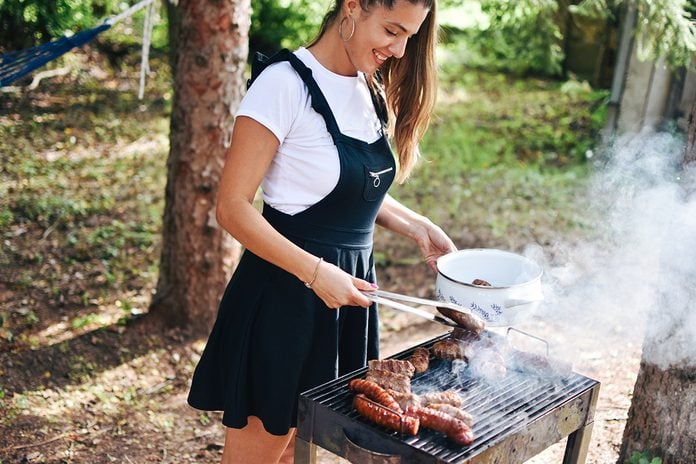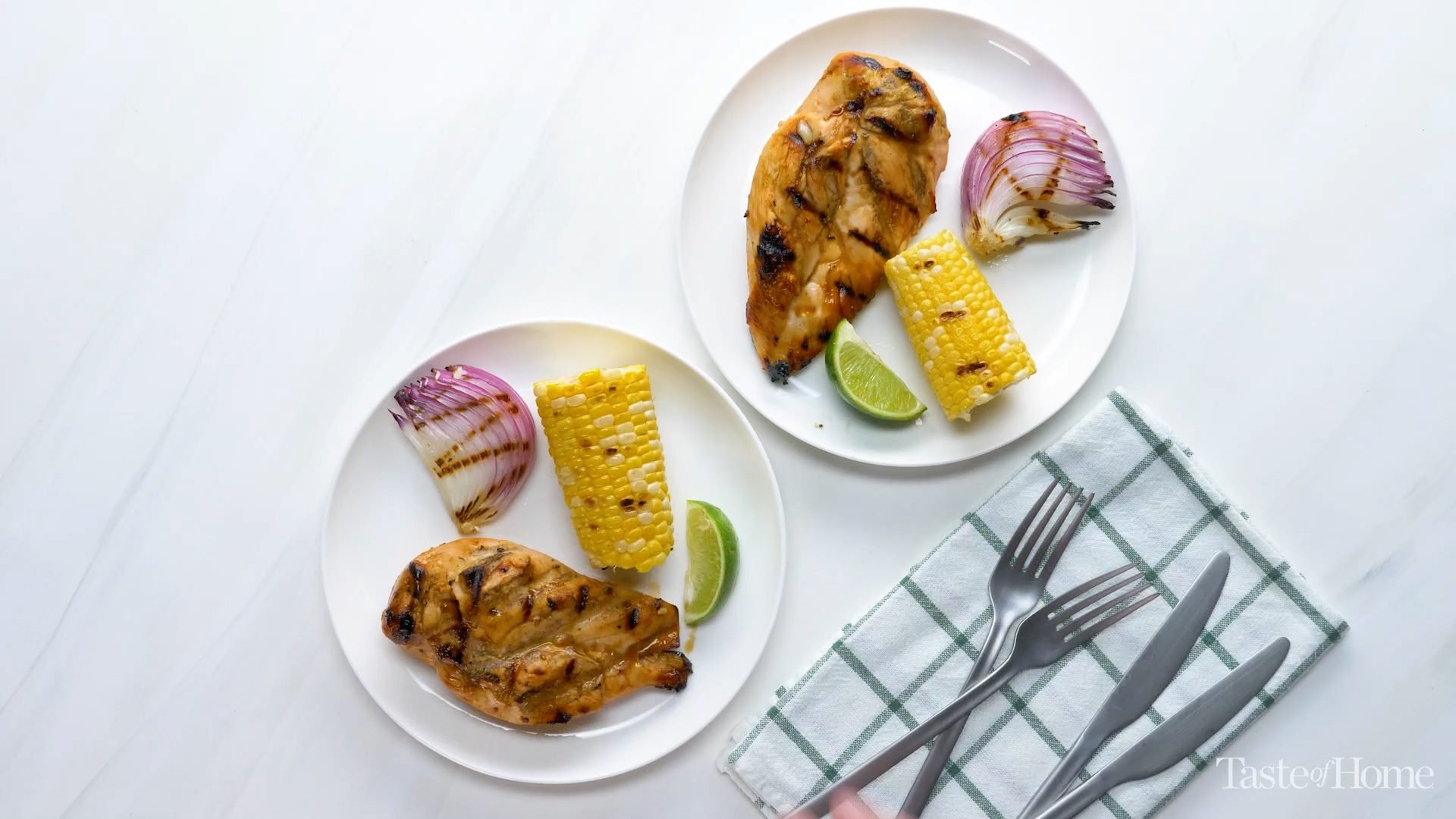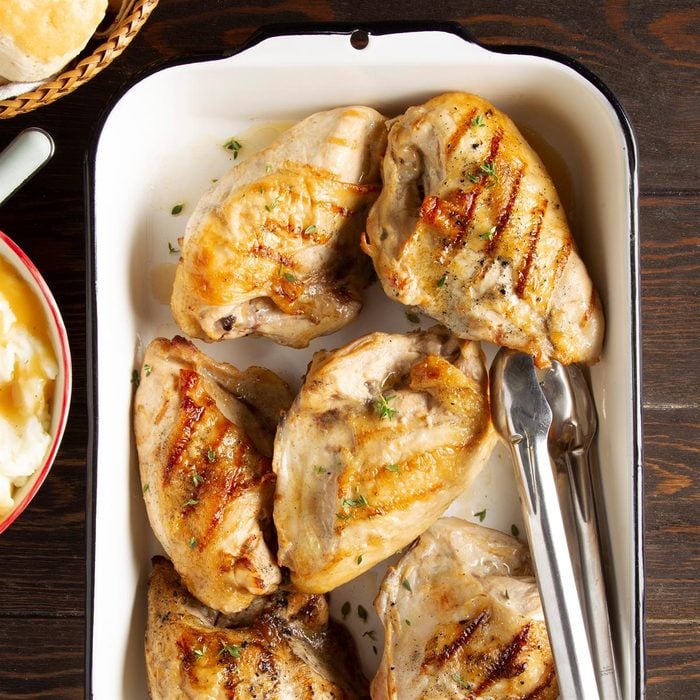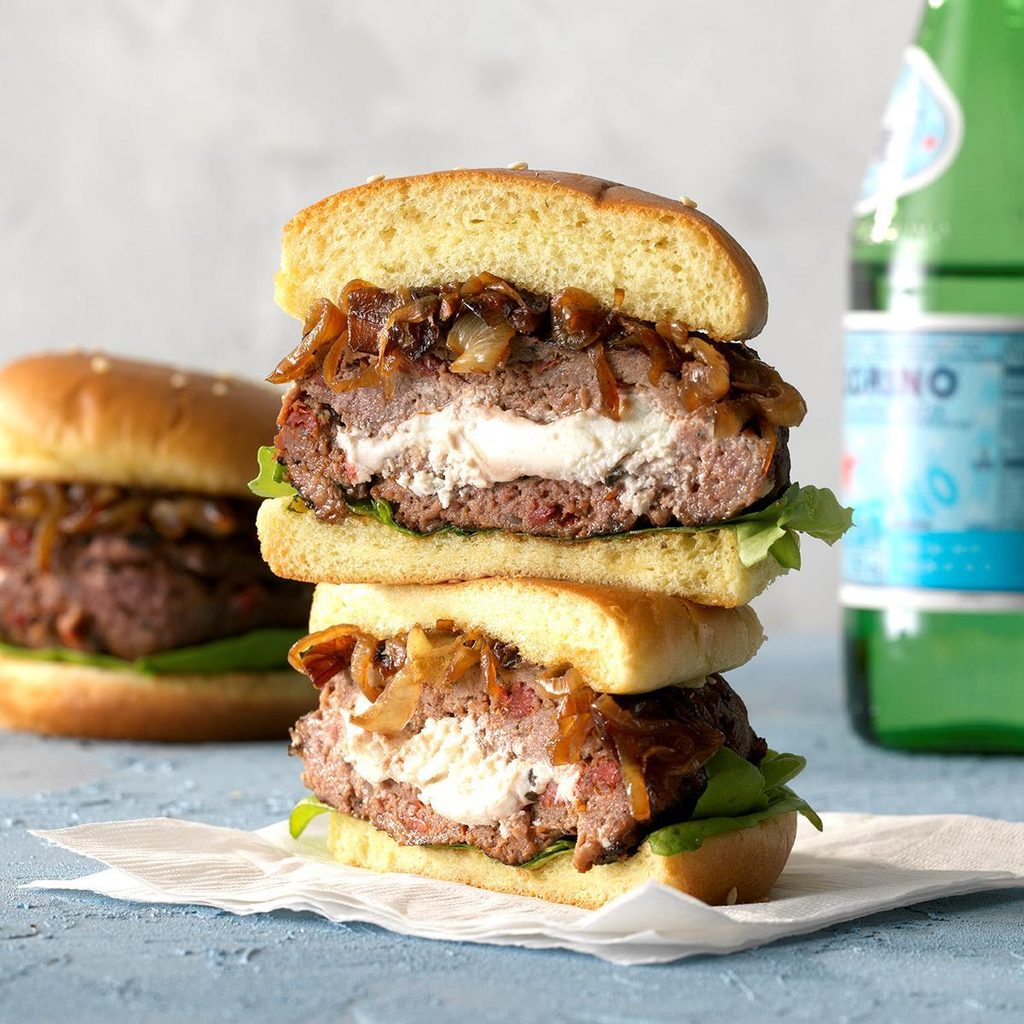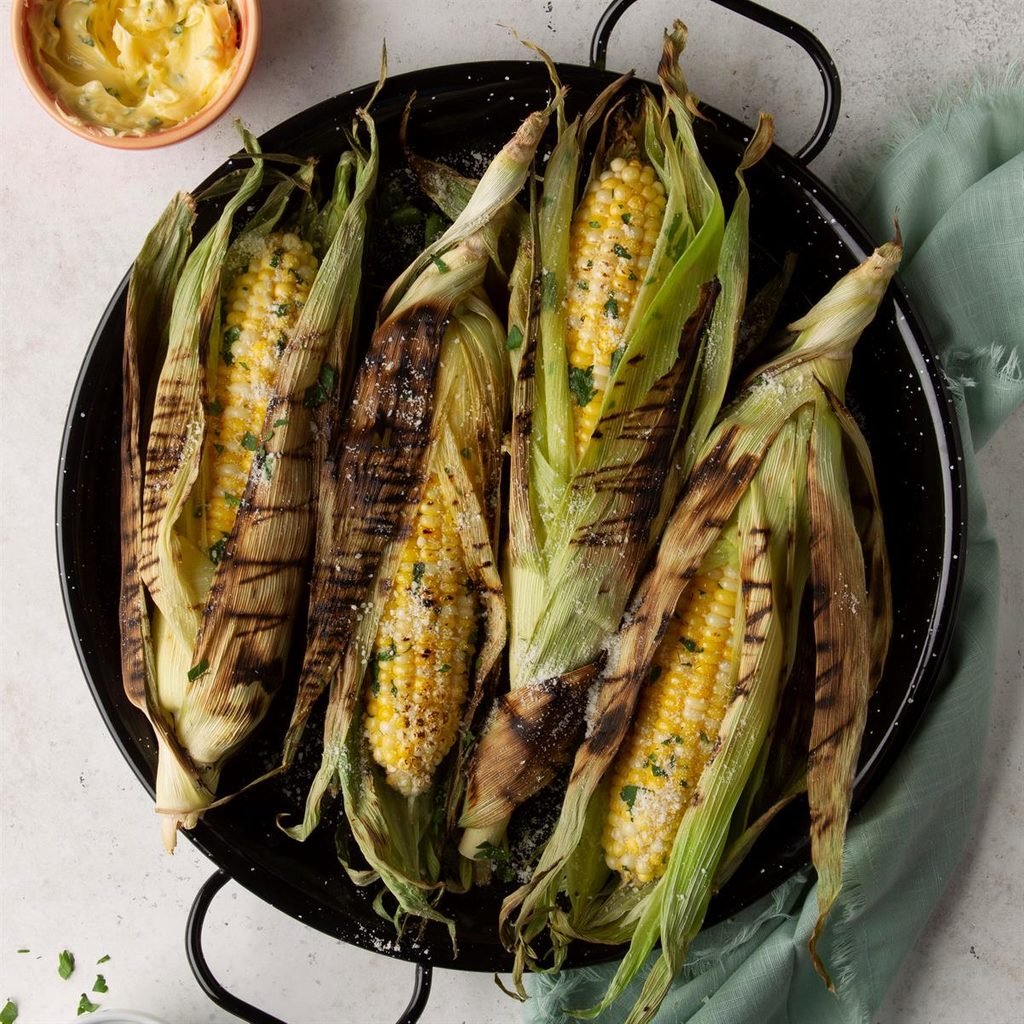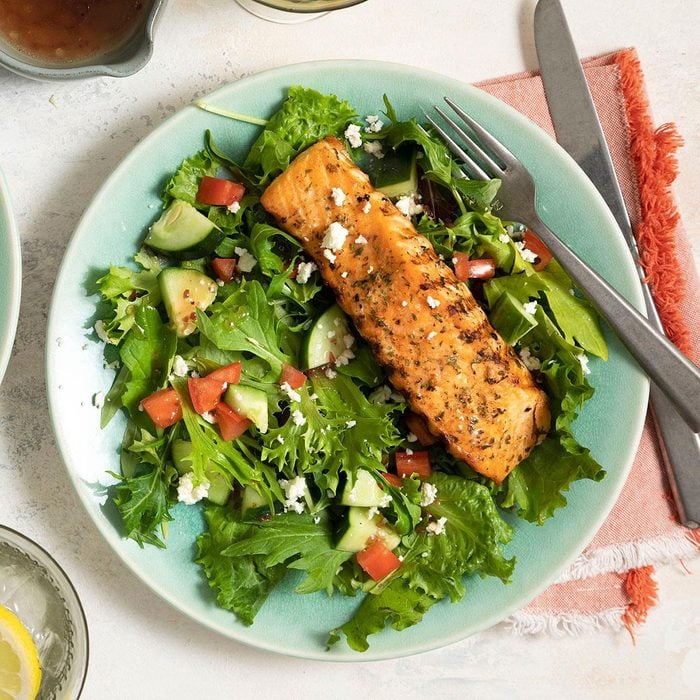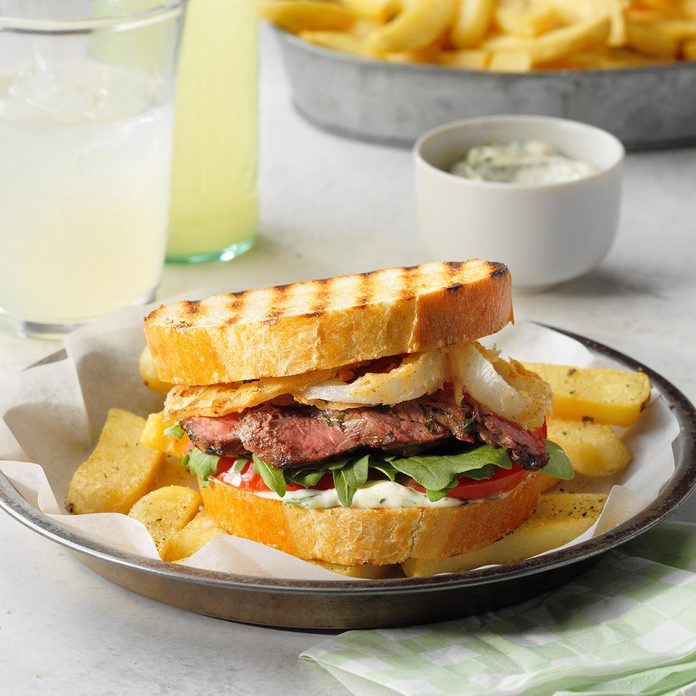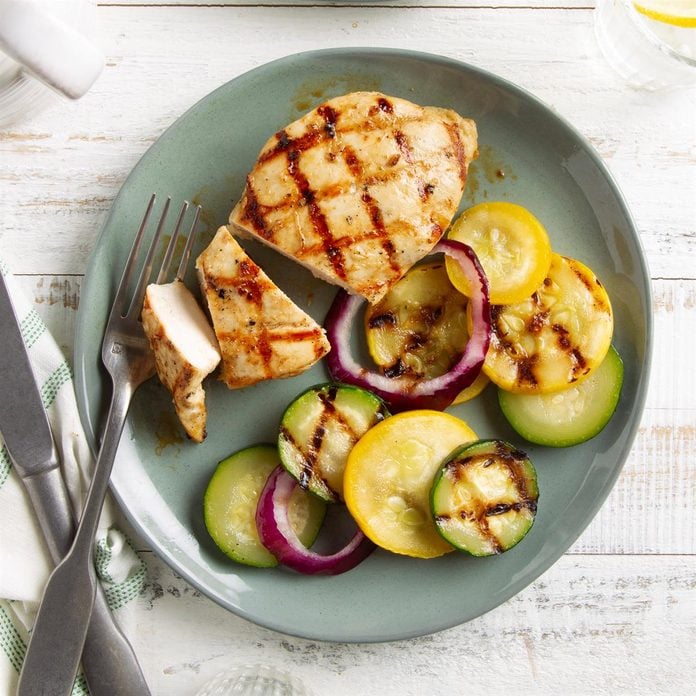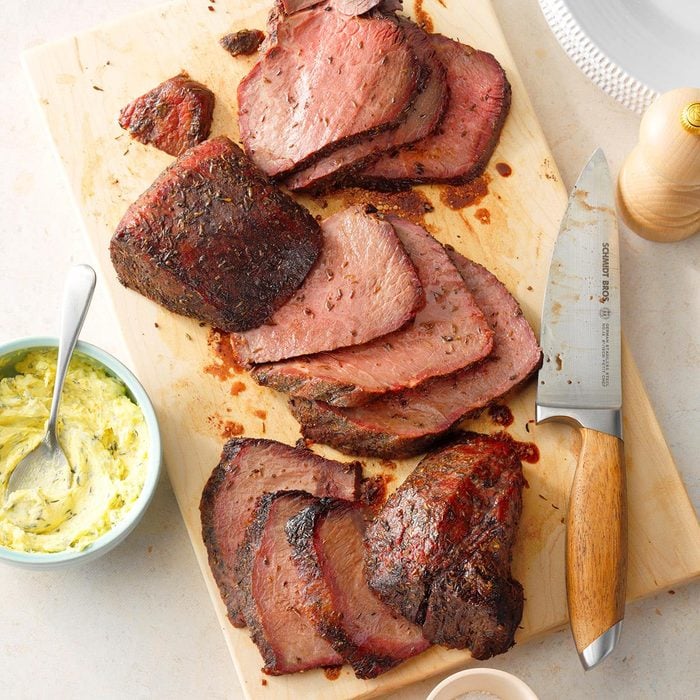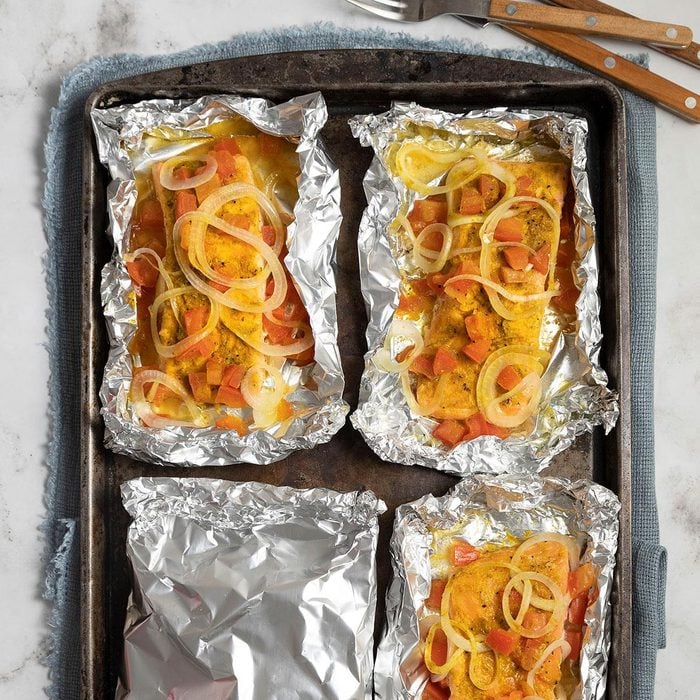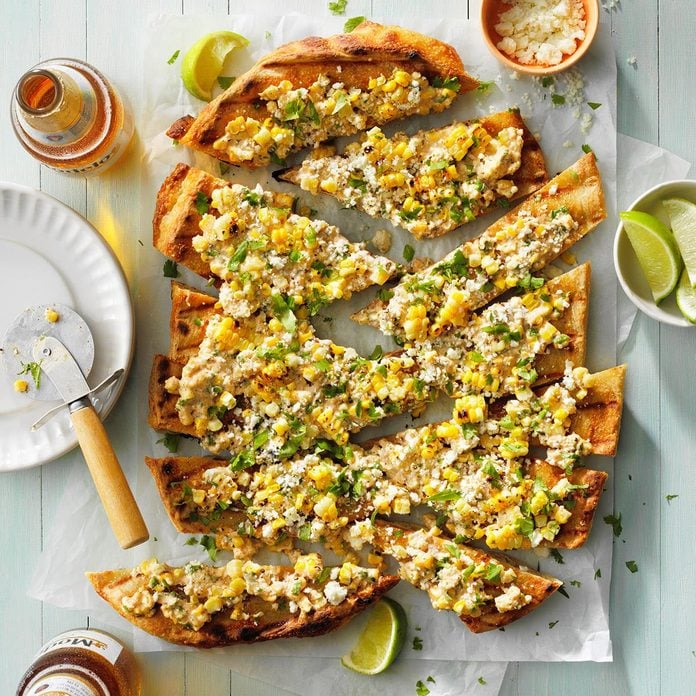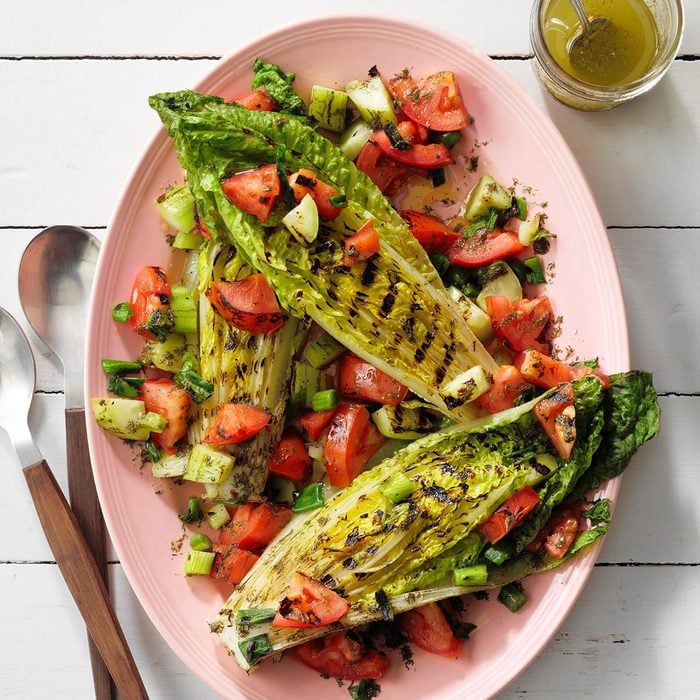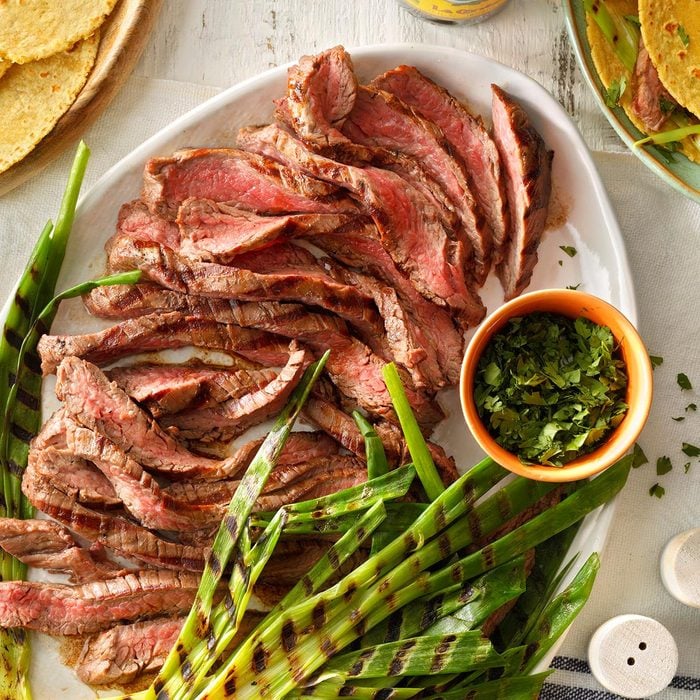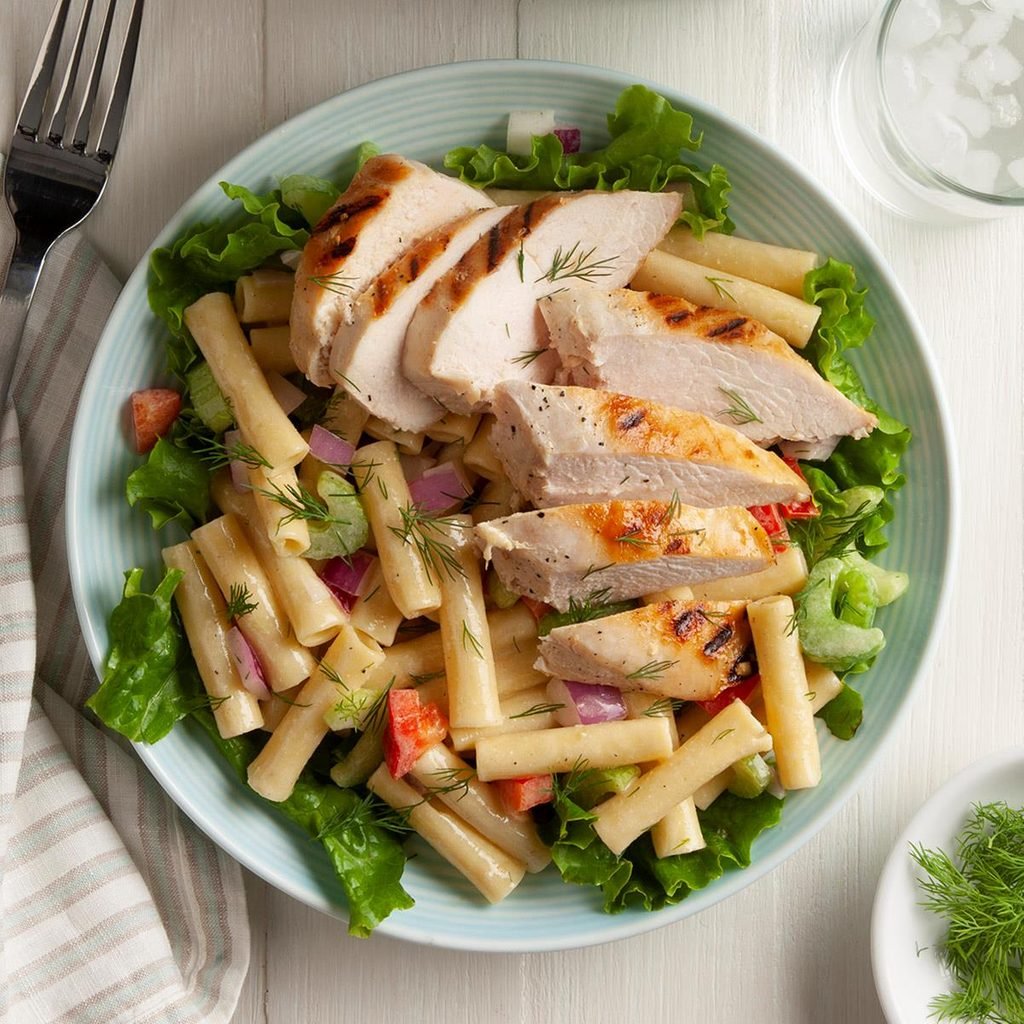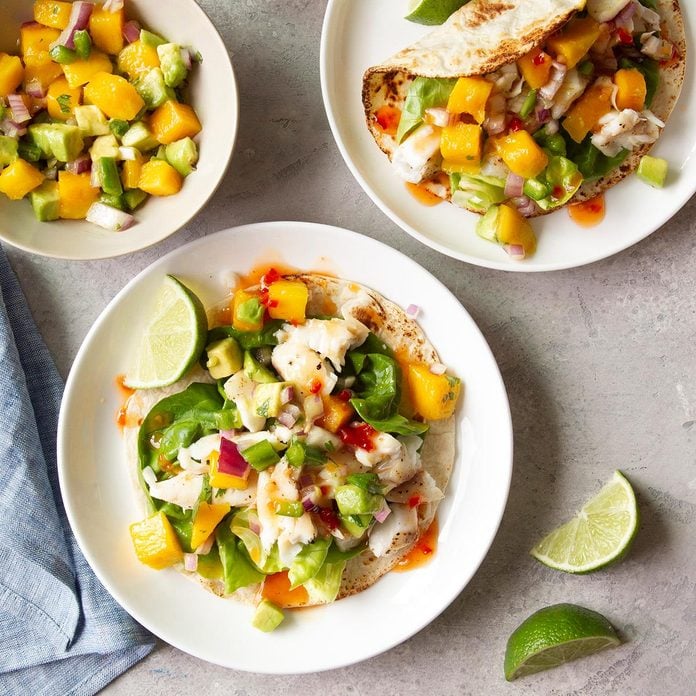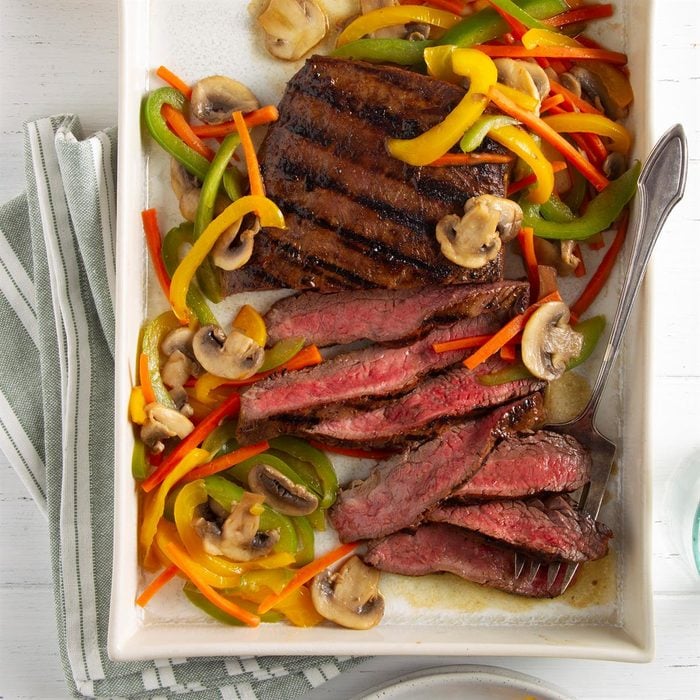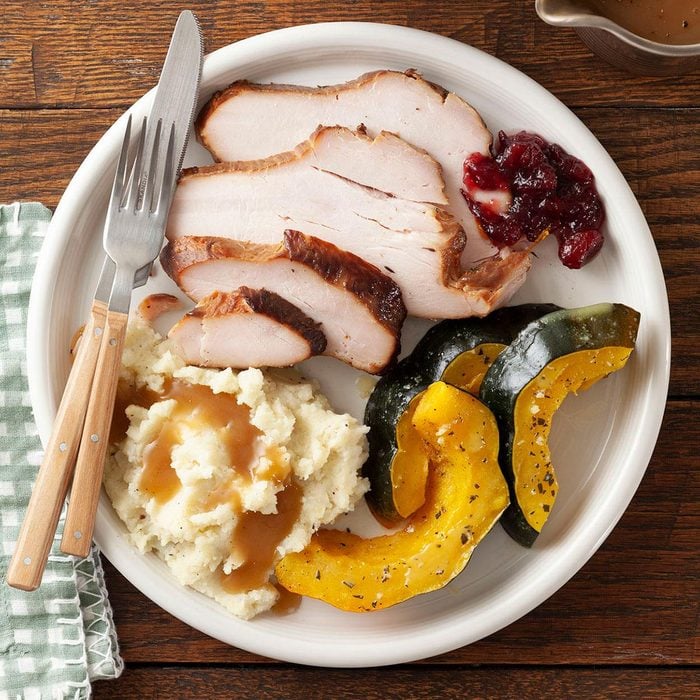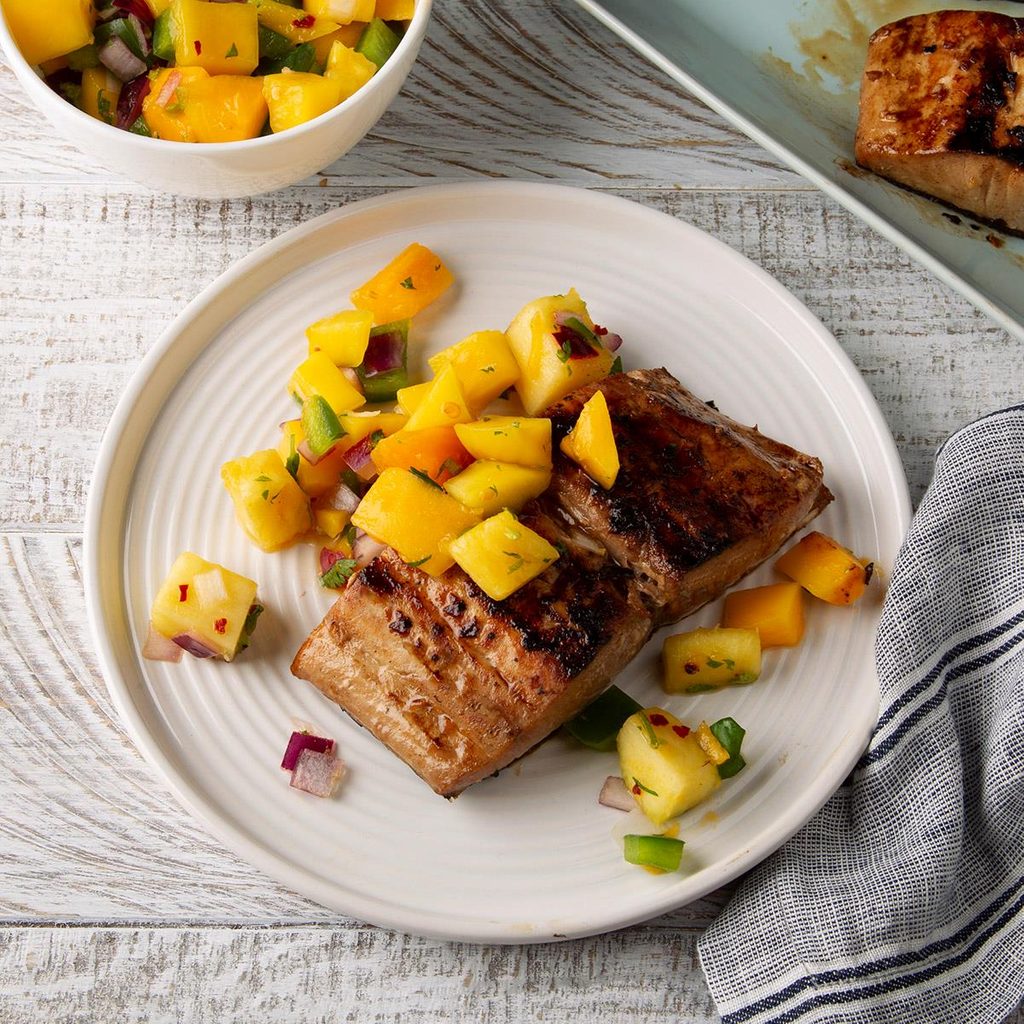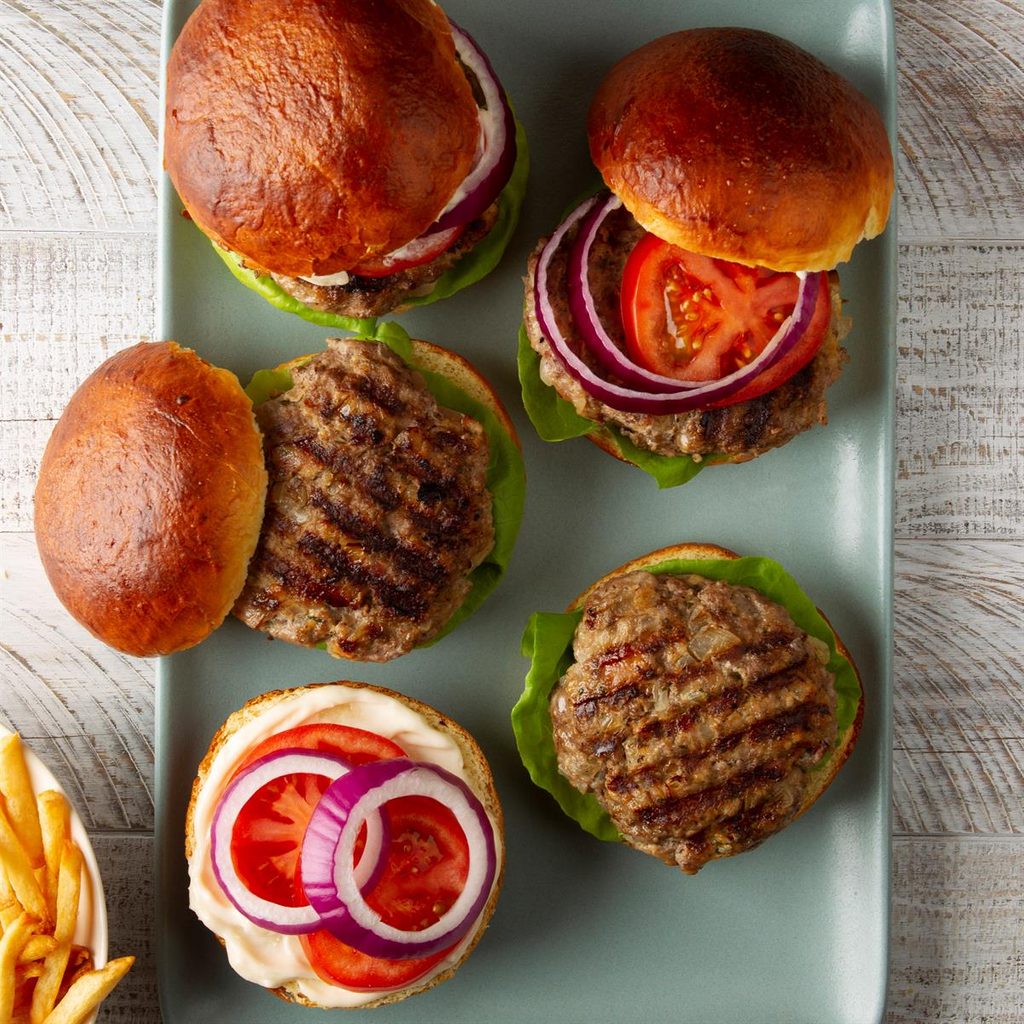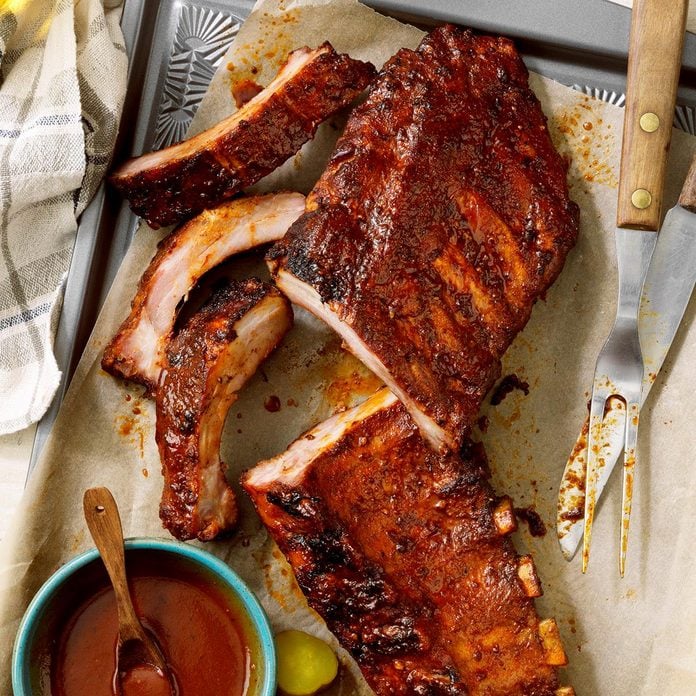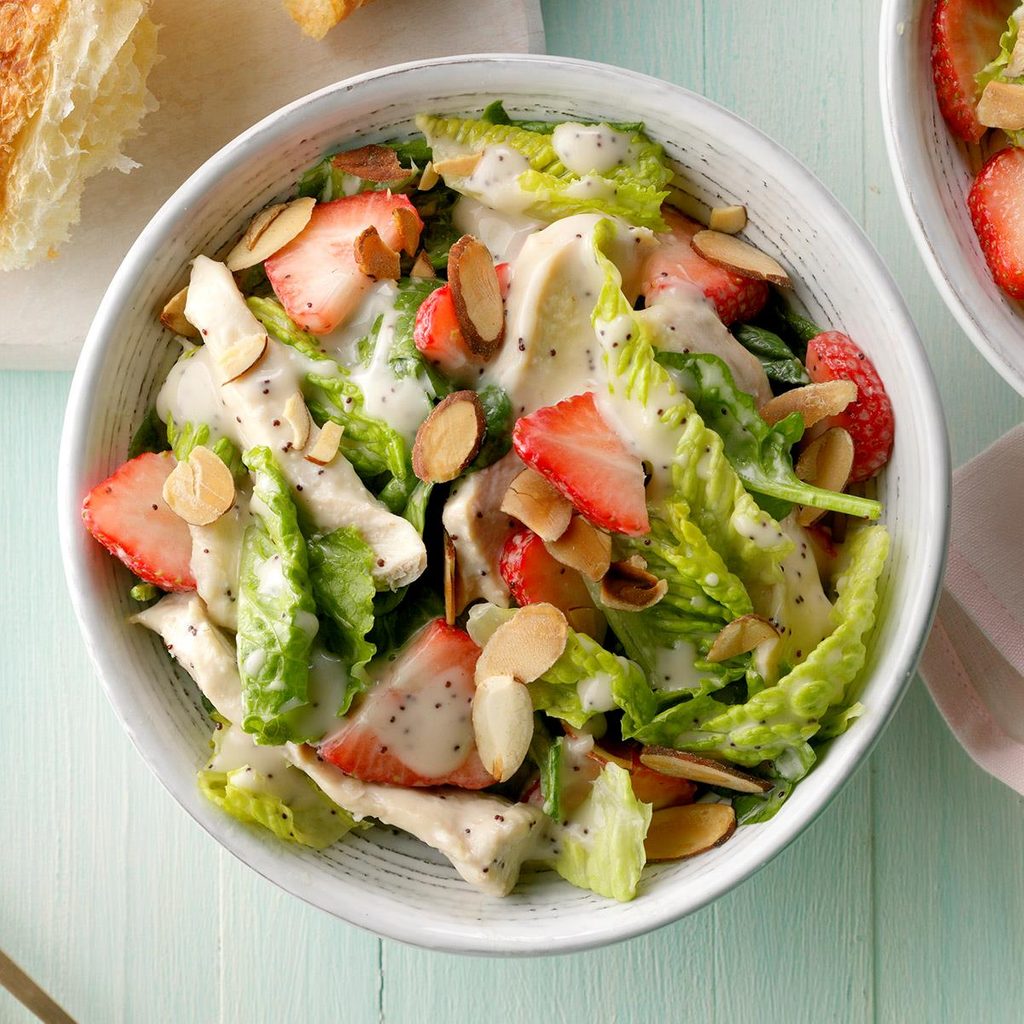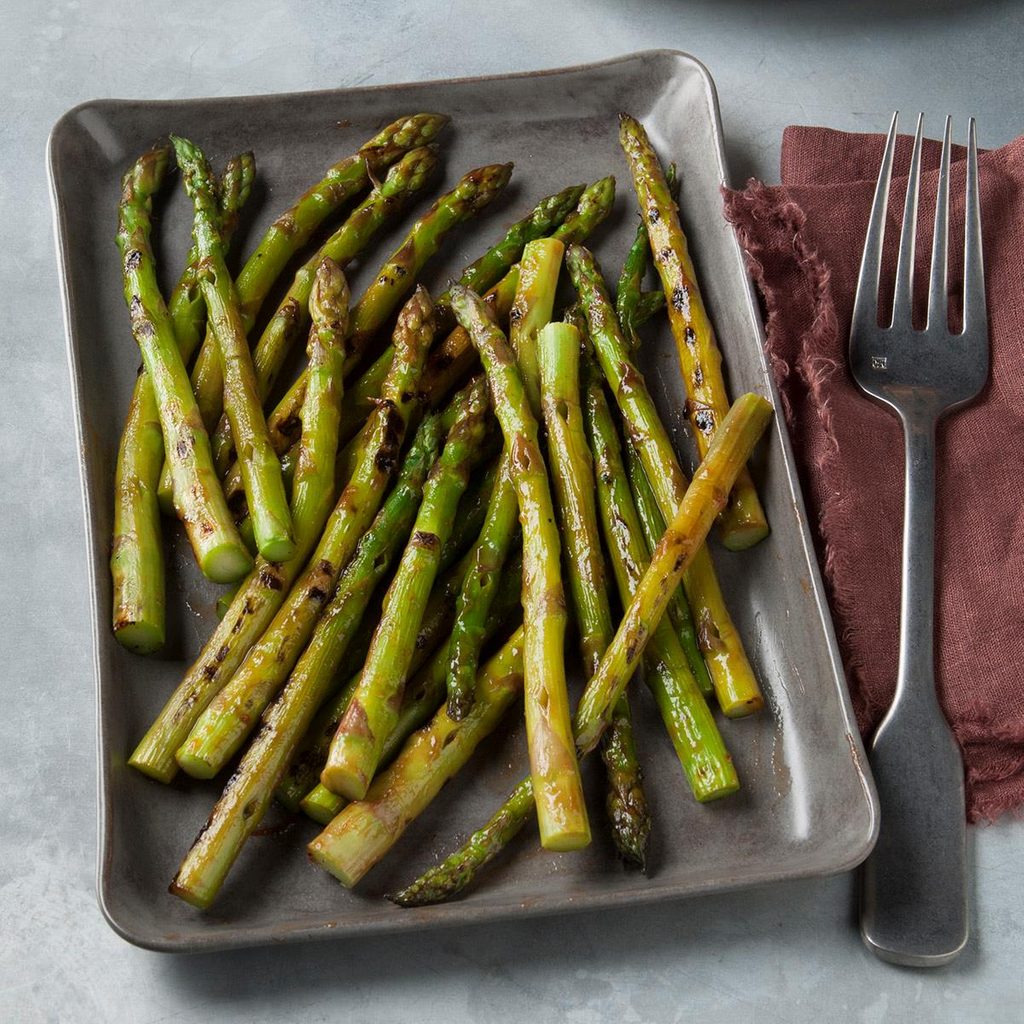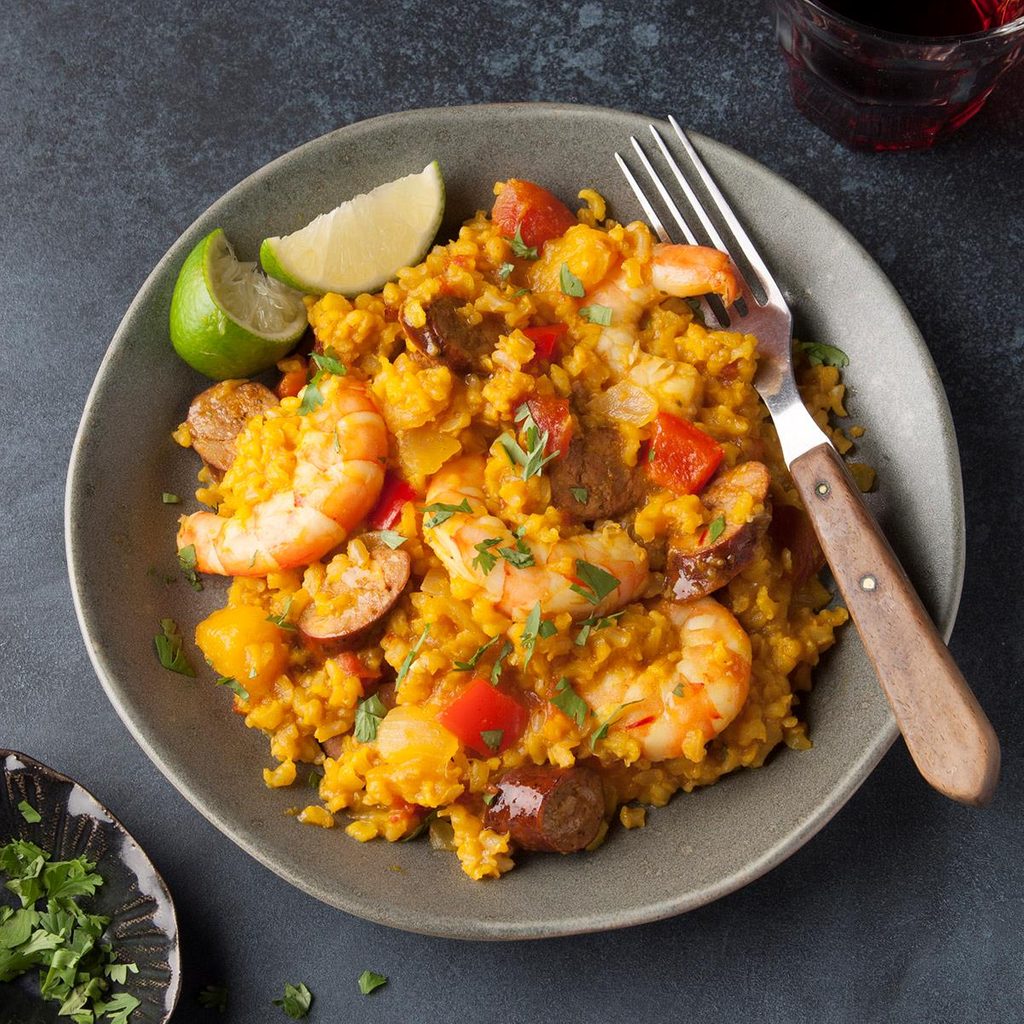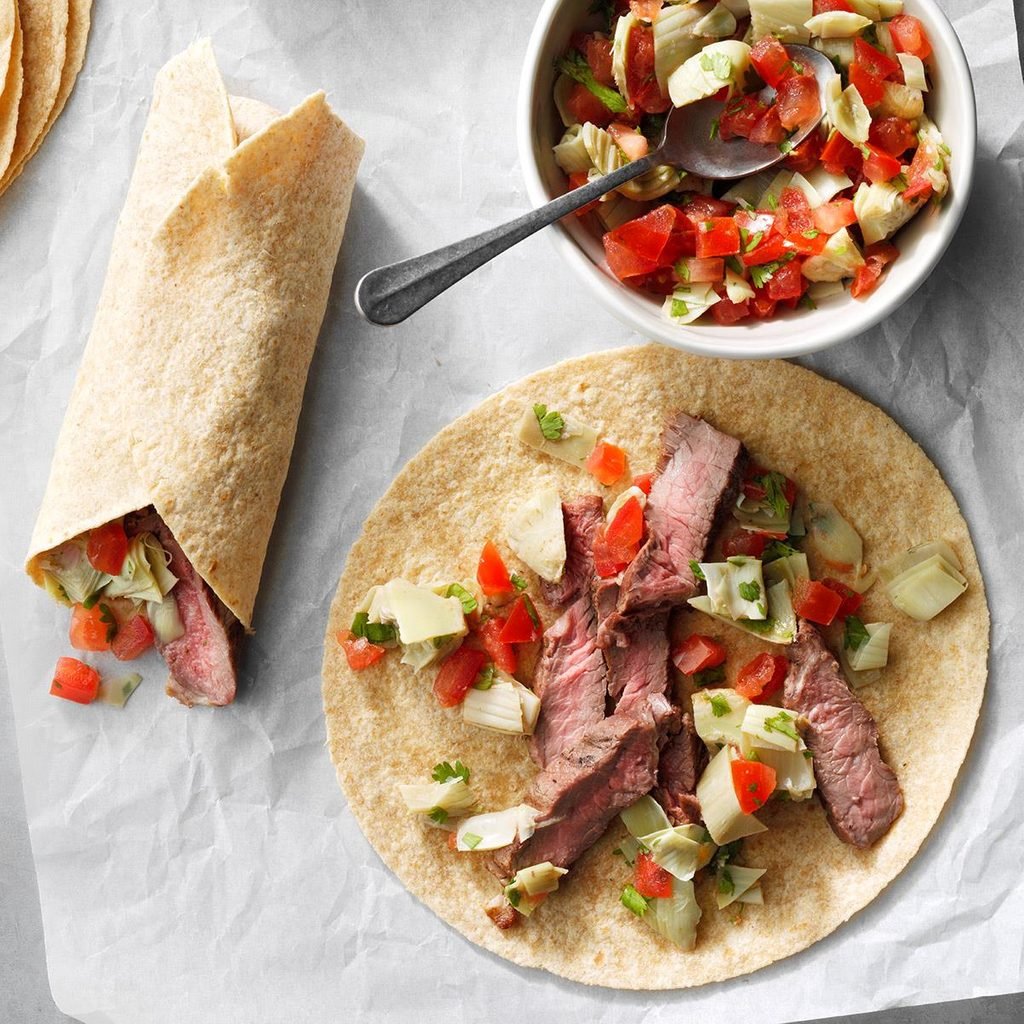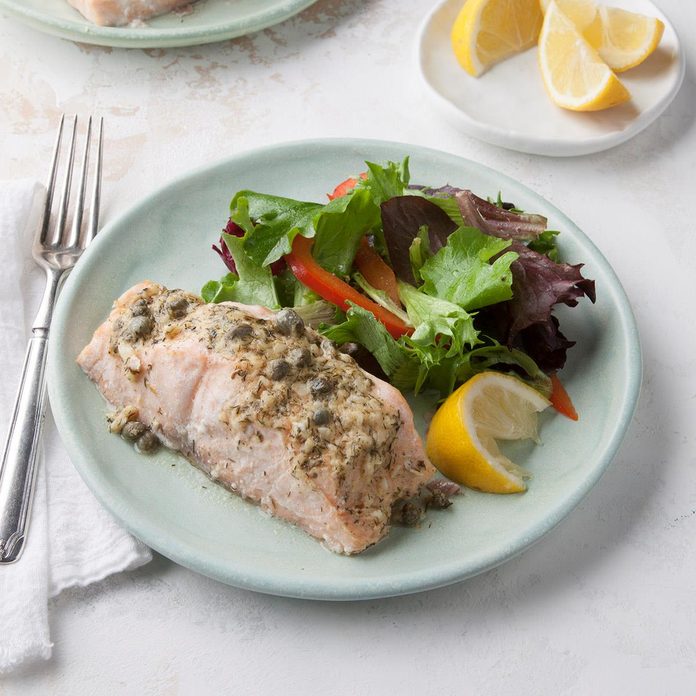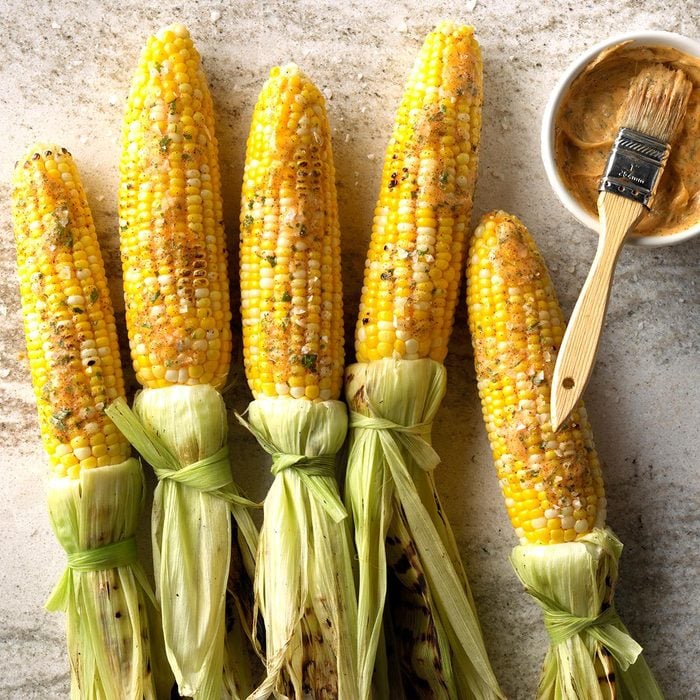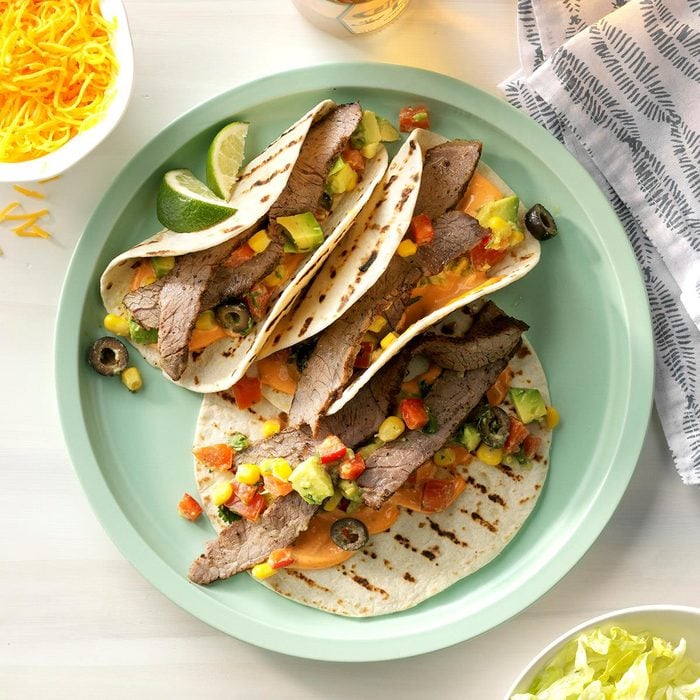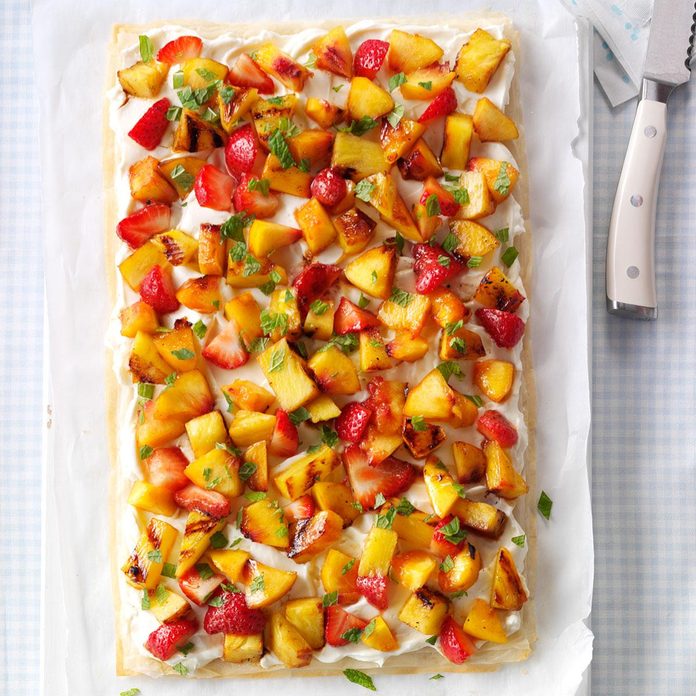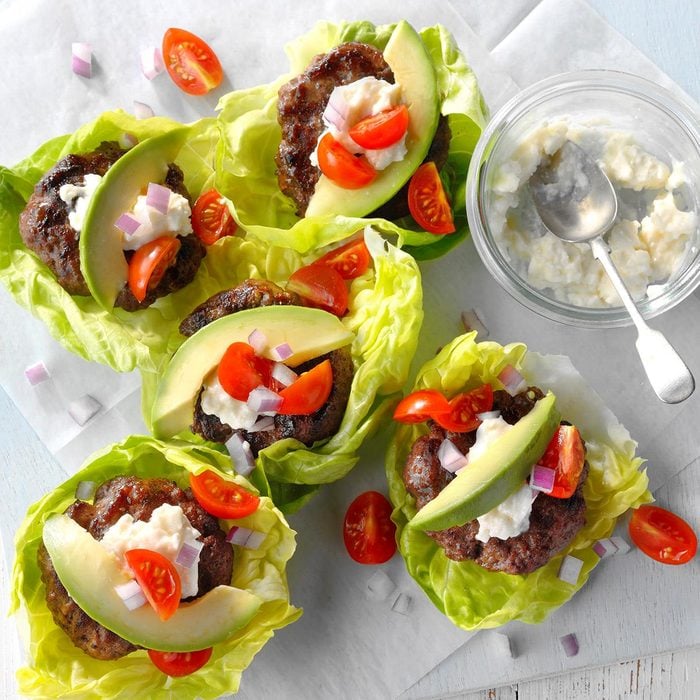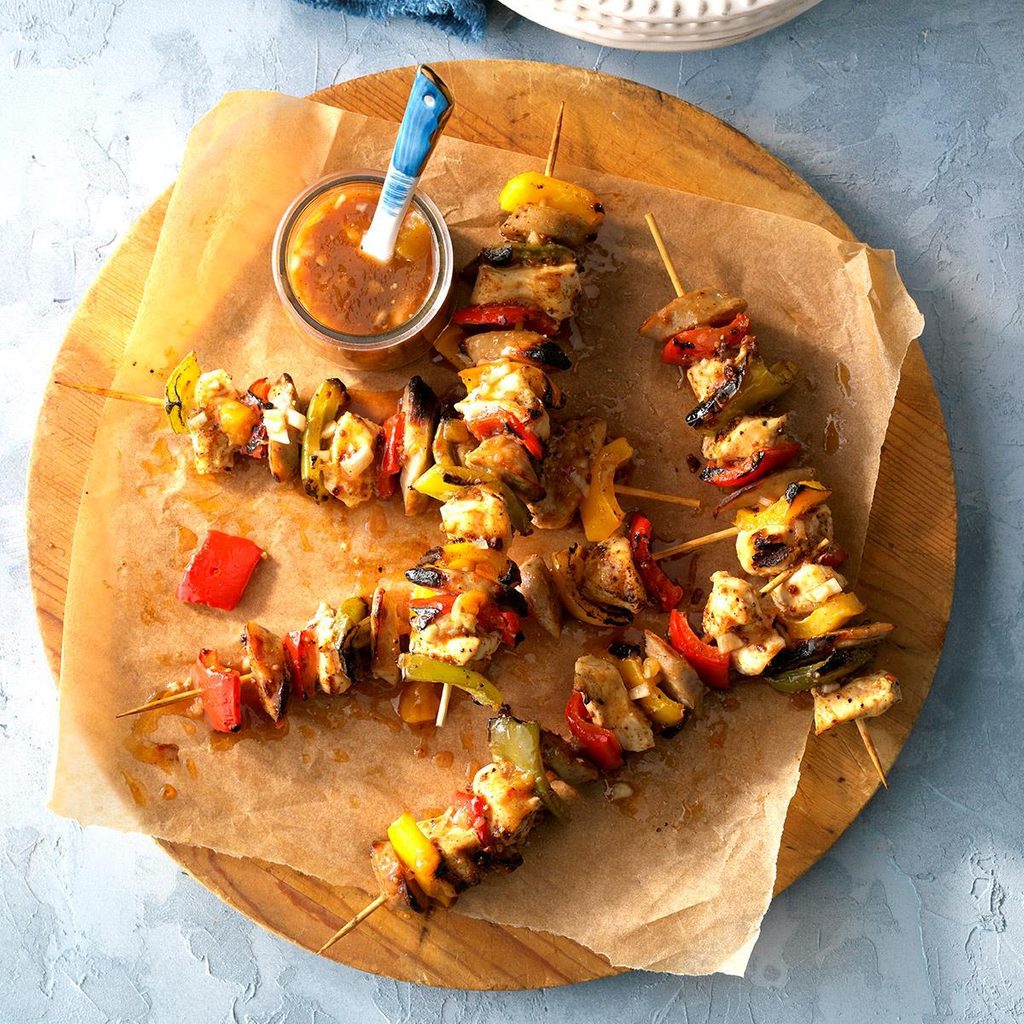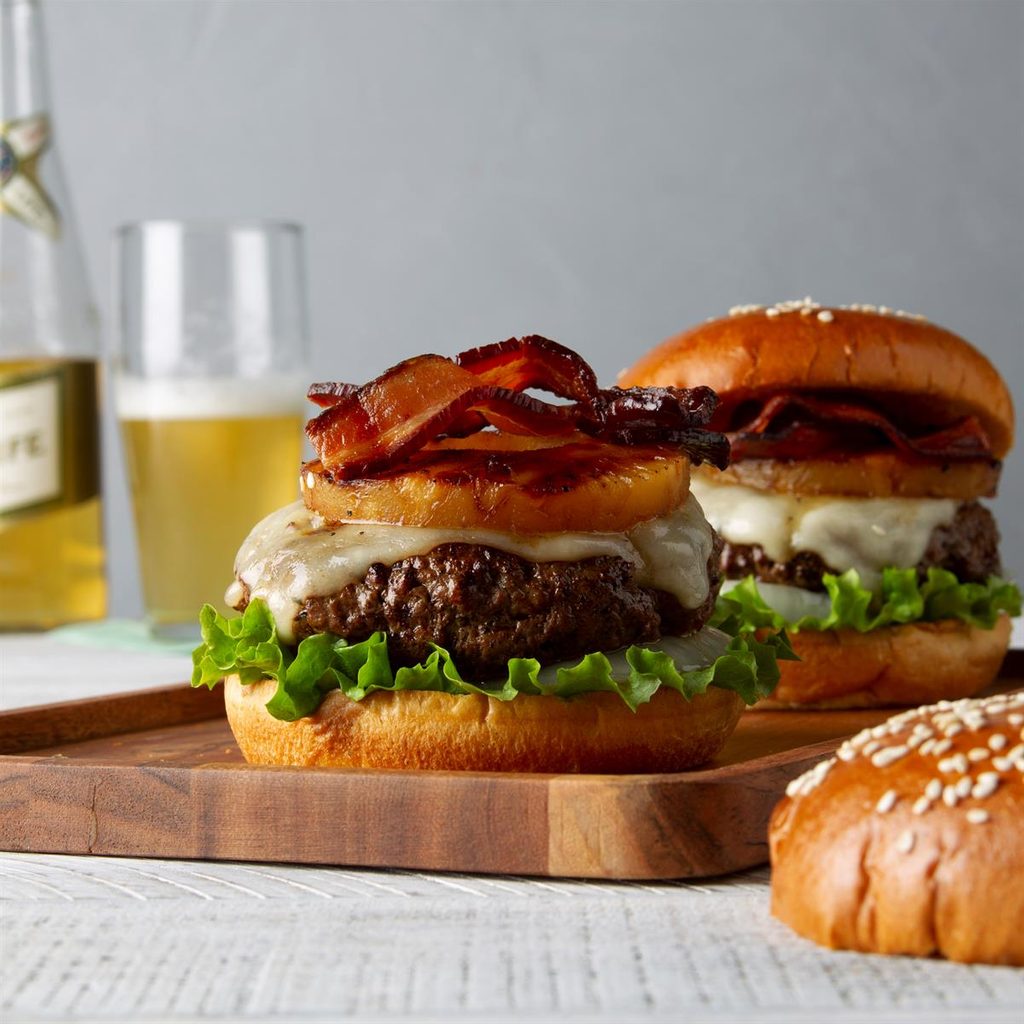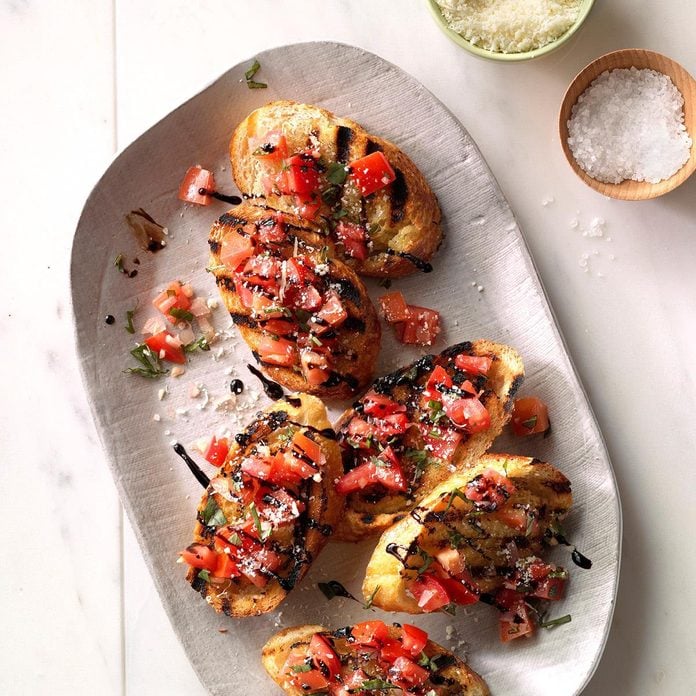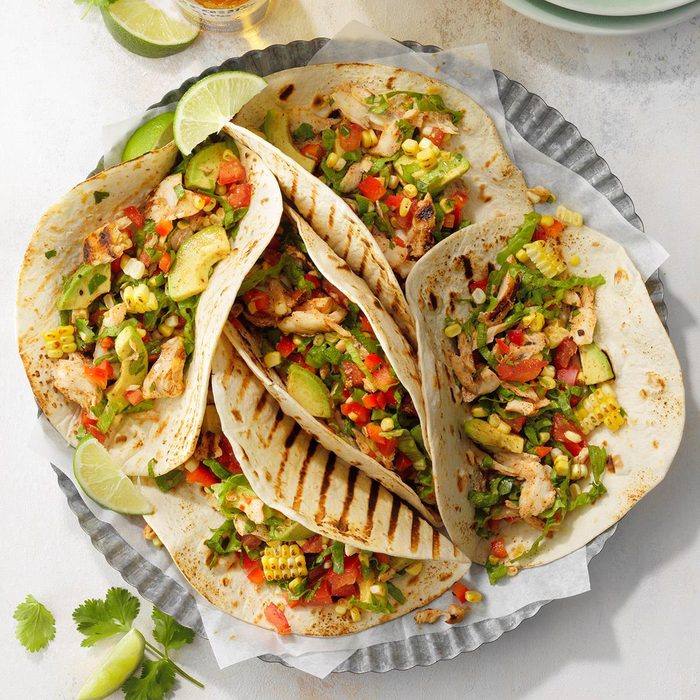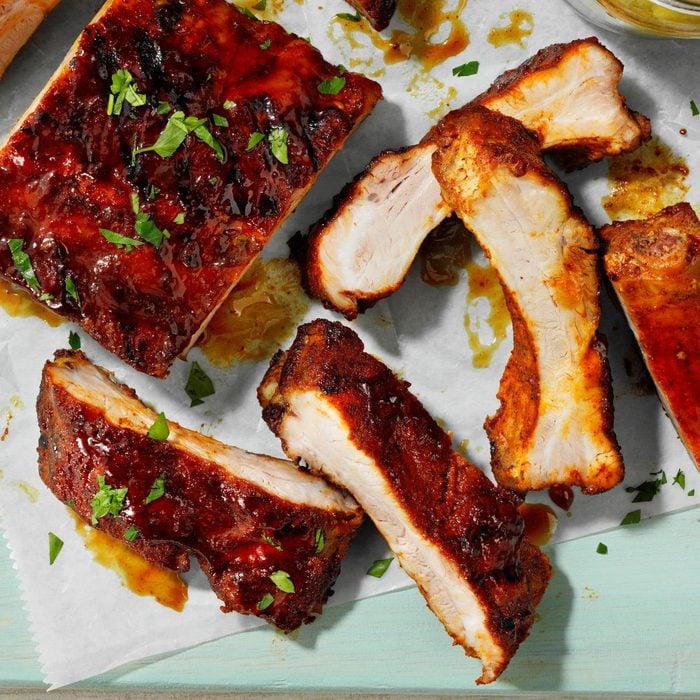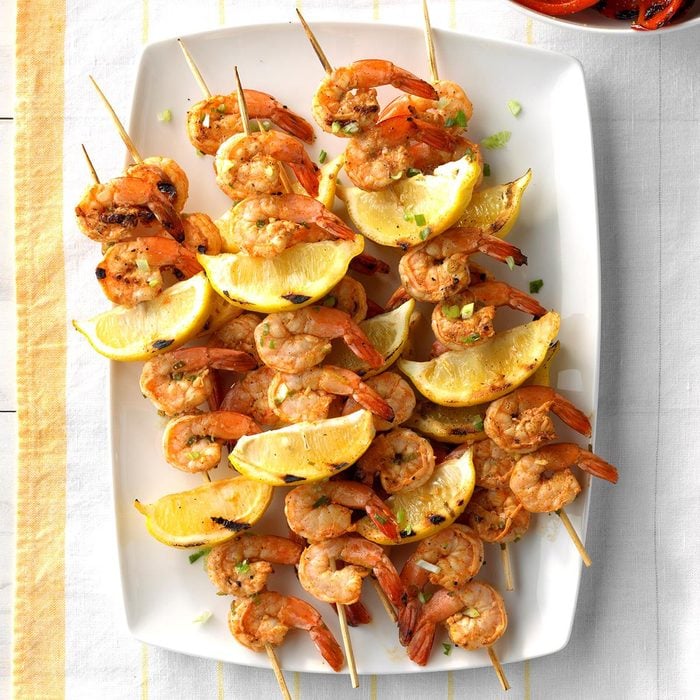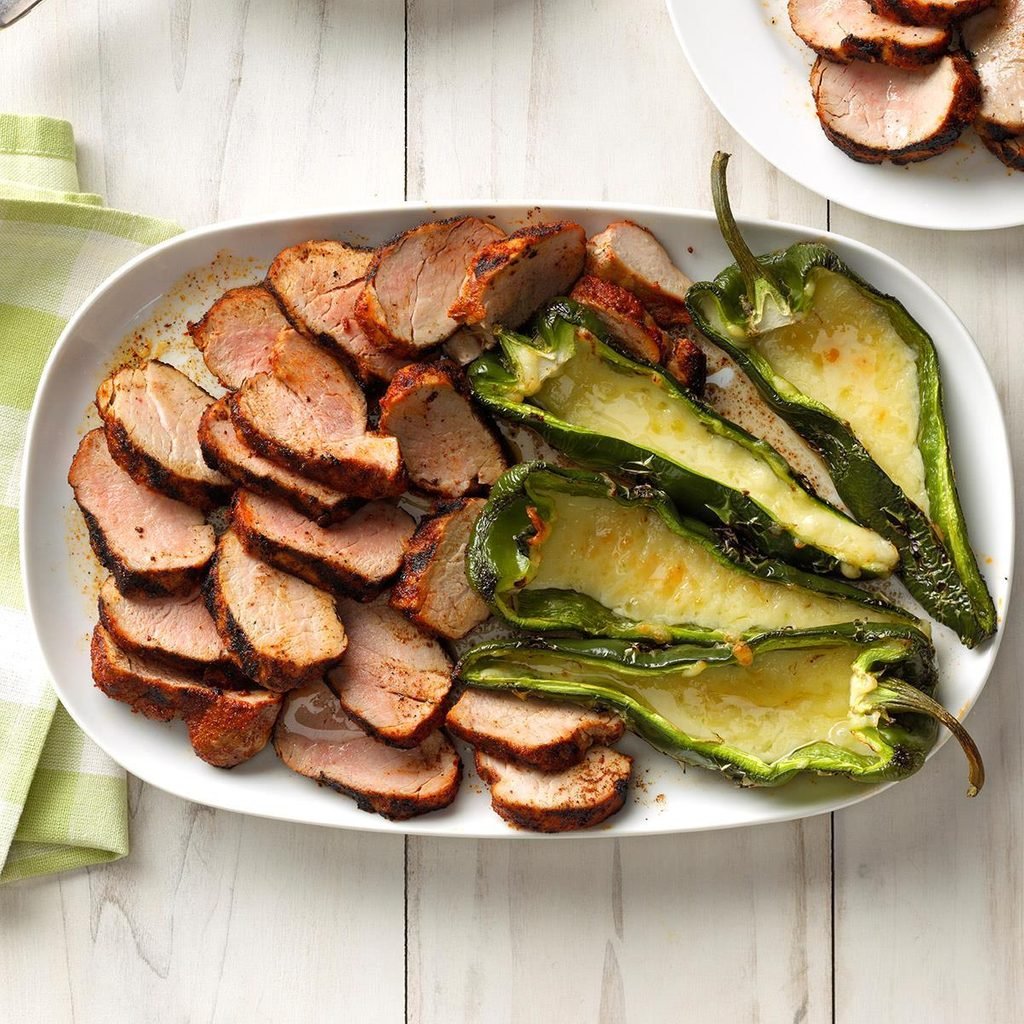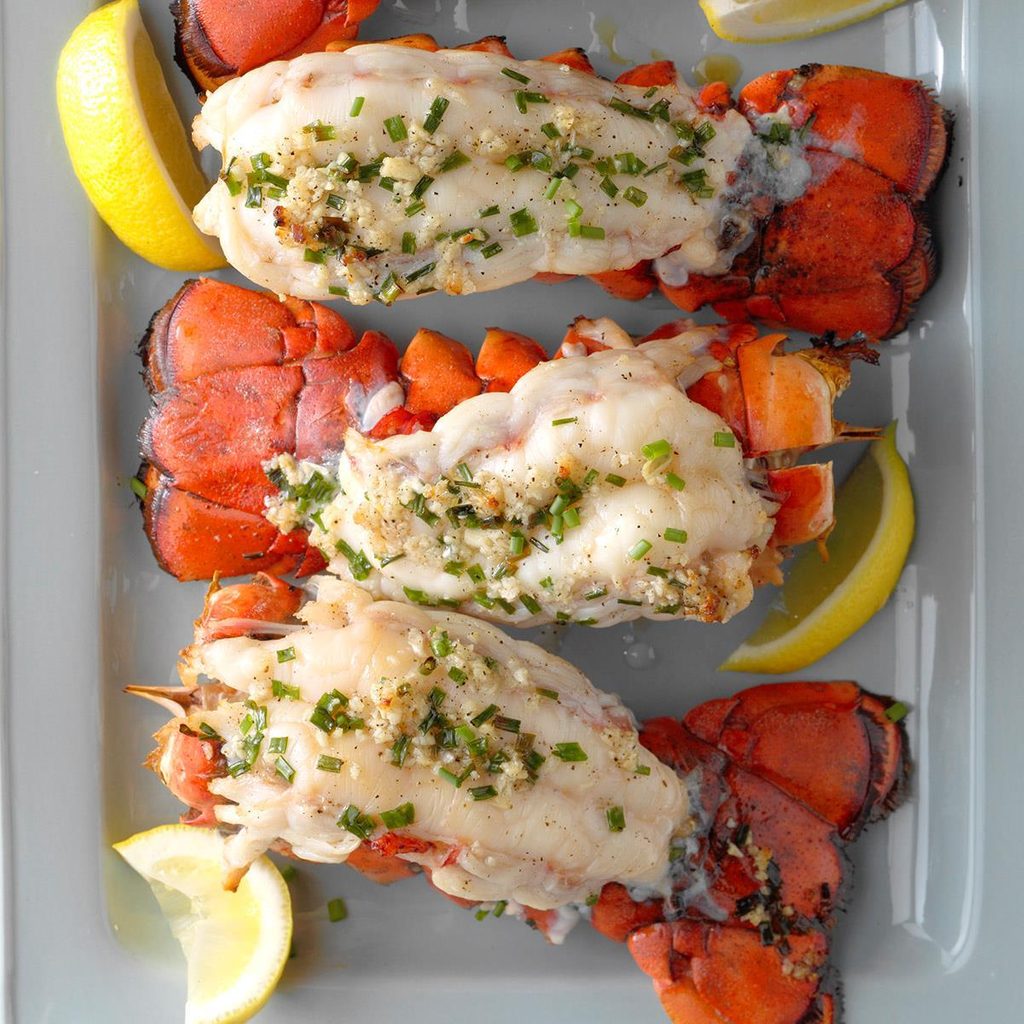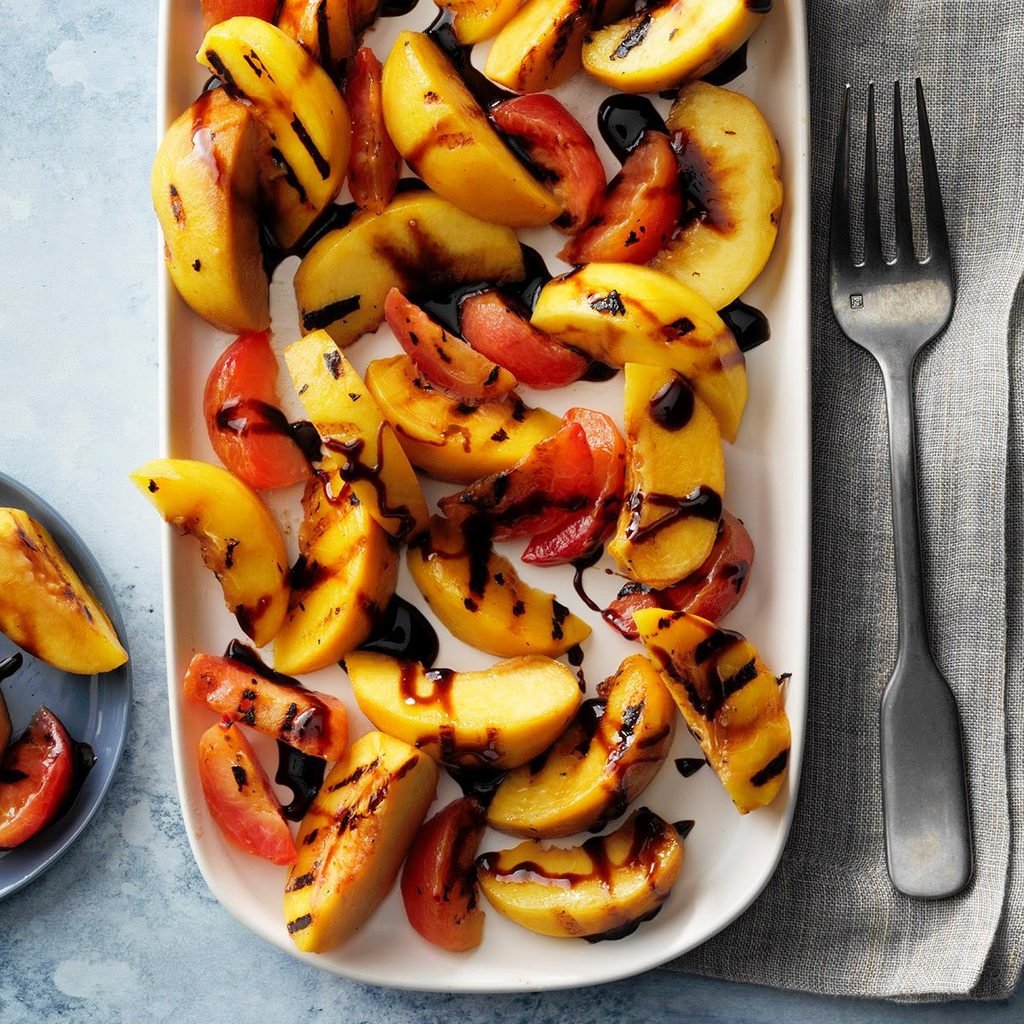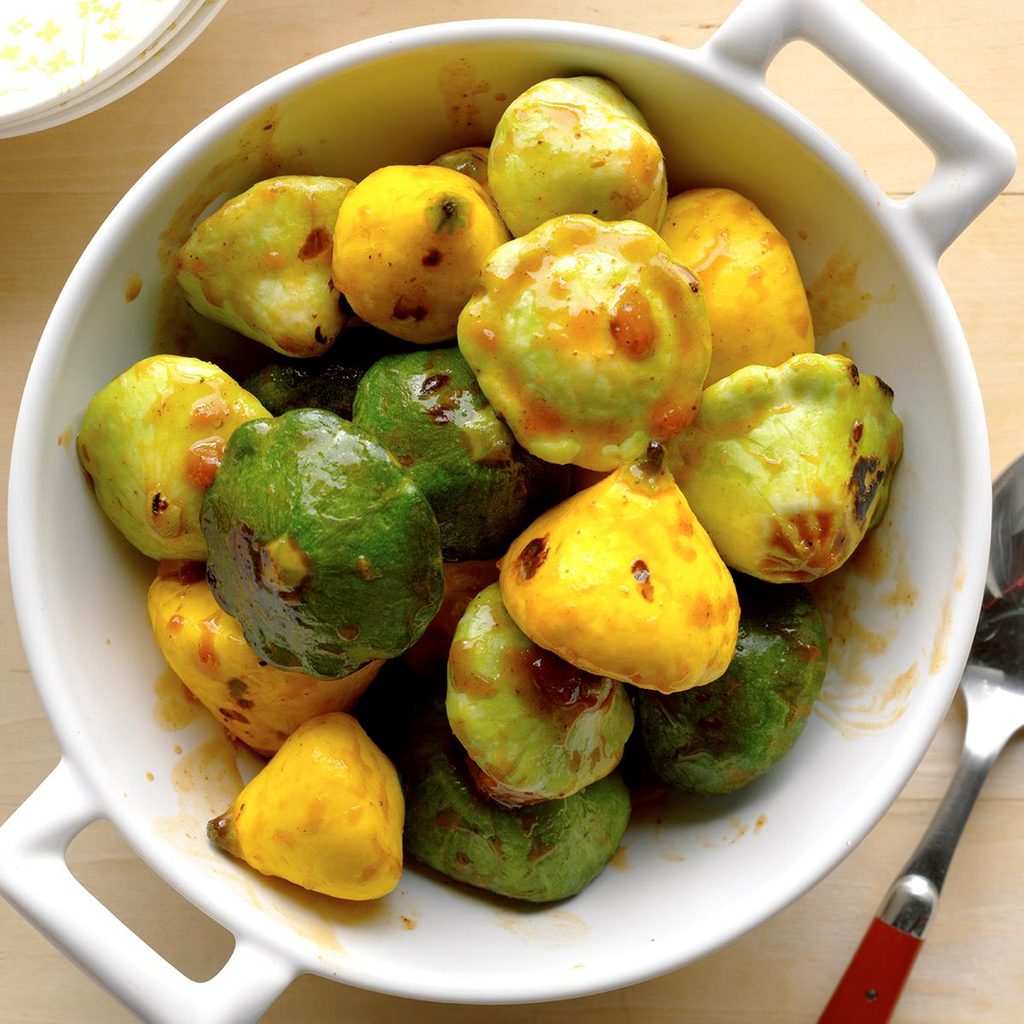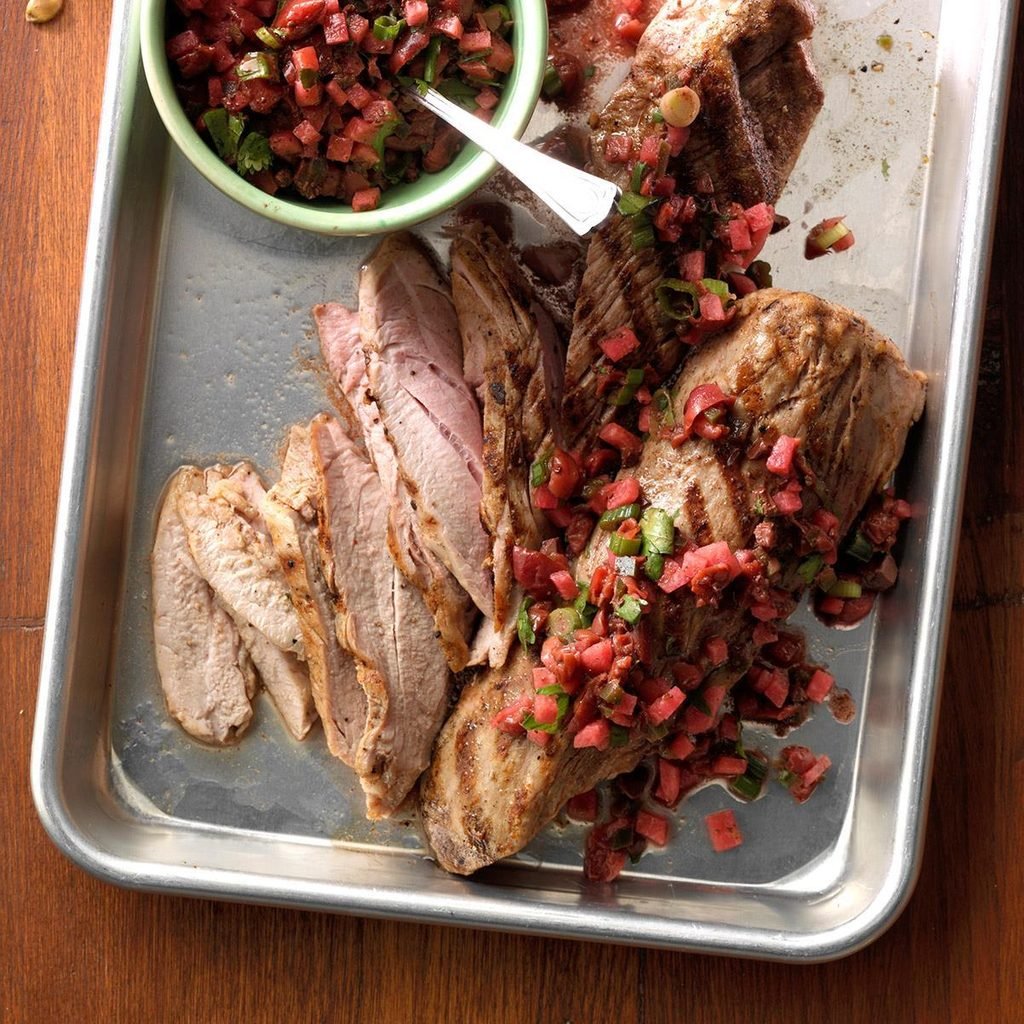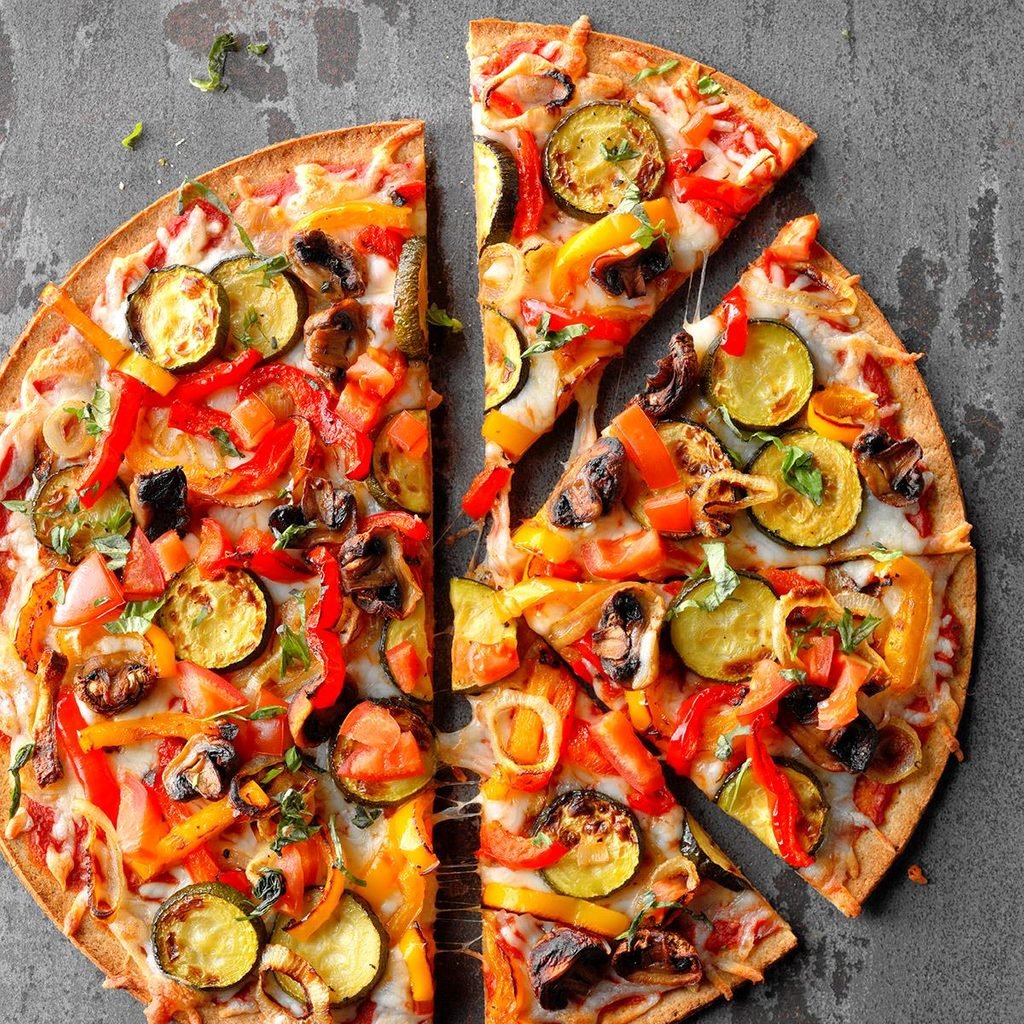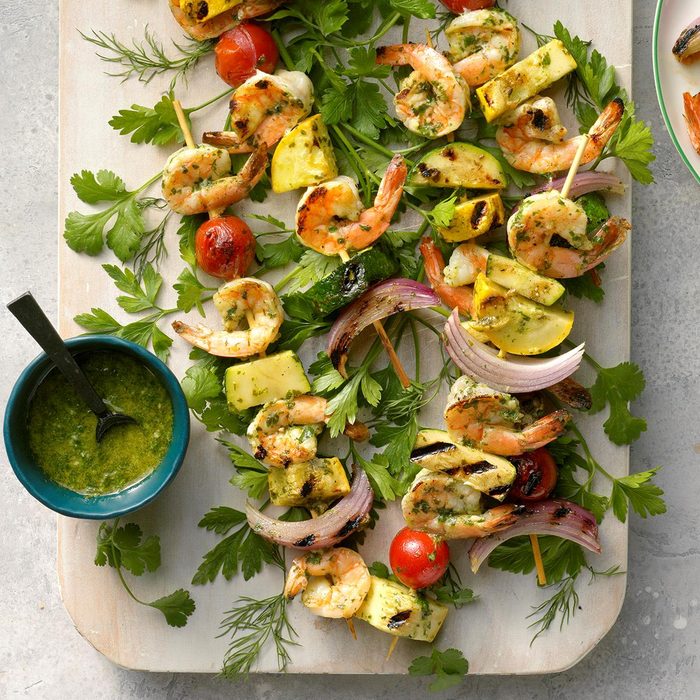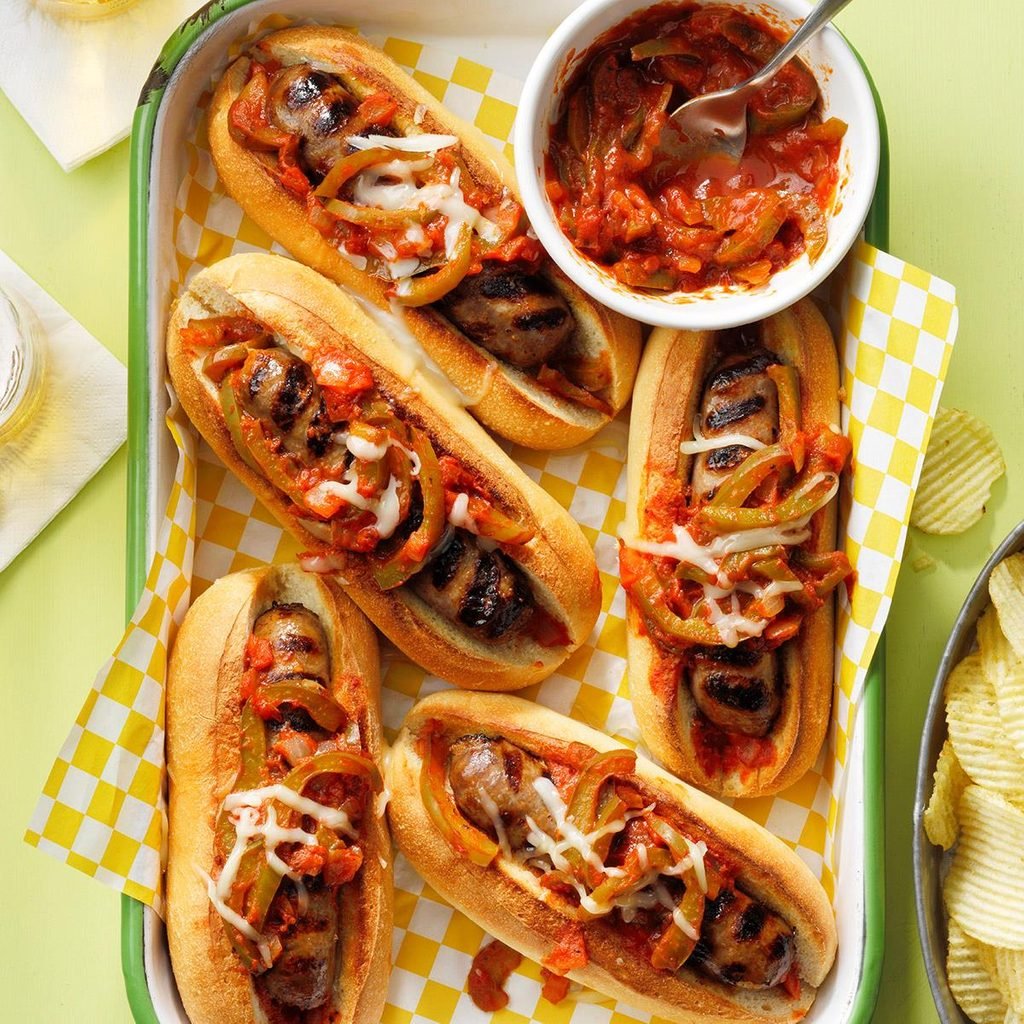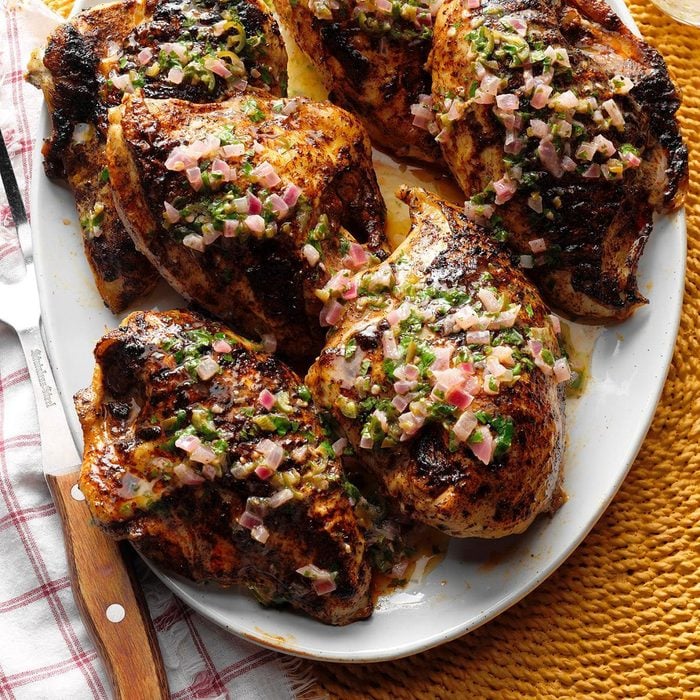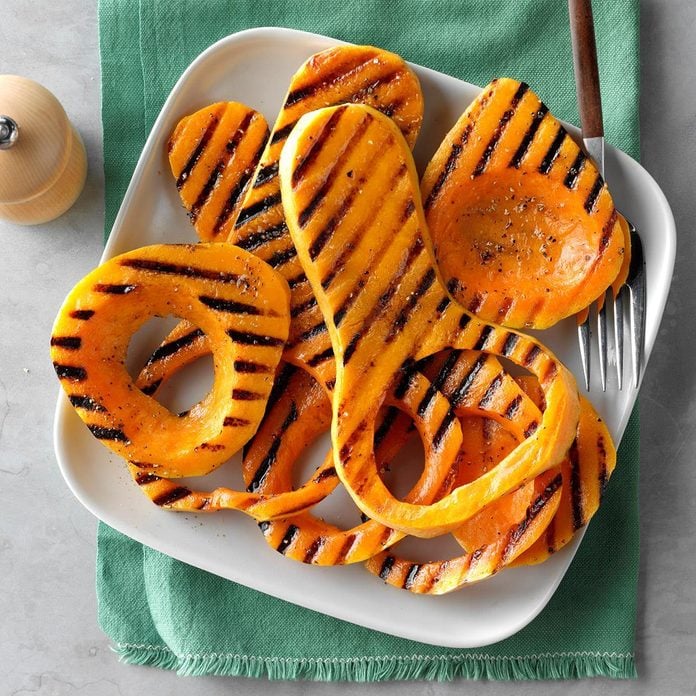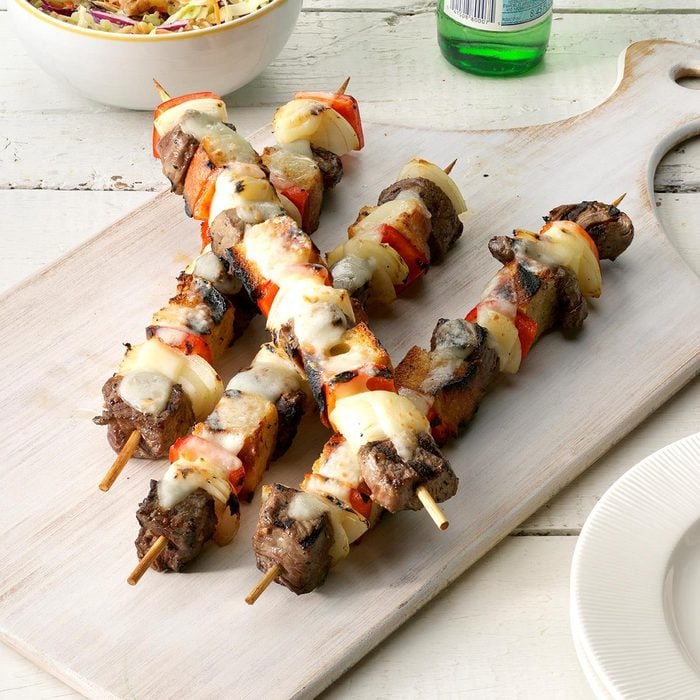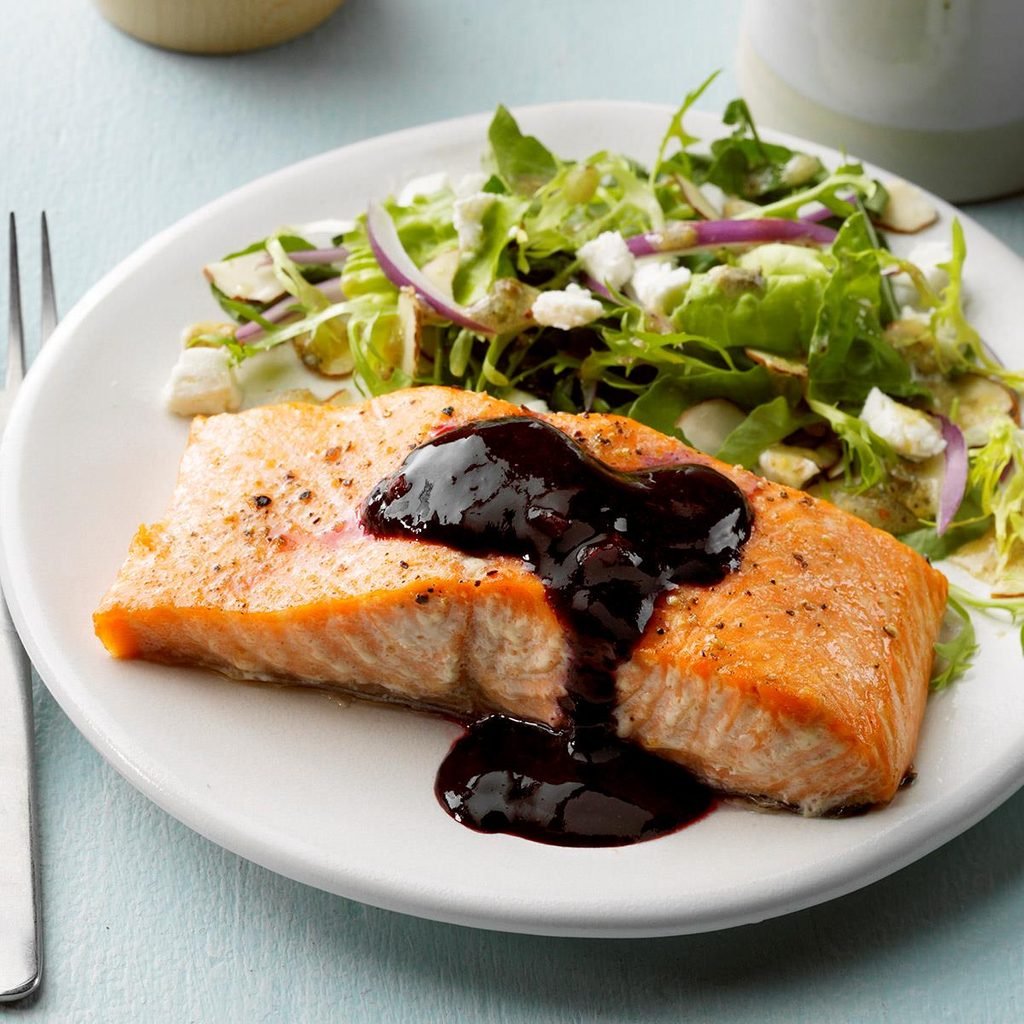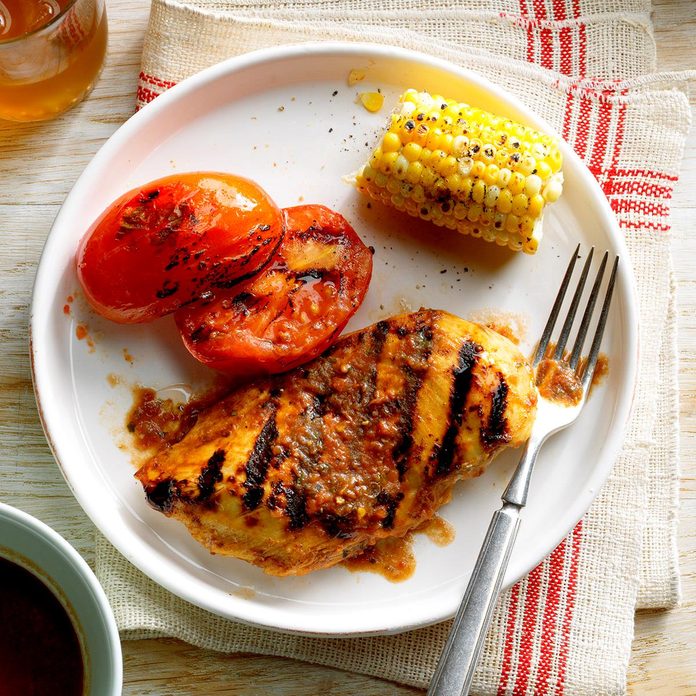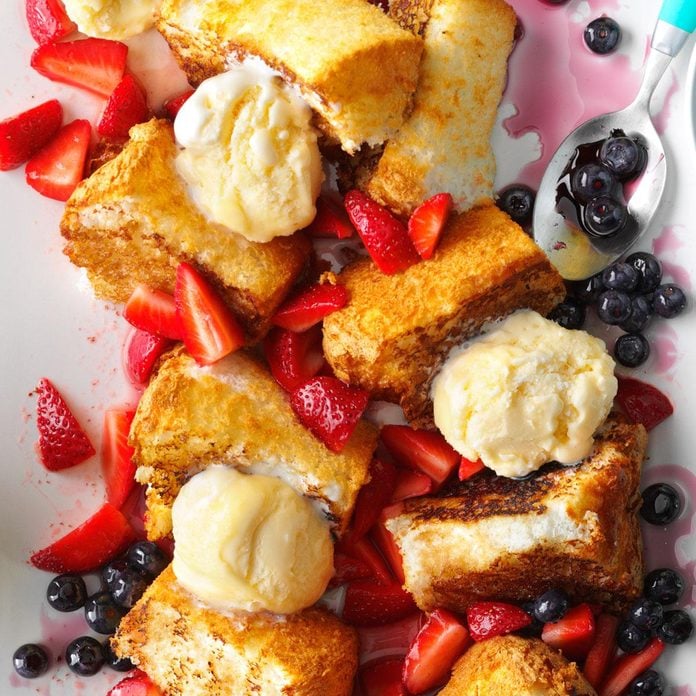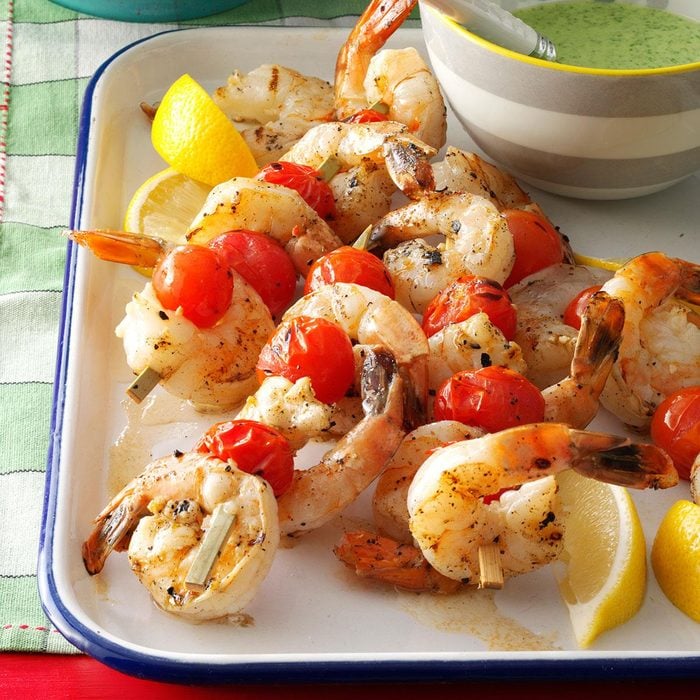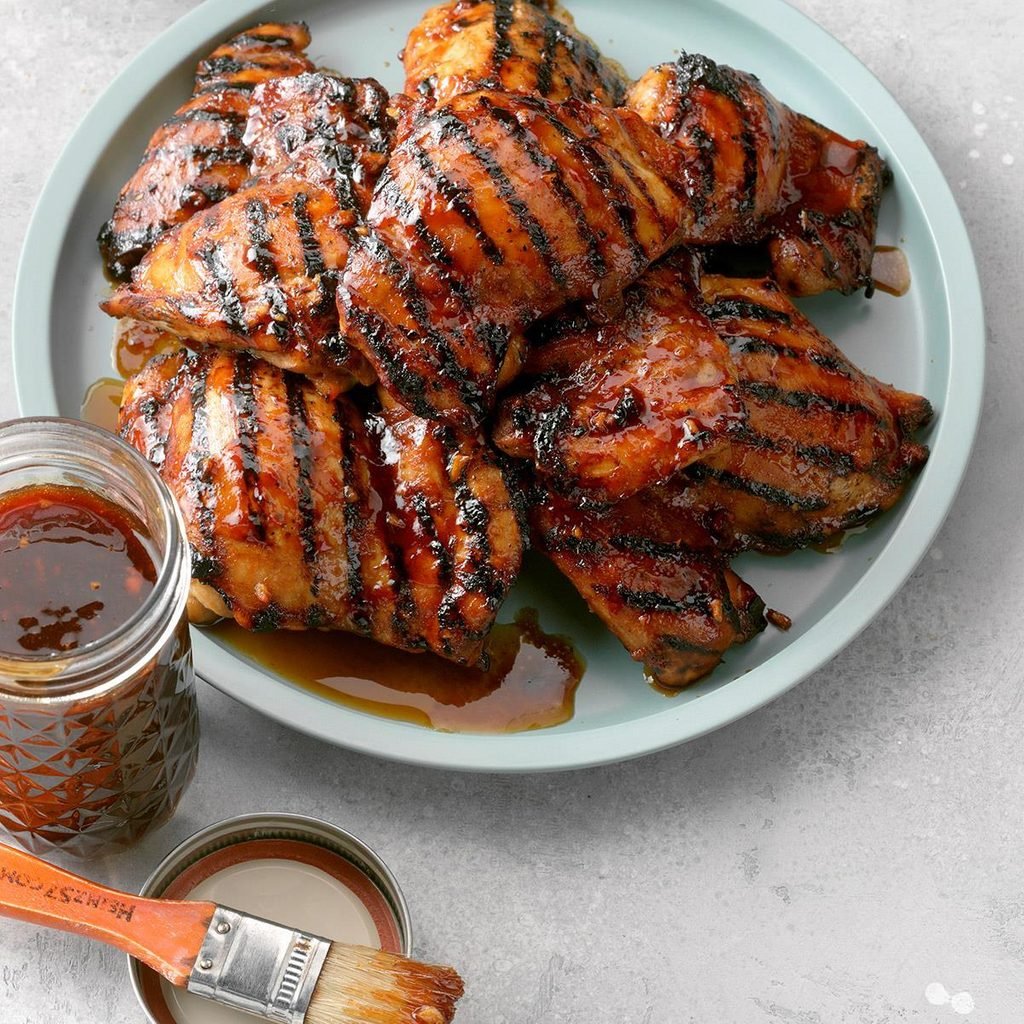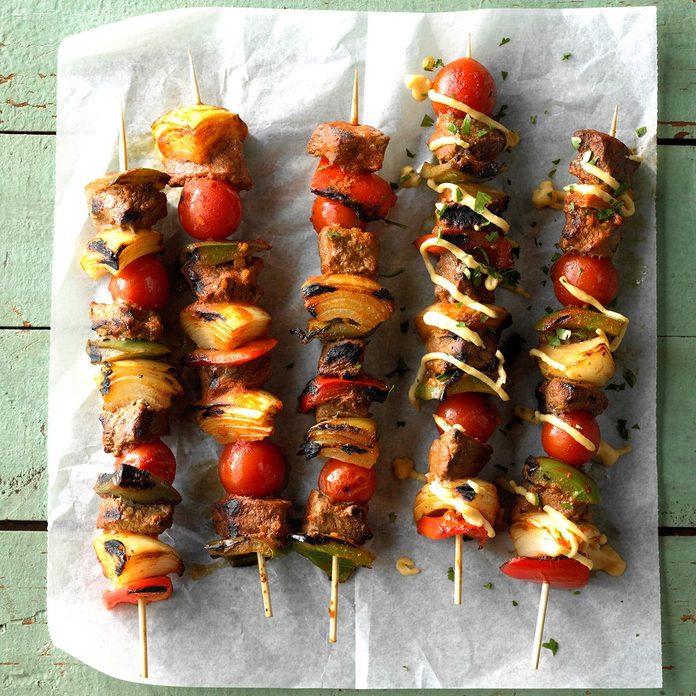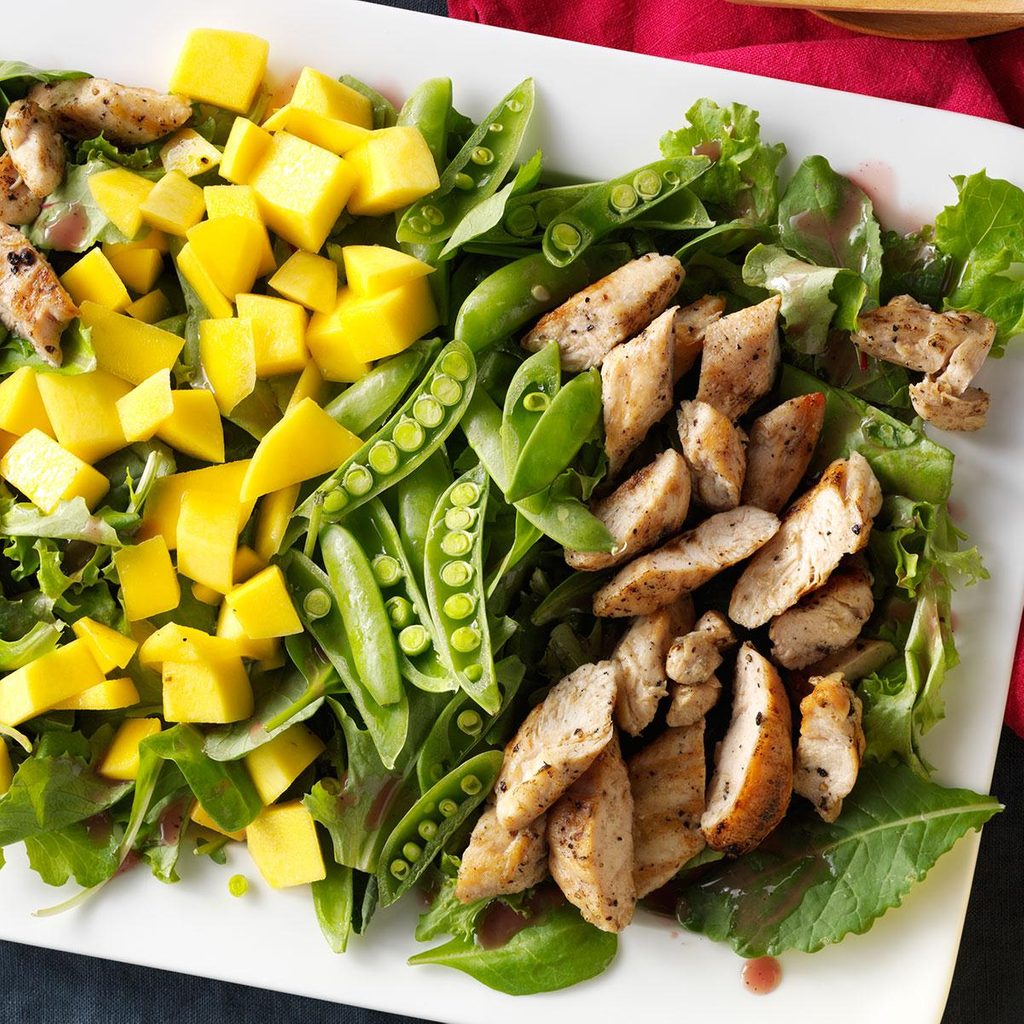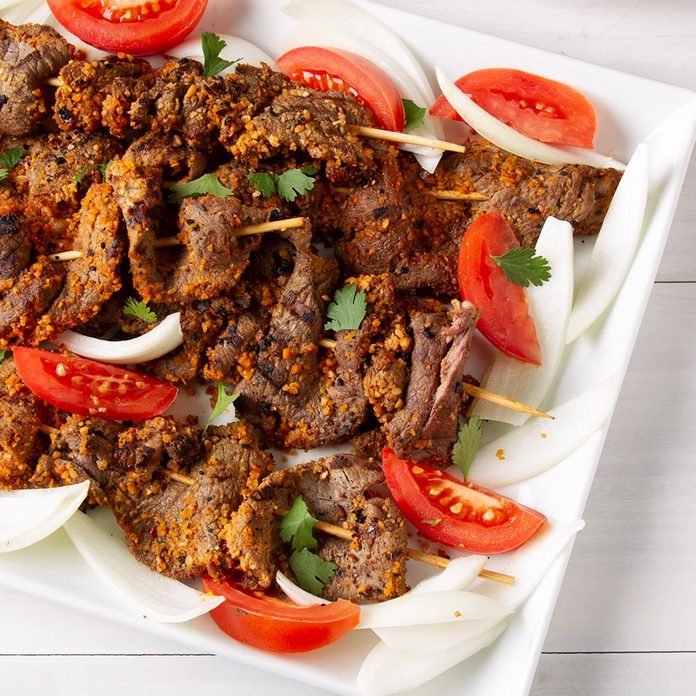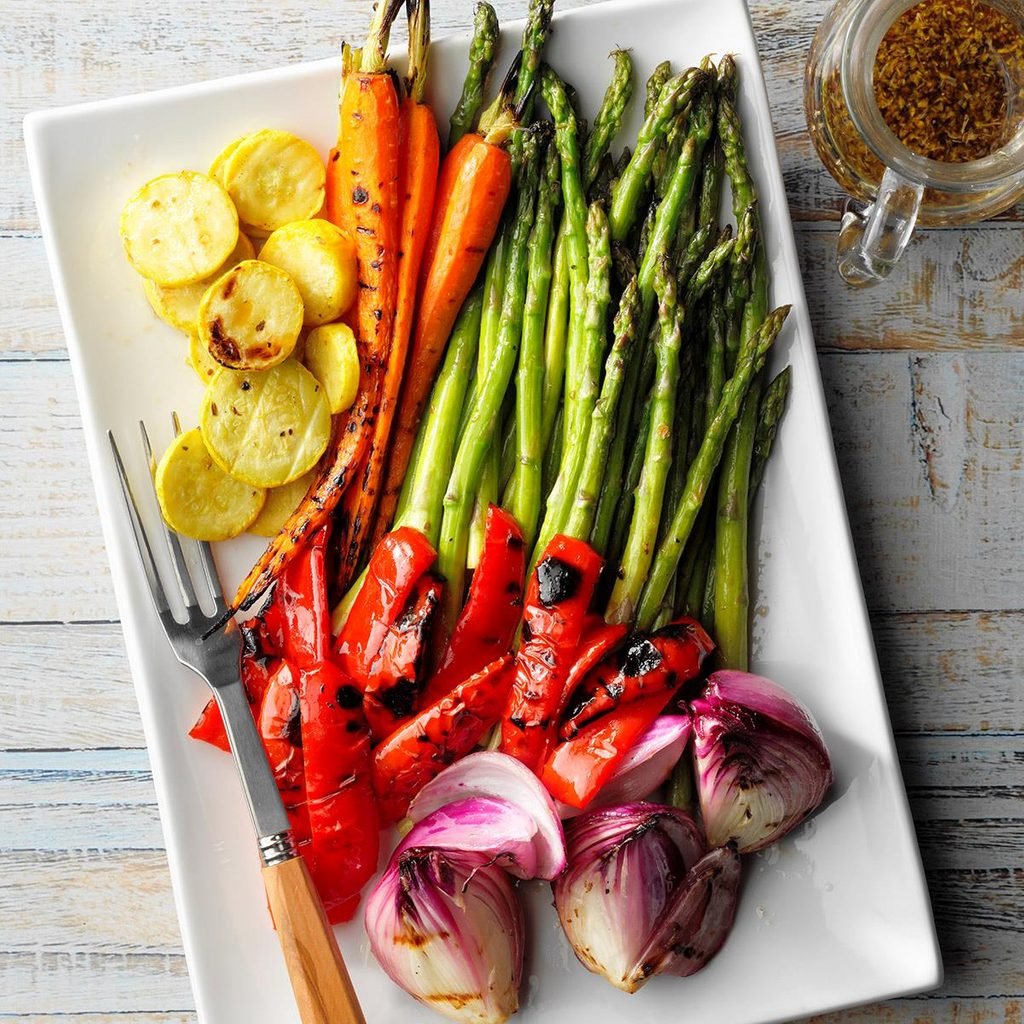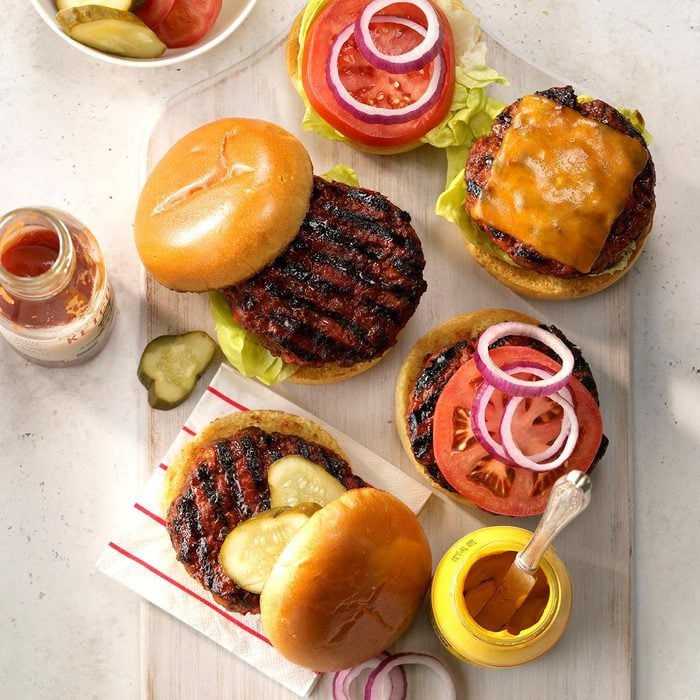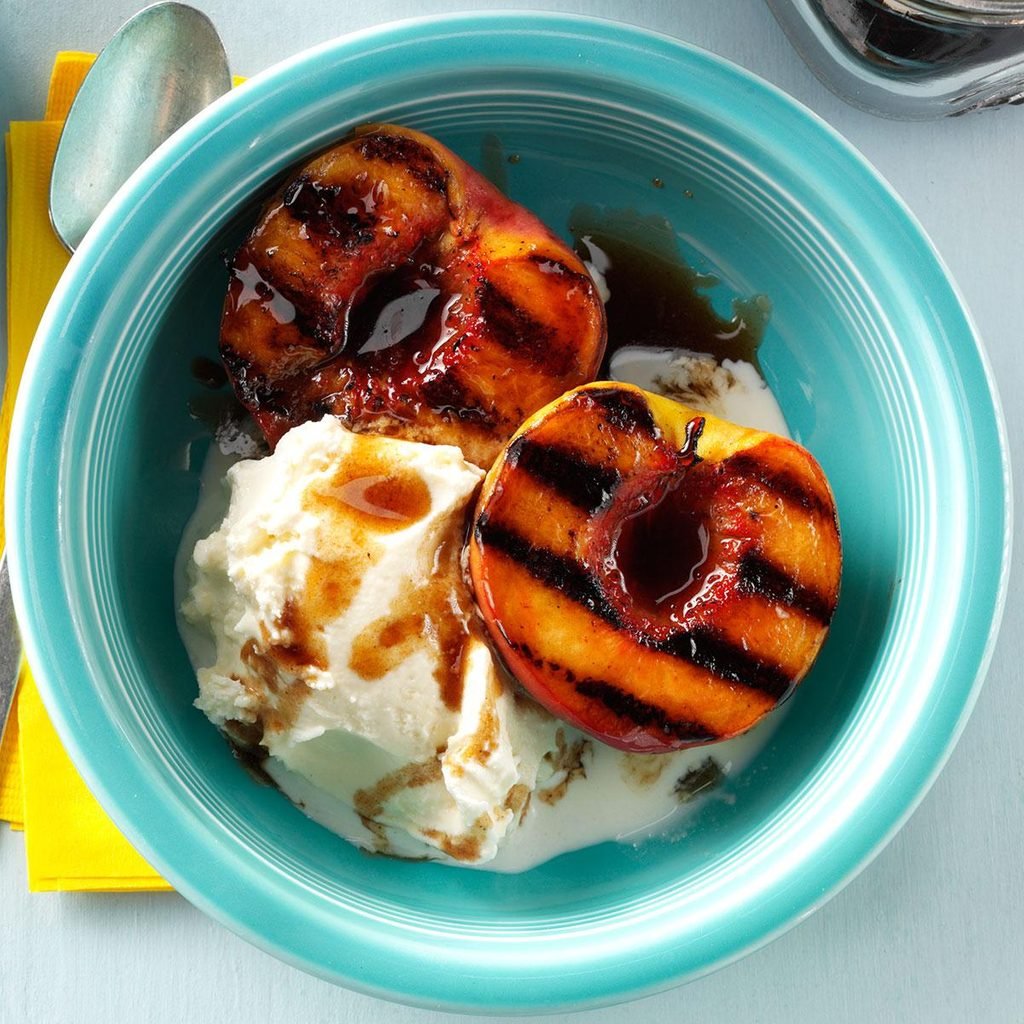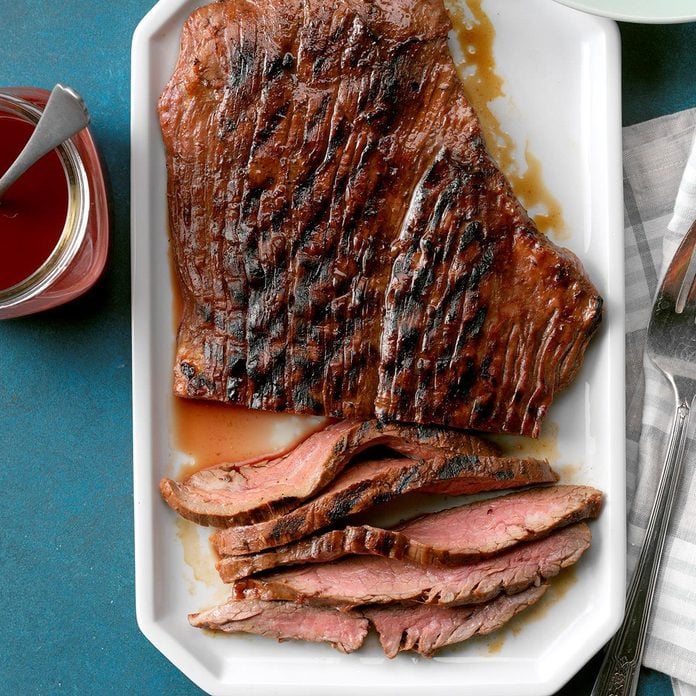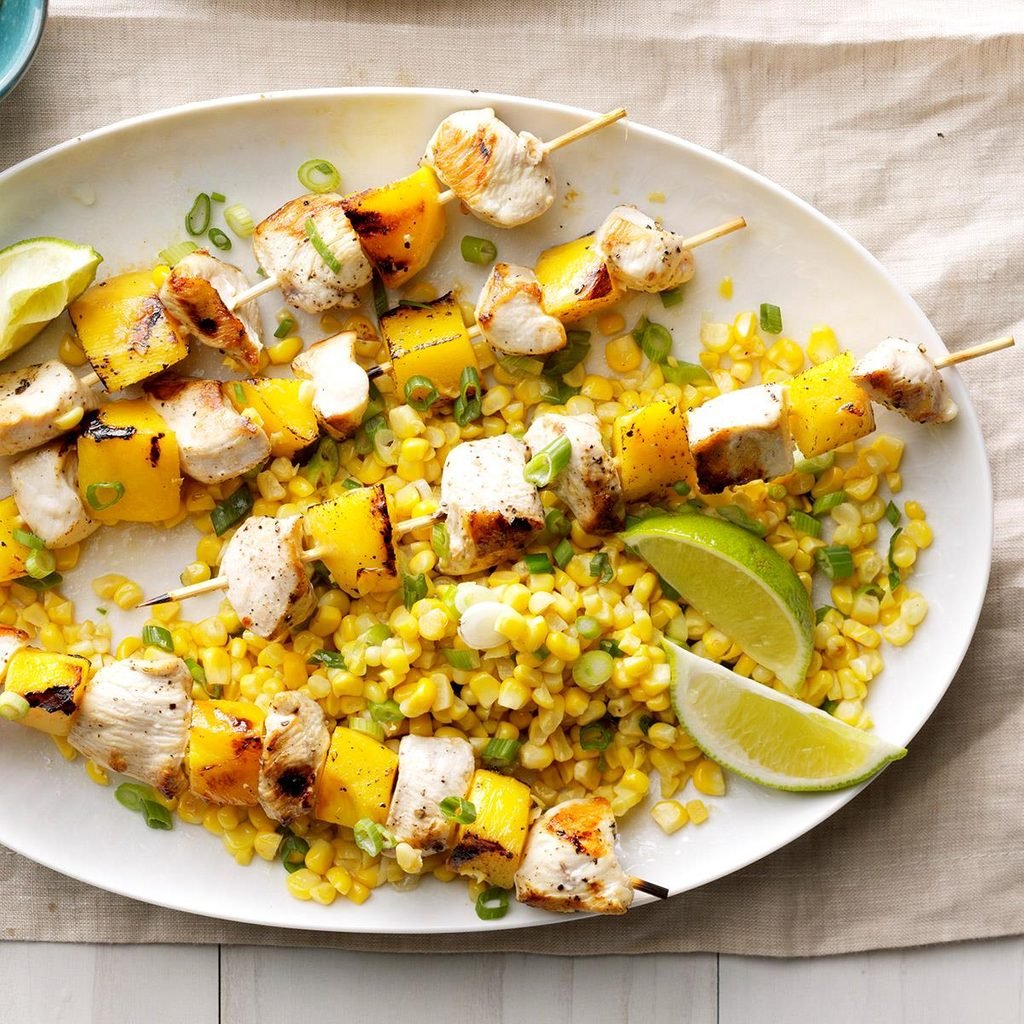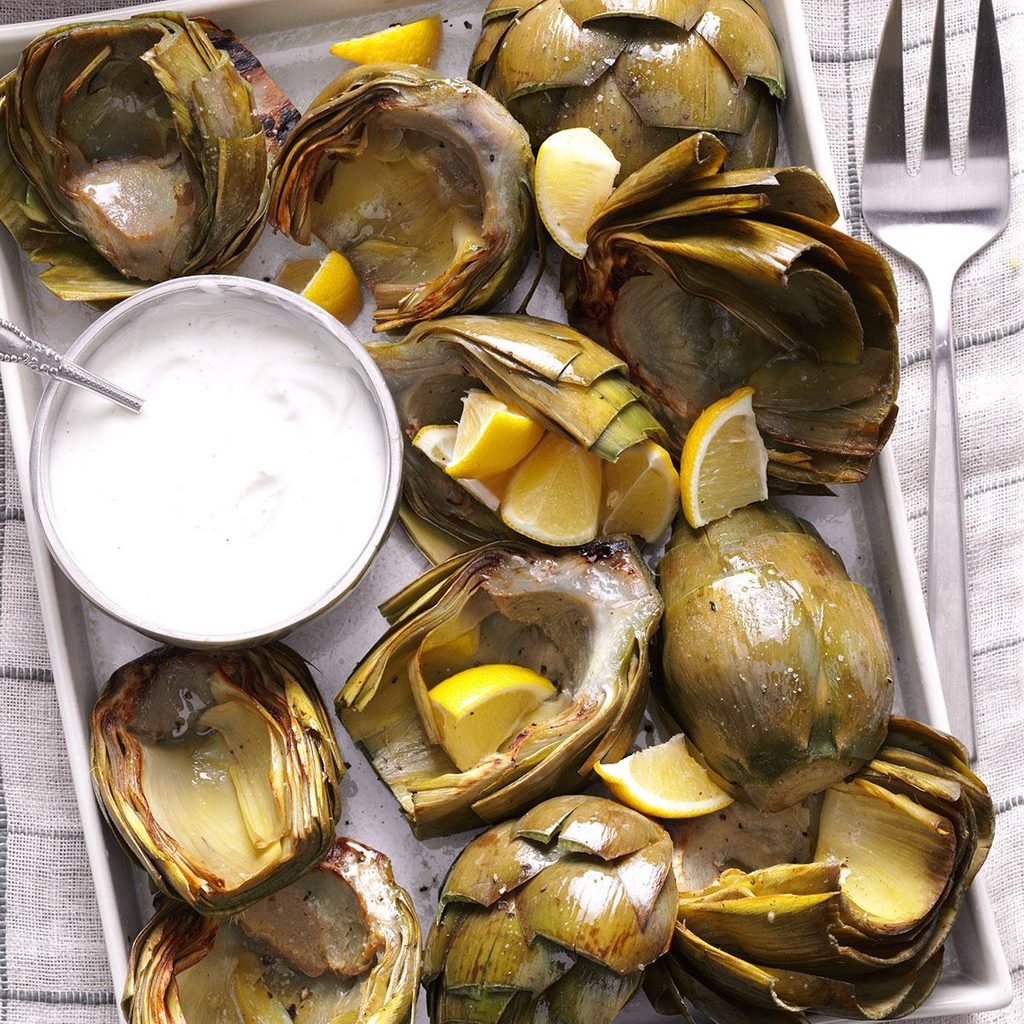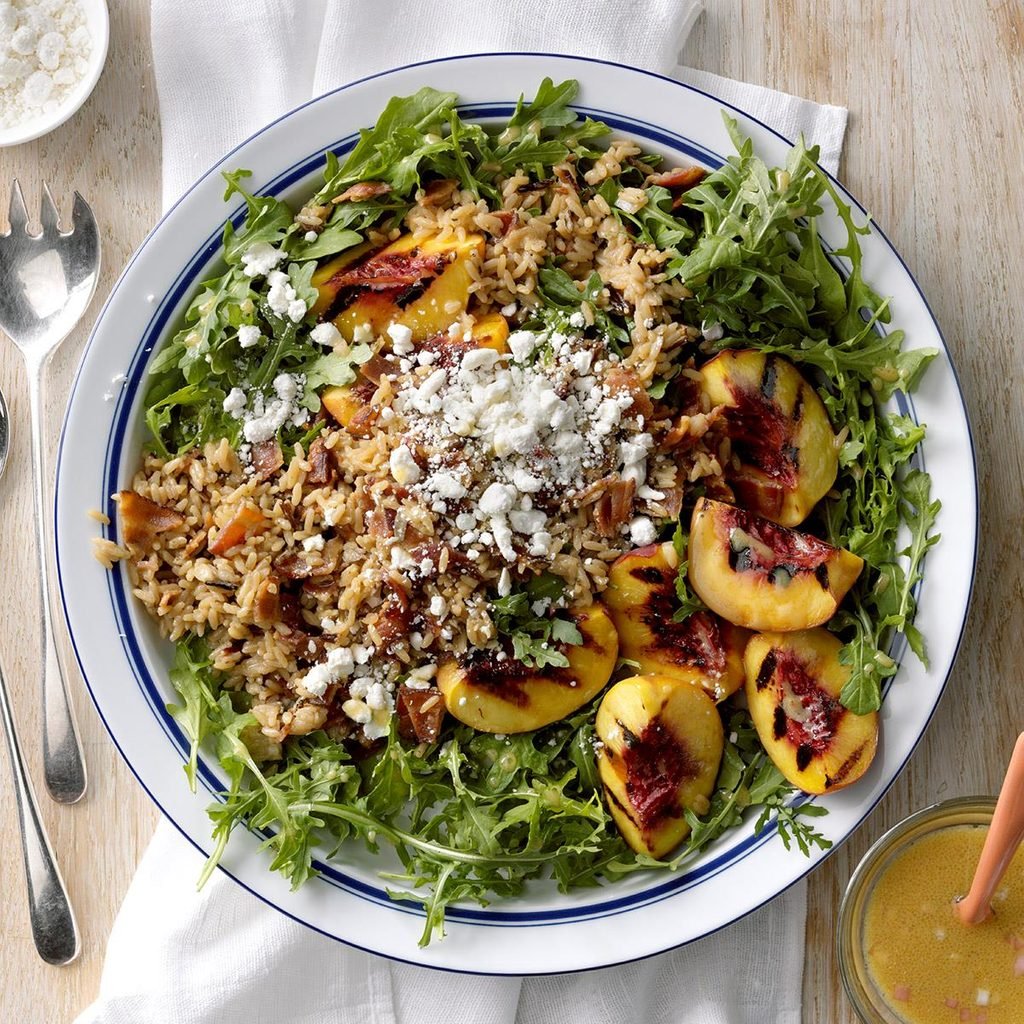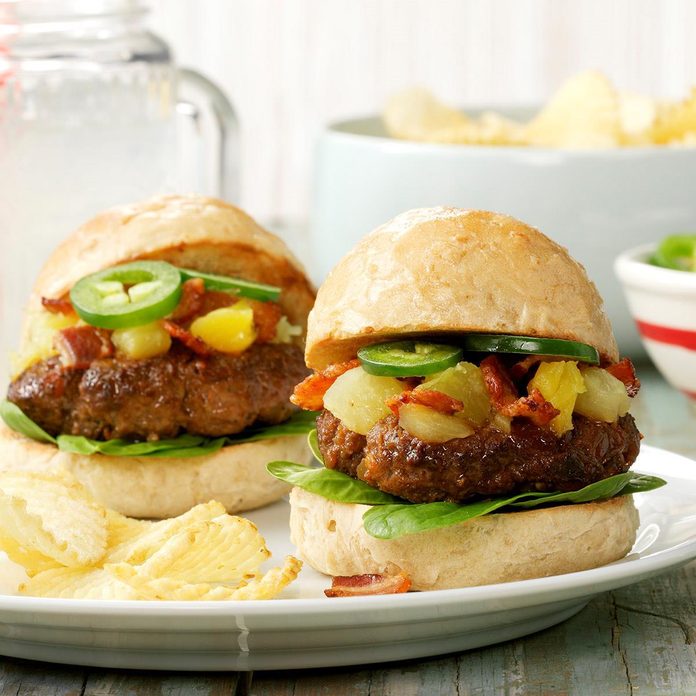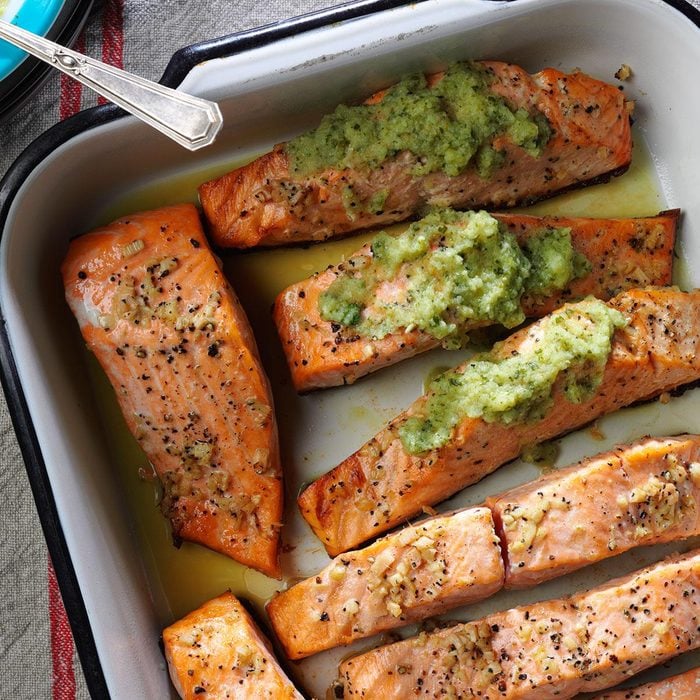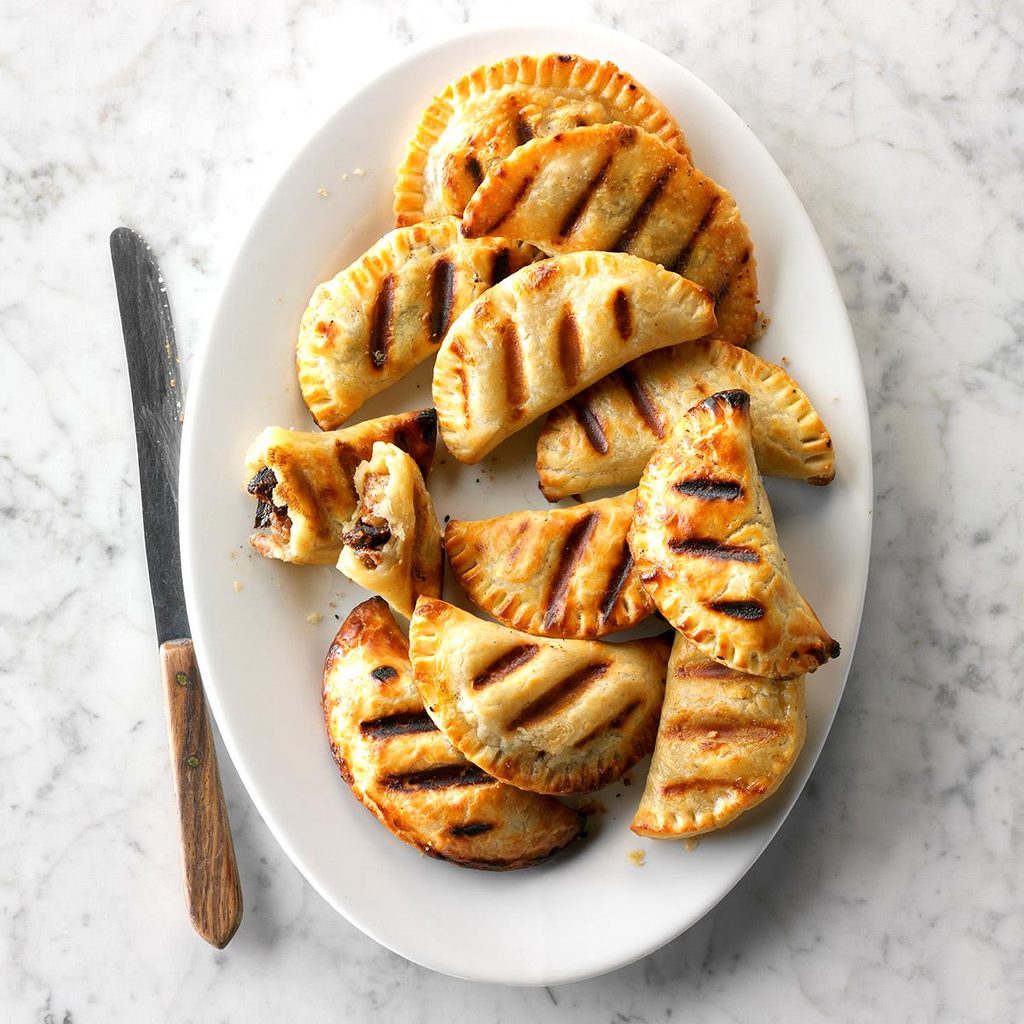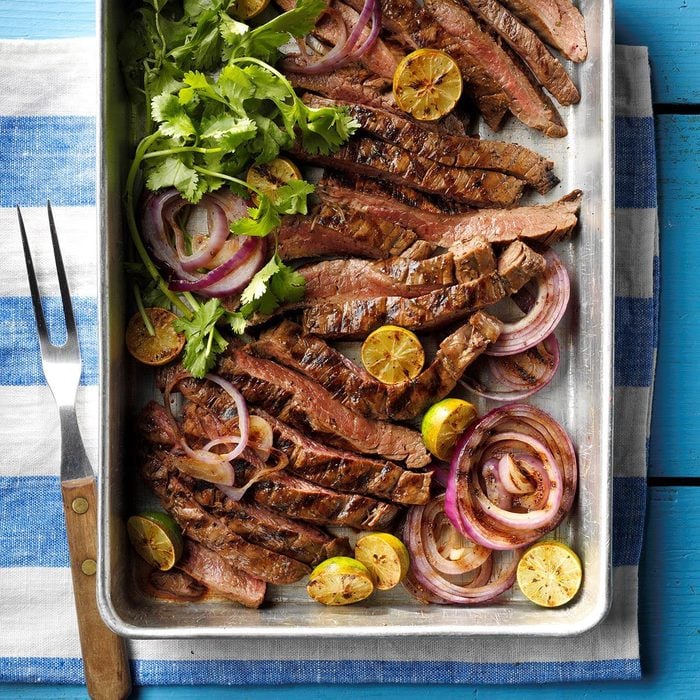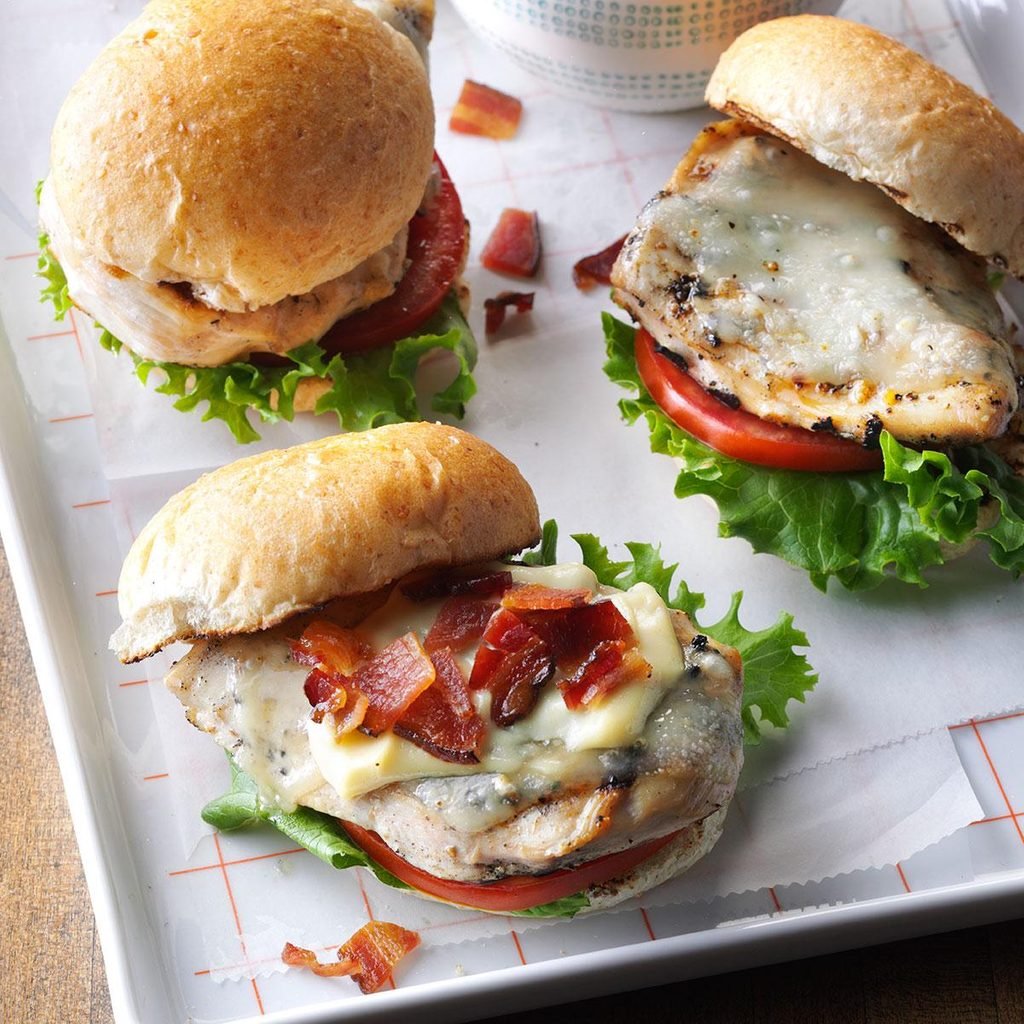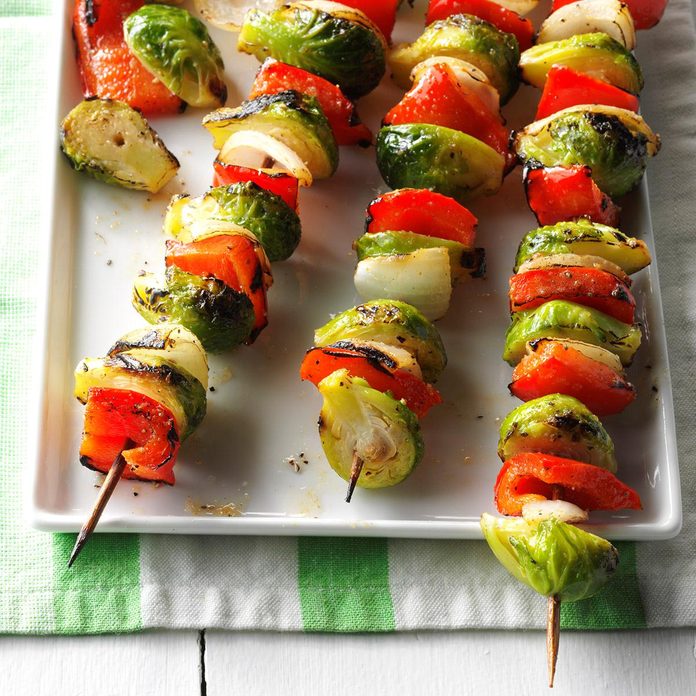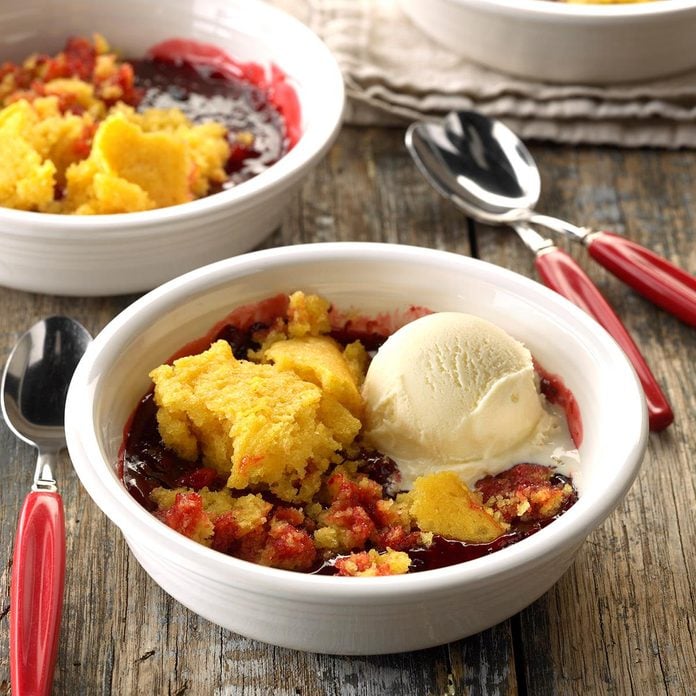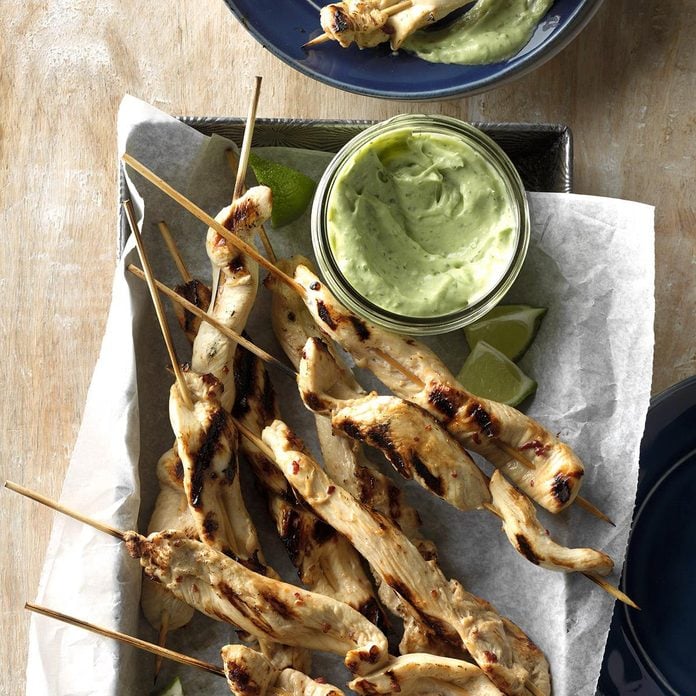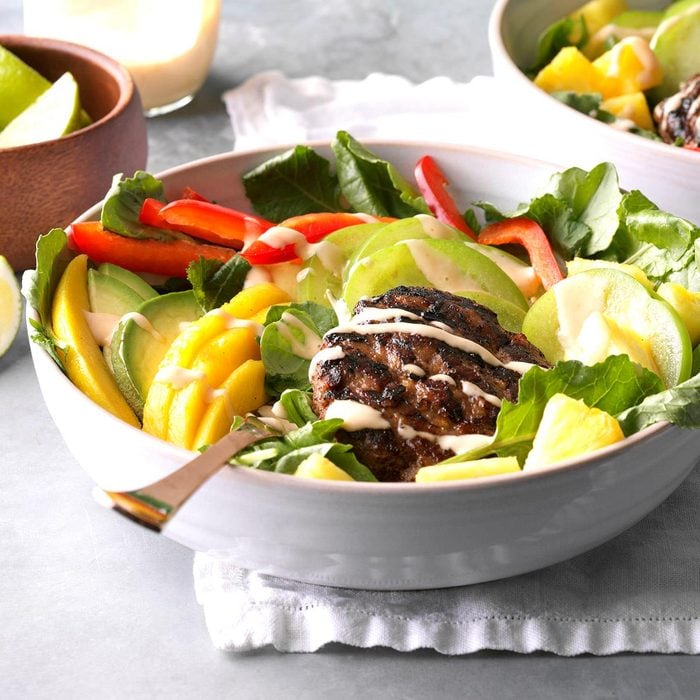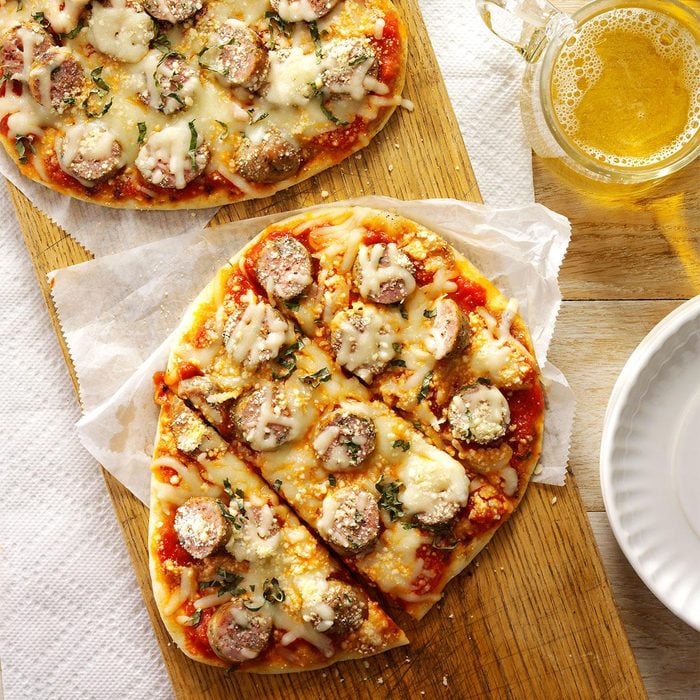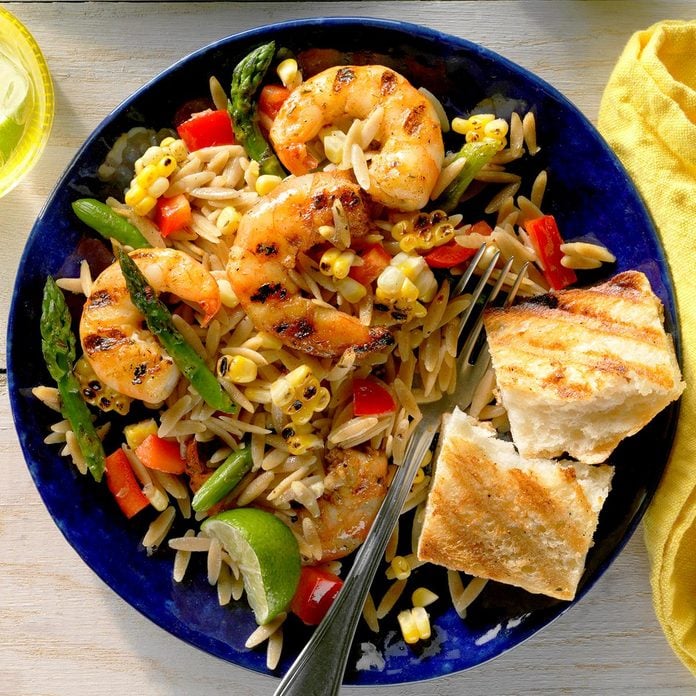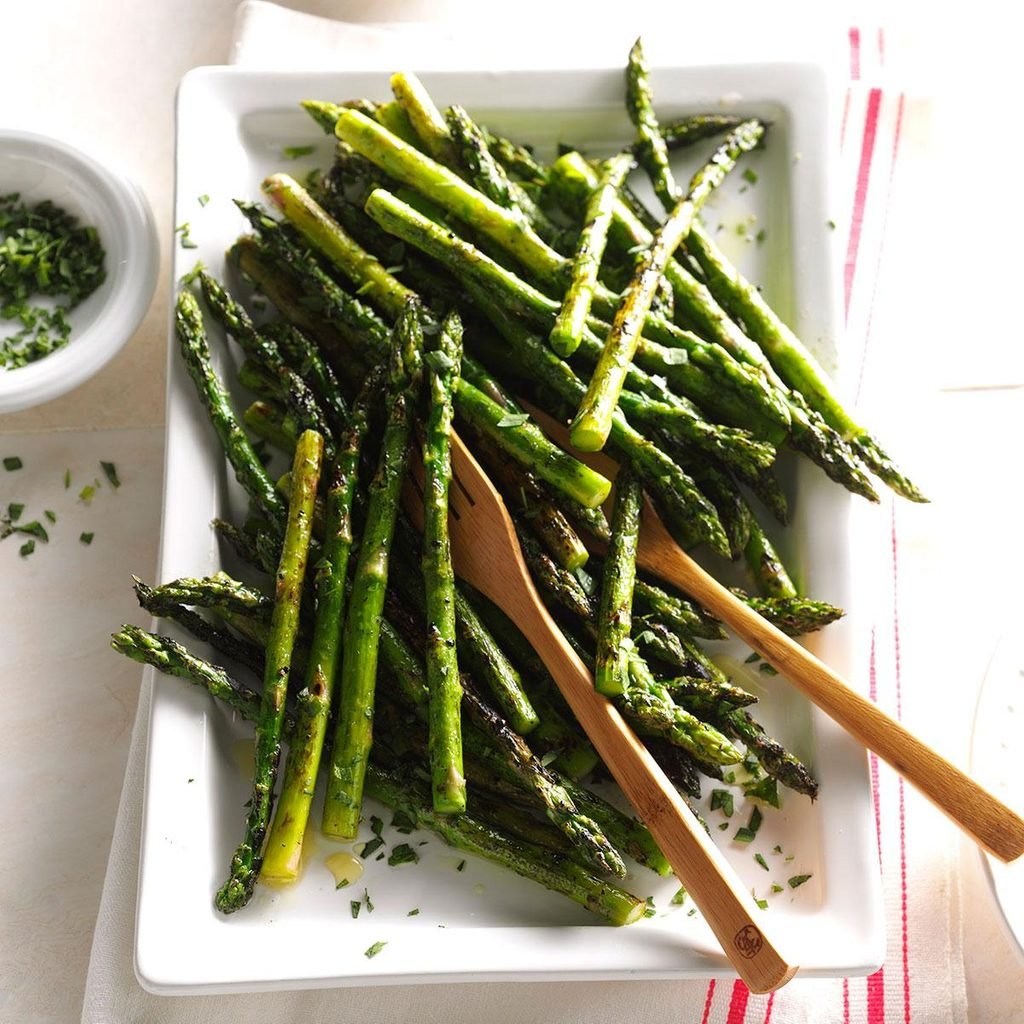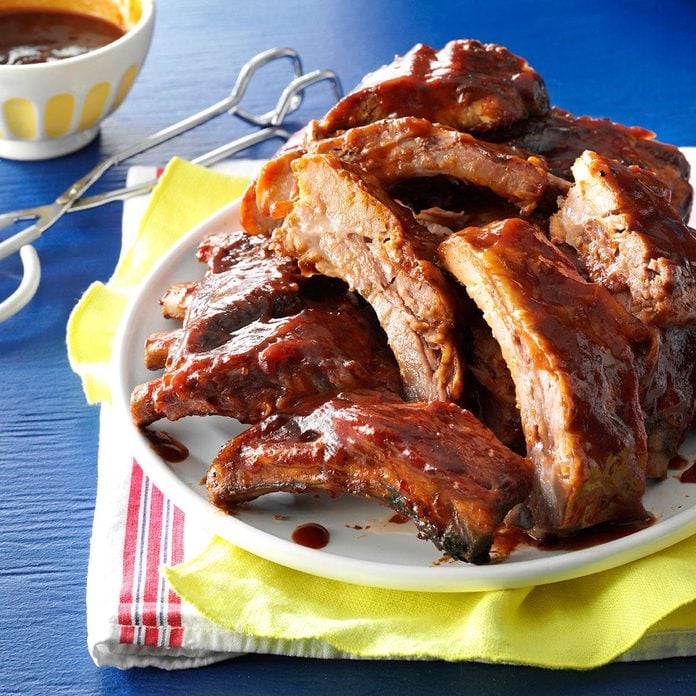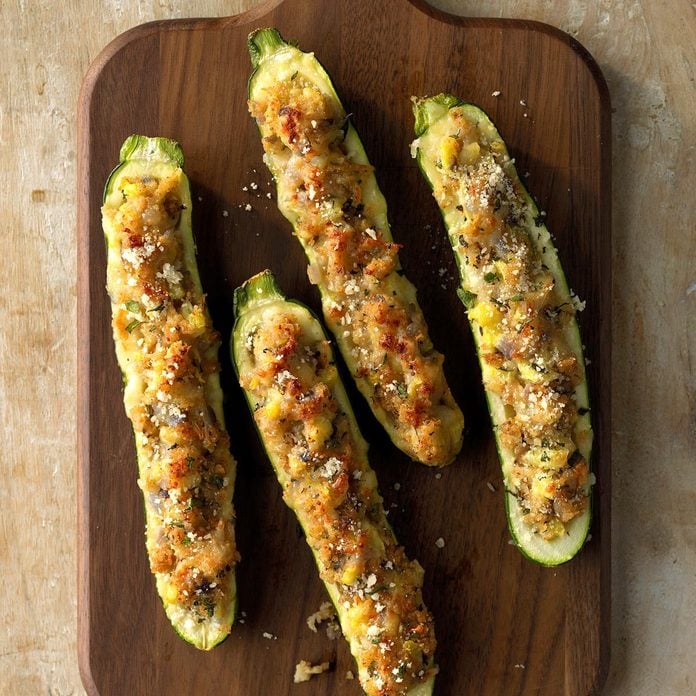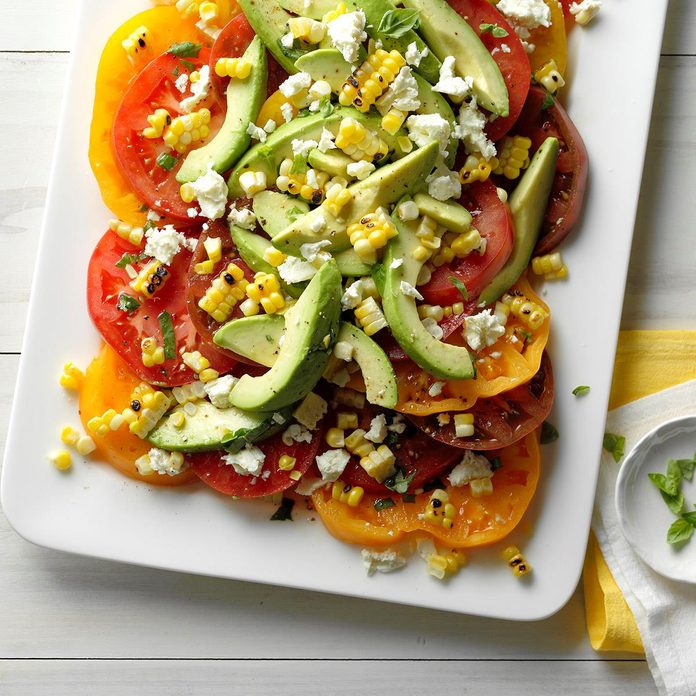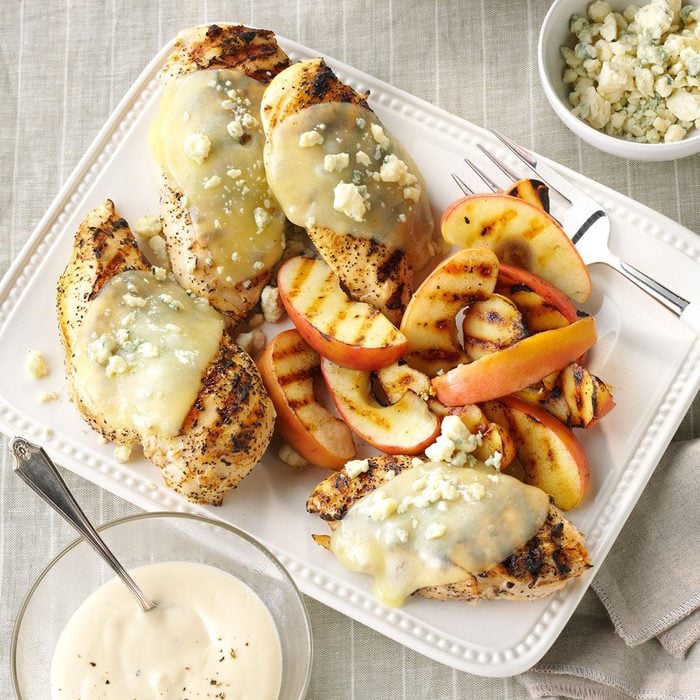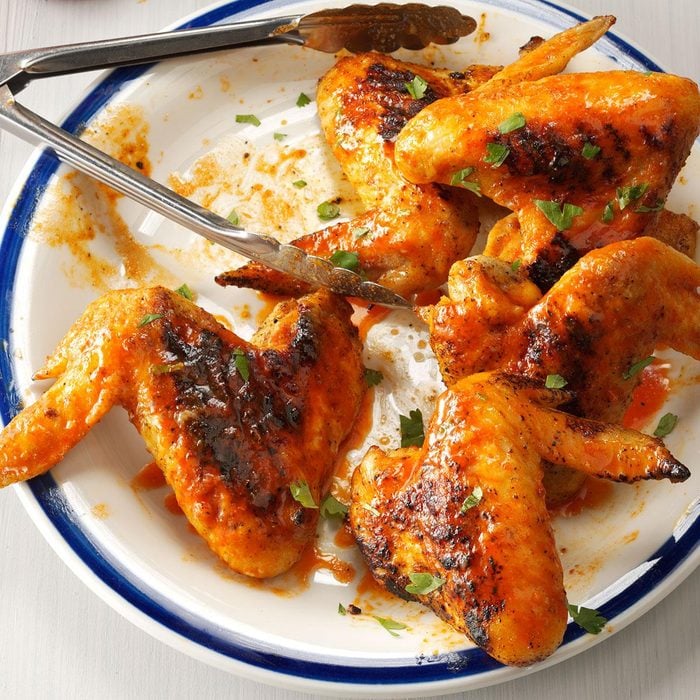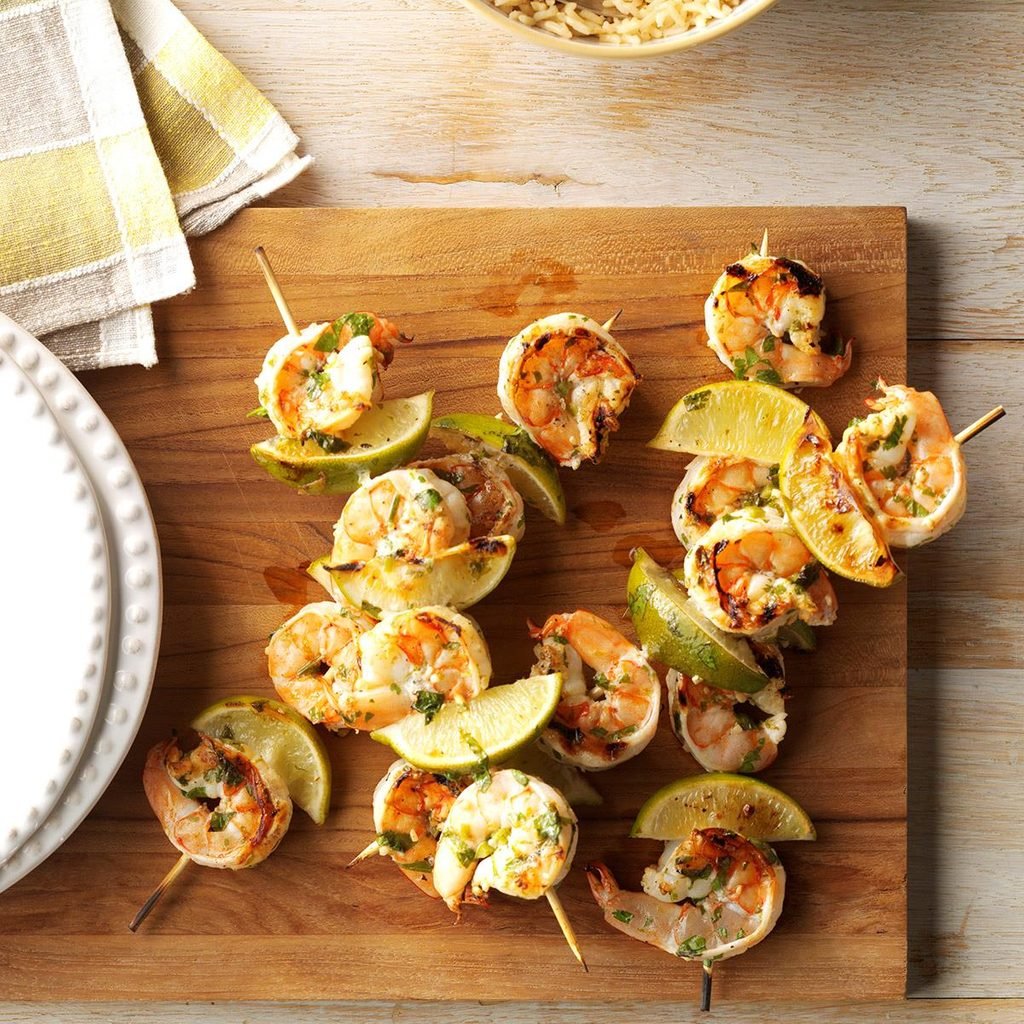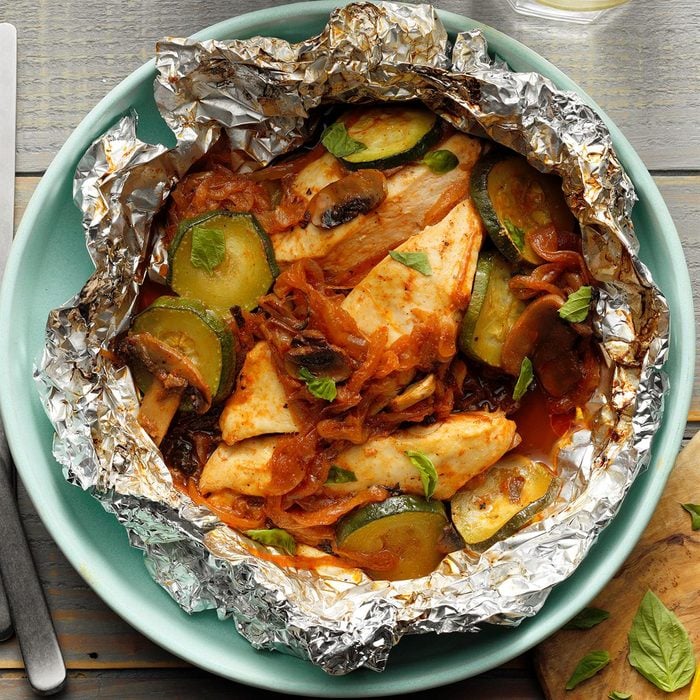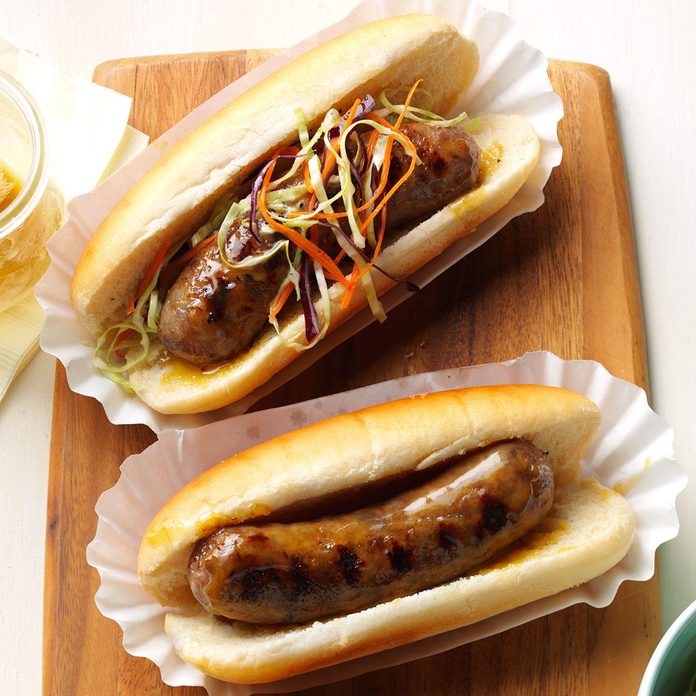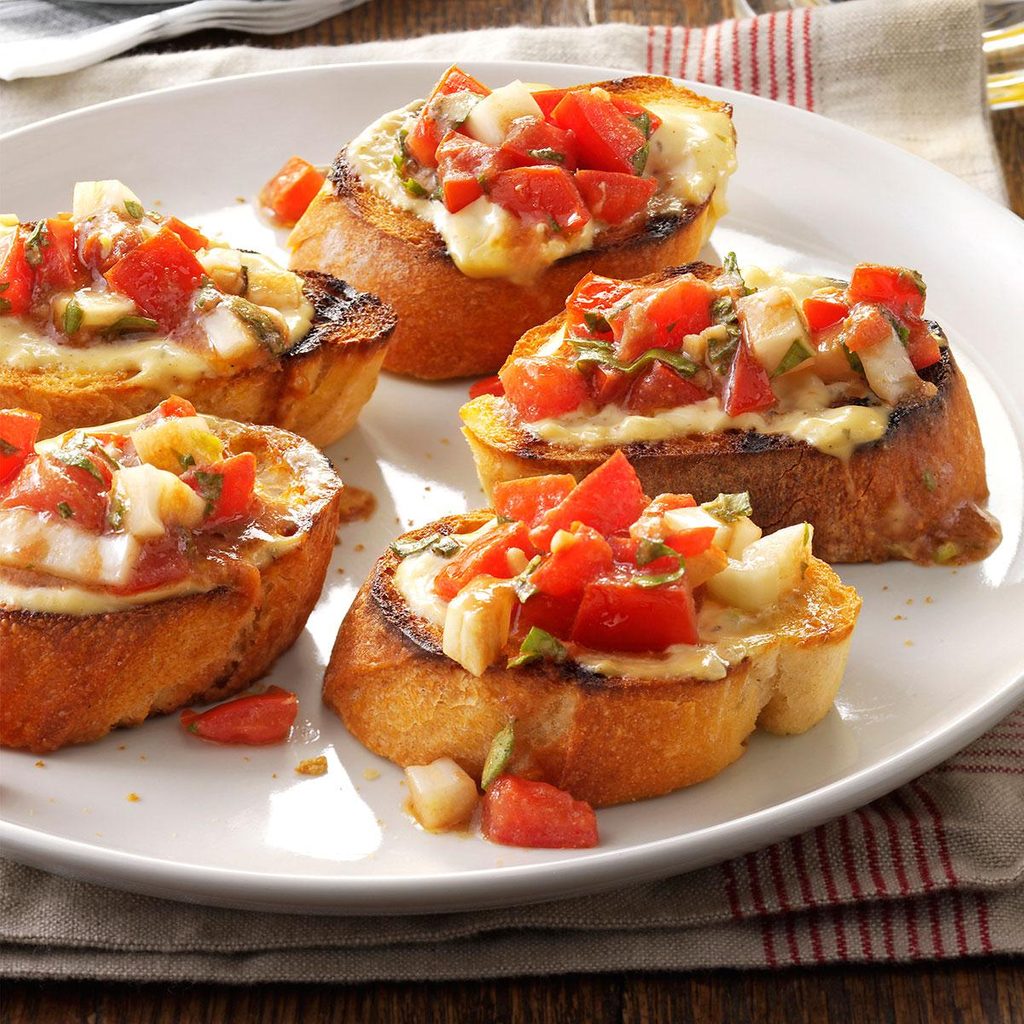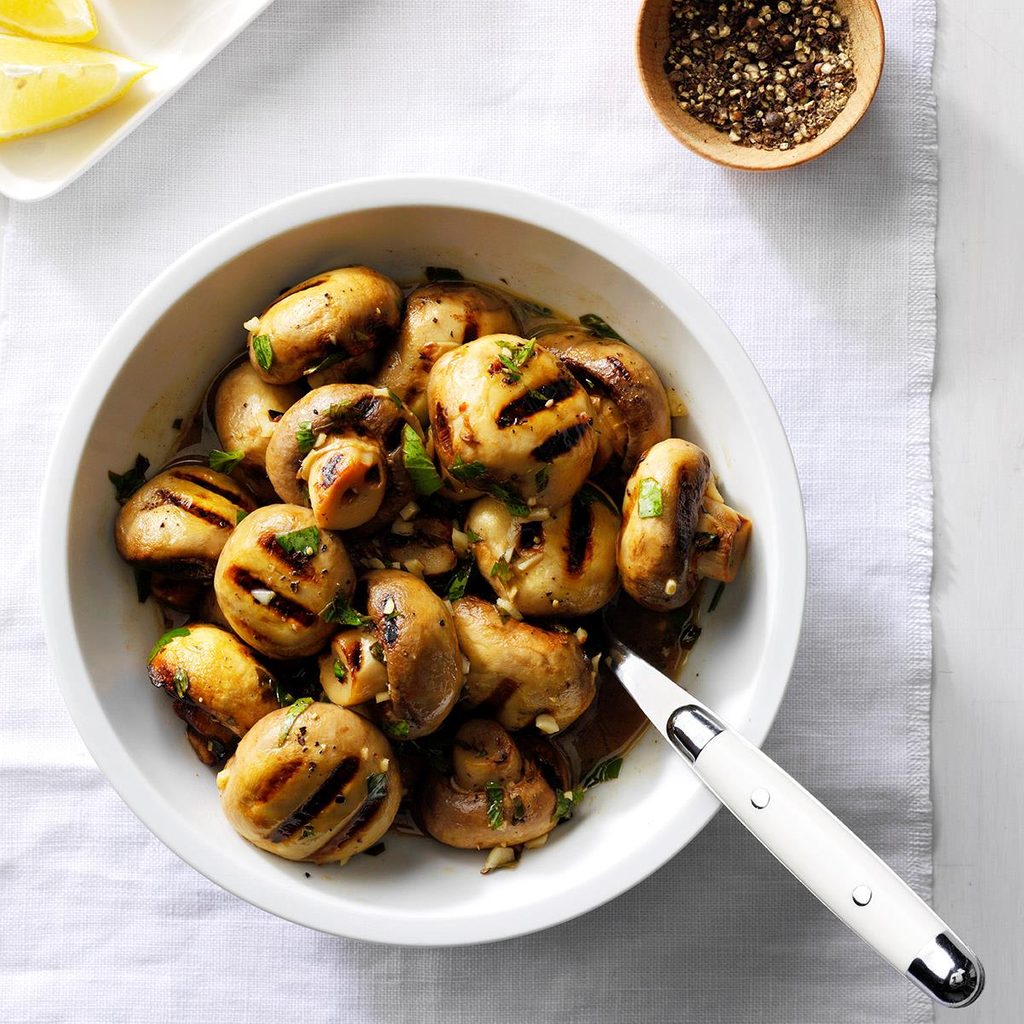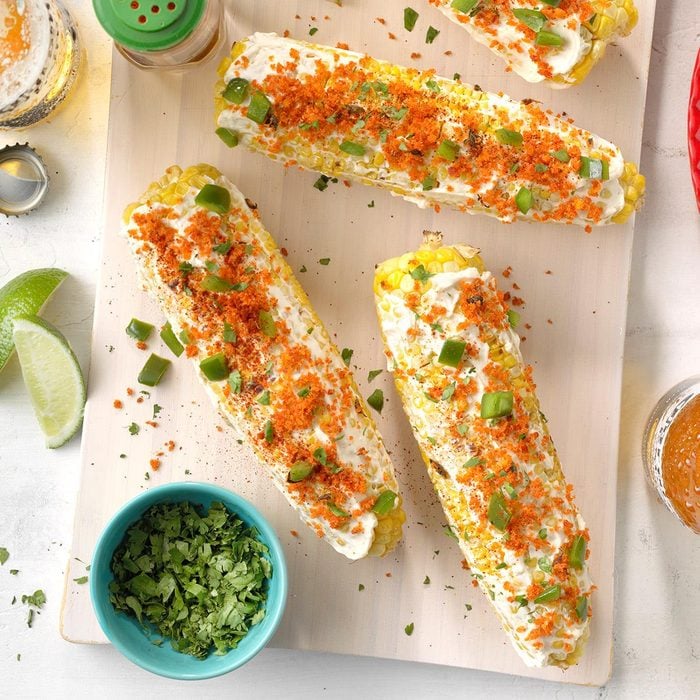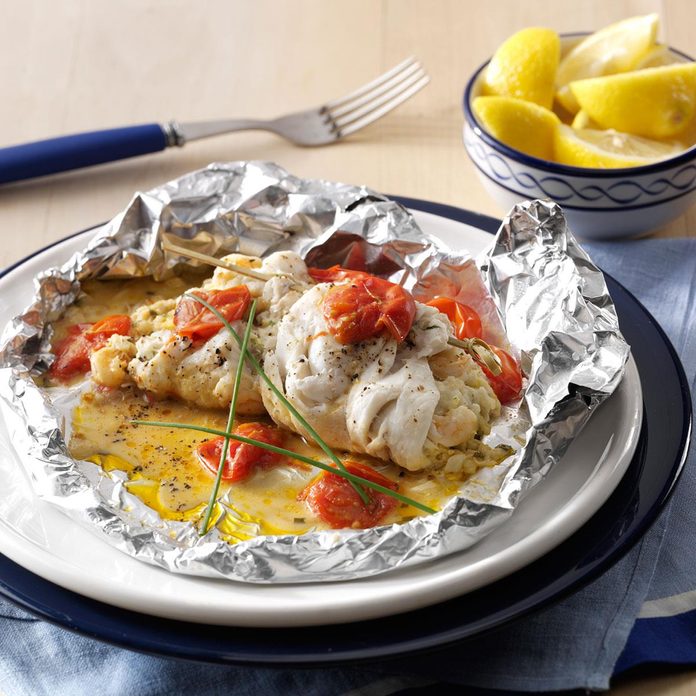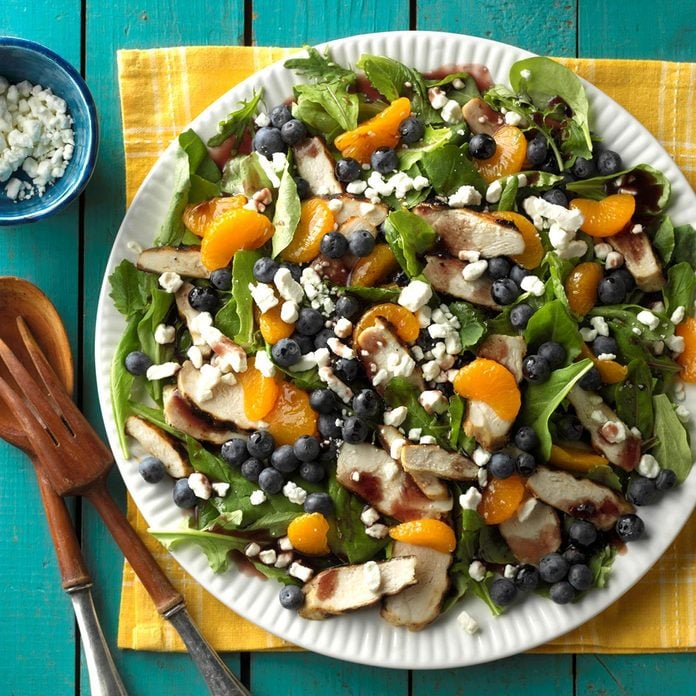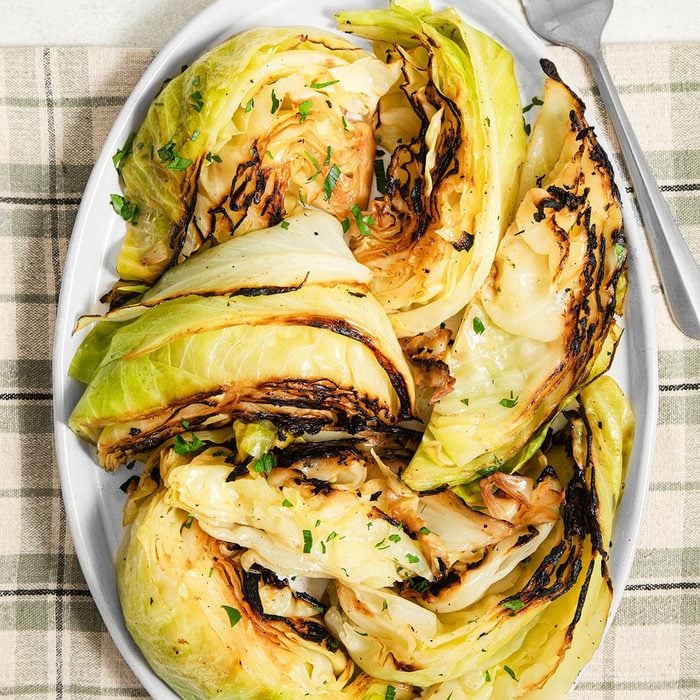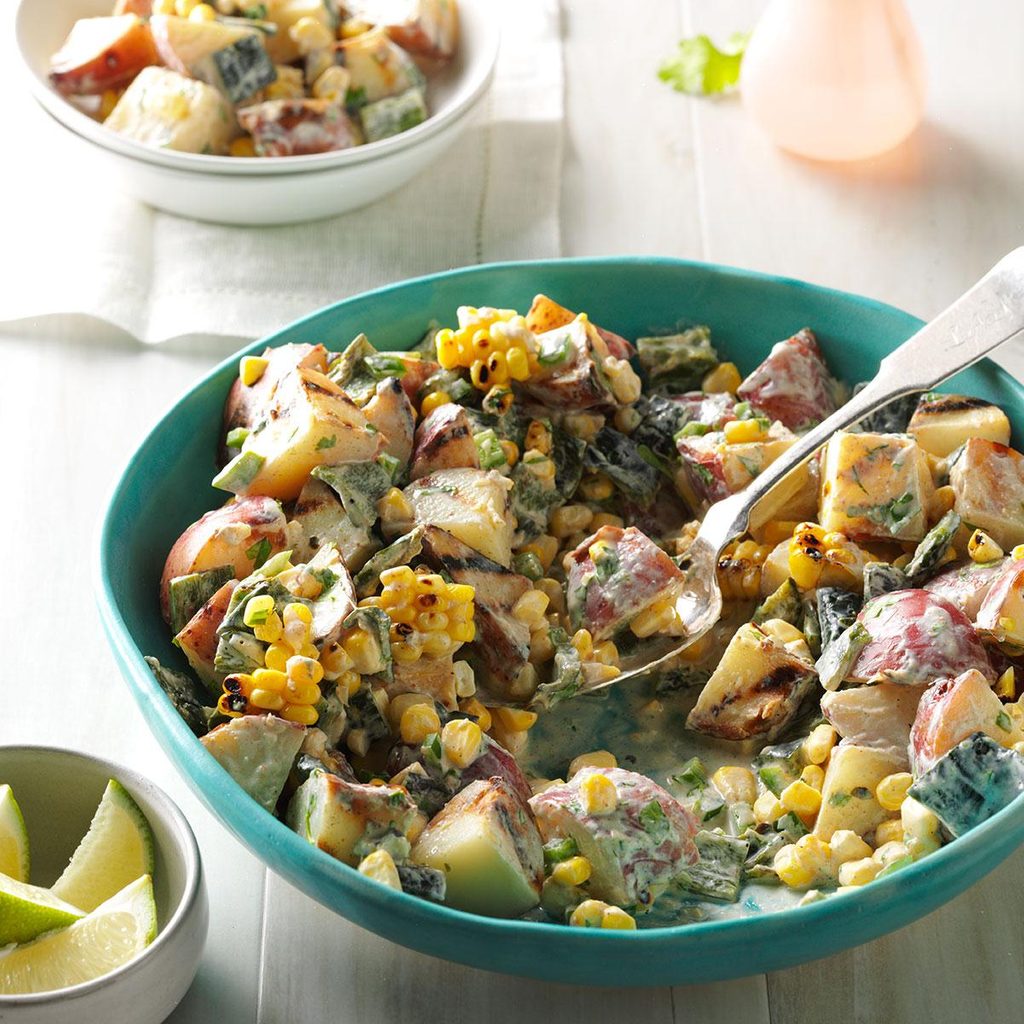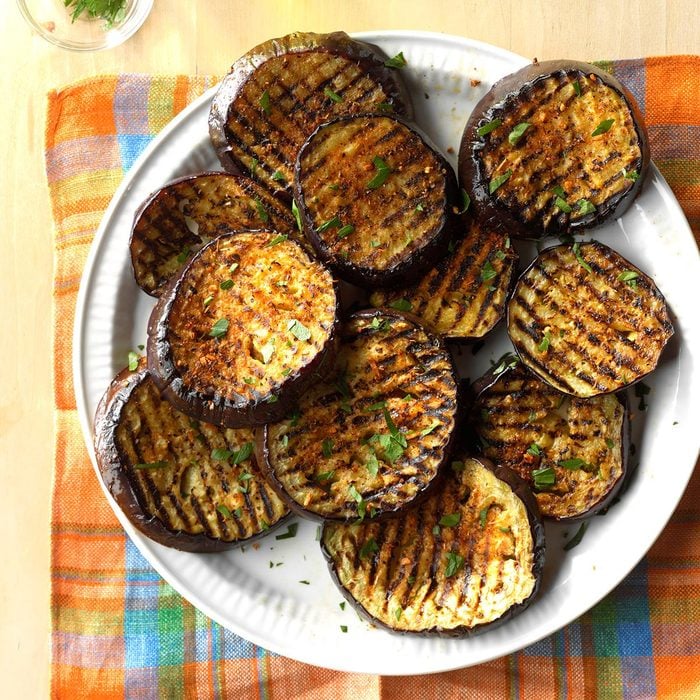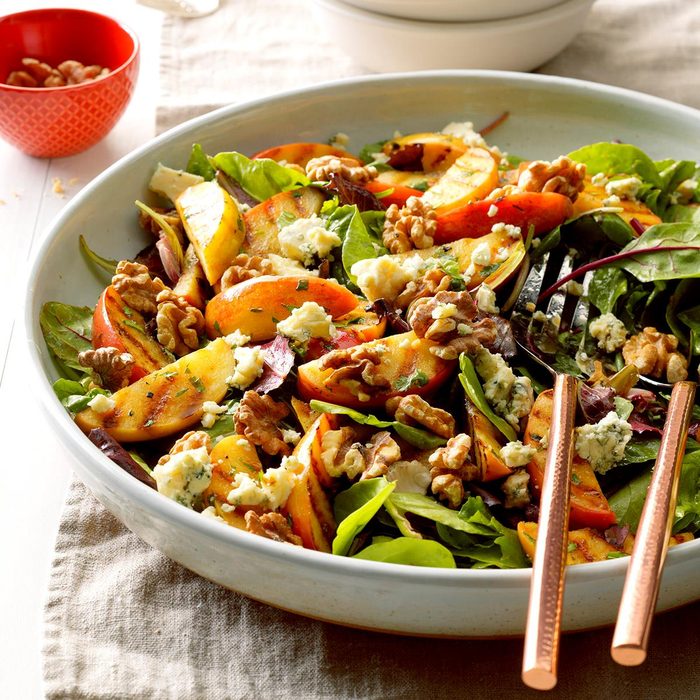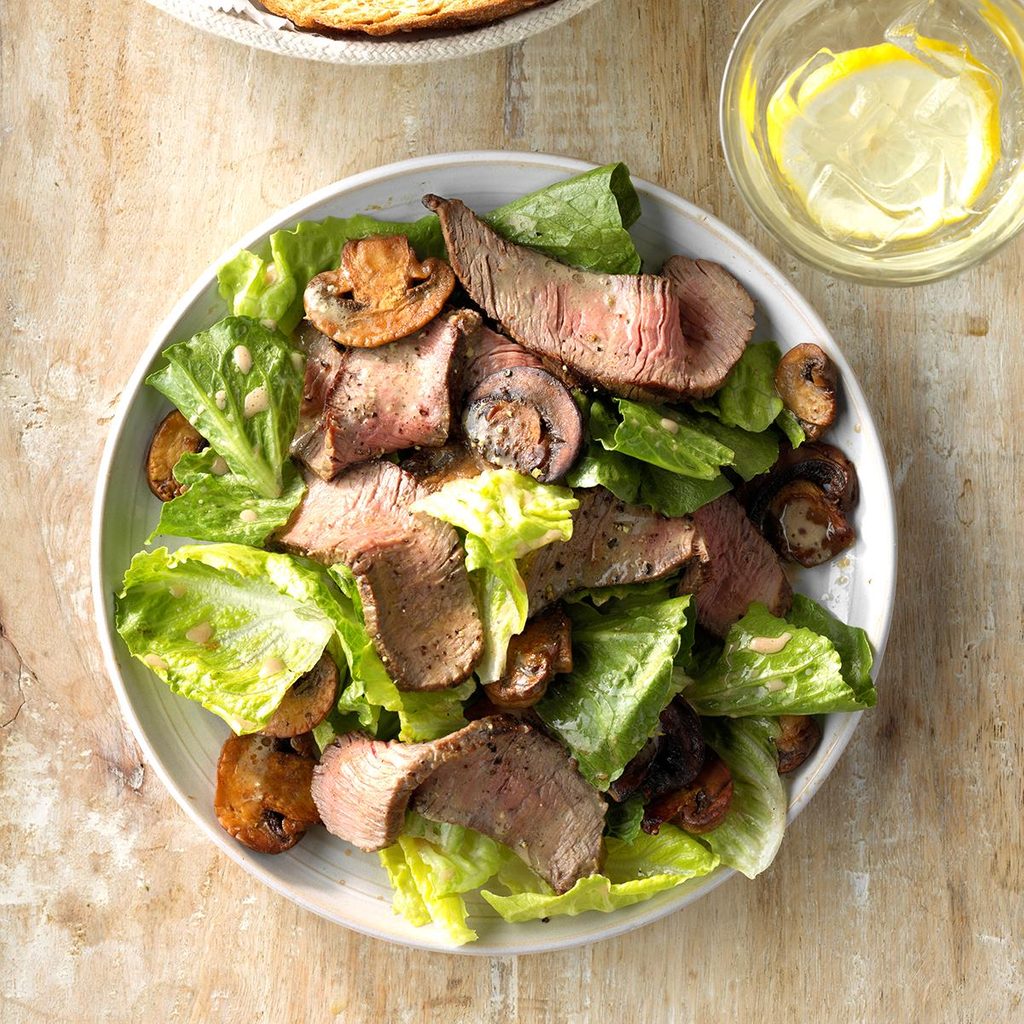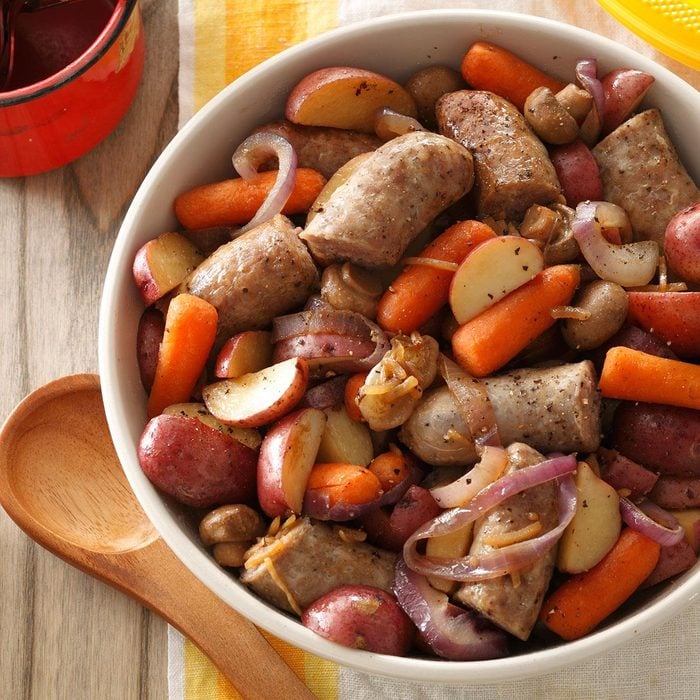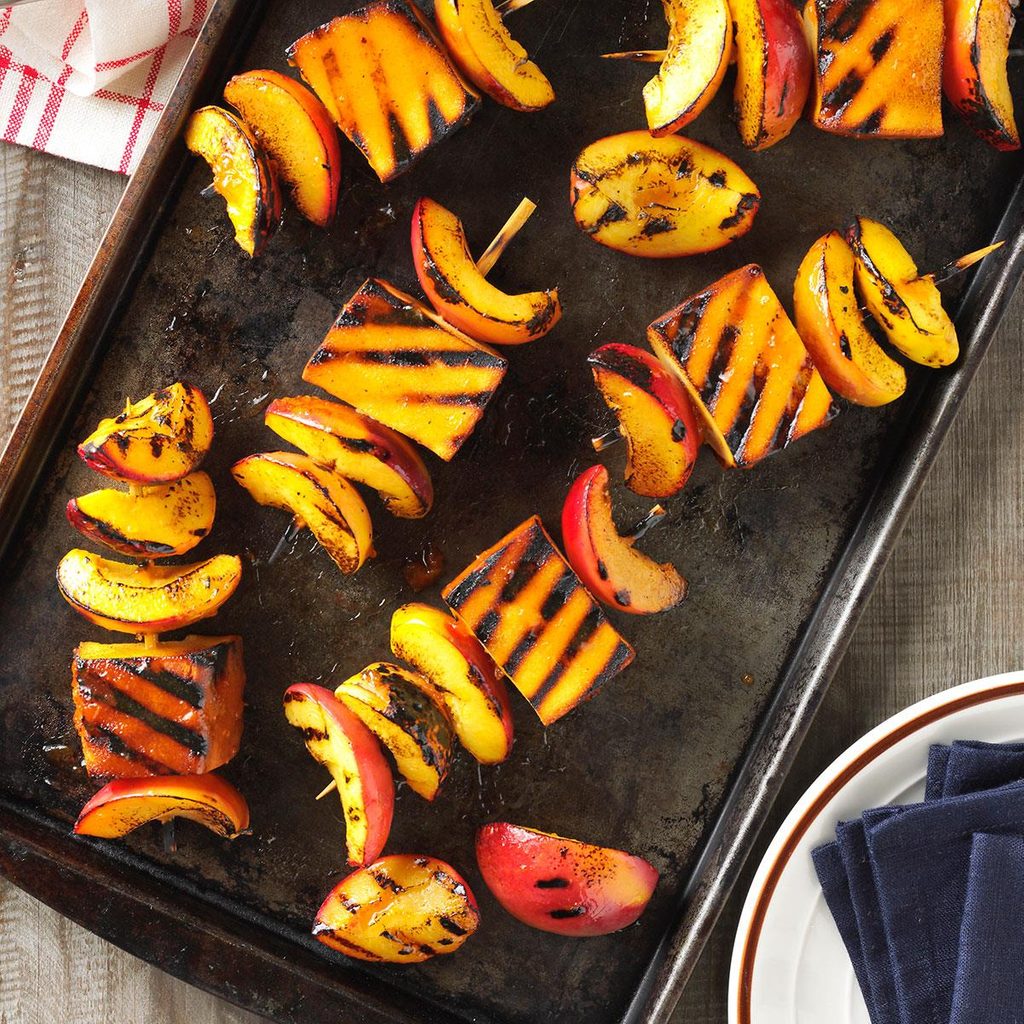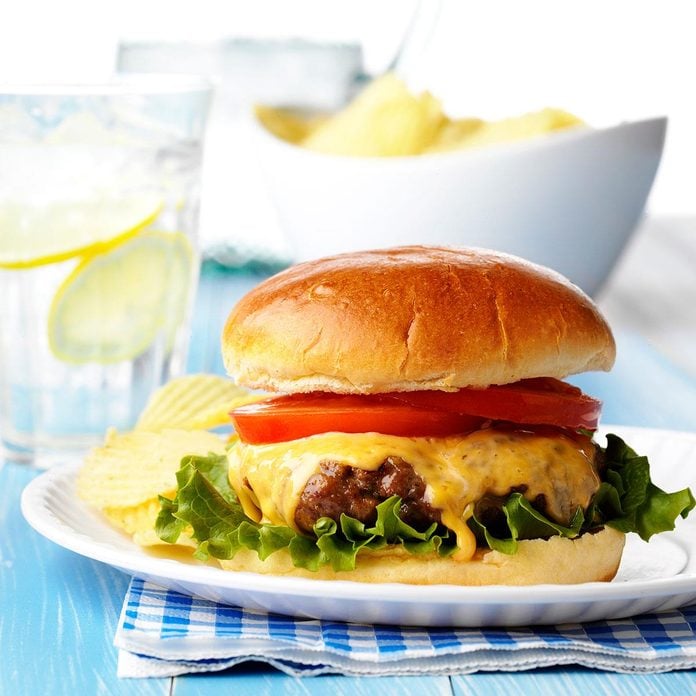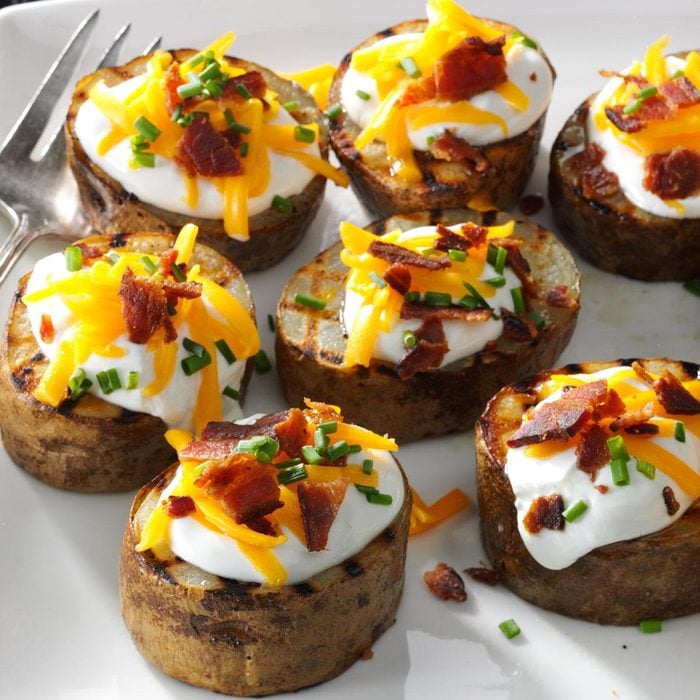Grilling is a wonderful way to sizzle your suppers in the summertime (and in the colder months if you’re brave!). While some folks like the ease of a gas grill, we know there are some dedicated charcoal fans out there. After all, there’s no replicating that flavor!
But before you grab that bag of charcoal or head to the store to buy your first-ever grill, read up on how you can master your barbecue.
How to Start a Charcoal Grill
The most daunting part of grilling is firing up the coals. After all, who hasn’t tossed a match into the bowl of a grill, walked away and found the coals still cold 20 minutes later? (Every griller has done this!) Starting a charcoal grill, though, really isn’t very difficult. Just choose the right techniques and have a little patience, and you’ll be ready to flip a few burgers.
Choose a Type of Charcoal
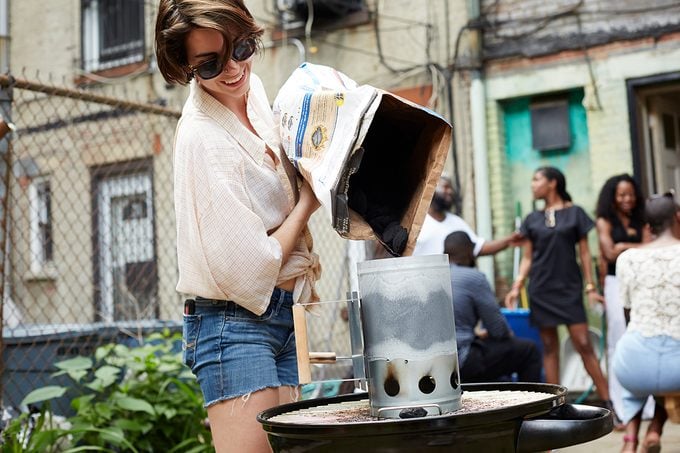 Granger Wootz/Getty Images
Granger Wootz/Getty Images
Before you even strike a match, you need to choose the right fuel for your fire. There are a few types of charcoal out there, and each suits different needs in terms of heat and flavor profile.
- Charcoal briquettes: You’ll find charcoal briquettes at supermarkets, convenience stores and the like all summer long. These bits of charcoal are made of compressed sawdust and other wood material. Charcoal briquettes burn consistently and for a long time. They’re also super affordable. A 16-pound bag will cost you about $10. The downside to this fuel is that they produce a lot of ash to clean up later and don’t impart a lot of that charred flavor many grillers are looking for.
- Hardwood or lump charcoal: This type of charcoal is made from pure wood that imparts more flavor to the food you grill. This charcoal burns more quickly than its briquette cousins but it produces less ash and waste. Because of the extra flavor here, many experienced grillers prefer hardwood charcoal. It costs a bit more than briquettes—a 15-pound bag runs about $14—but our Test Kitchen thinks that the flavor is worth the extra spend.
- A mix of both: The good news is you don’t have to stick with one type of charcoal. You can mix inexpensive briquettes with hardwood charcoal. This helps cut costs and speed up the grilling process while still giving you some of that smokey flavor.
No matter what fuel you choose, be sure to store your extra charcoal in a dry place. Your garage or shed will do the trick. If you want to be extra cautious about moisture, invest in a lidded container to stash your coals.
How to Light a Charcoal Grill
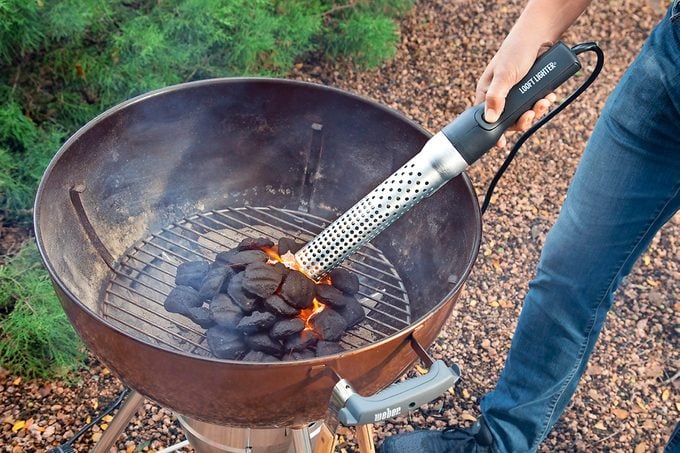 Taste of Home
Taste of Home
Just like there are different charcoals to choose from, there are plenty of methods for lighting a grill to choose from, too, including many different charcoal starters.
- Lighter fluid: This is the method most people think of when starting a charcoal grill. Start by pouring your charcoal into the belly of the grill and shaping them into a mound. Then spritz the lighter fluid evenly over the coals and let it absorb into them for about 20 seconds. Then toss a match into the bowl and let ’em go. When the coals are white-hot, you can shift them around in the base of the grill and get to work.
- Chimney starter: Picky grillers are sensitive to the flavor of lighter fluid, so fluid-free methods of starting a grill are very popular, including the chimney starter. To use, crumple a sheet or two of newspaper into the bottom of the chimney and fill to the top with charcoal. Light the paper at the bottom and let this heat up until the coals are white—about 20 minutes. When ready, pour them into your grill kettle and start to cook. (Psst! Did you know you can turn your kettle grill into a pizza oven with just one simple kit?)
- Electric charcoal starter: If you’re a gadget-loving griller, try an electric charcoal starter. To fire up the coals with one of these (our Test Kitchen likes the Looft Lighter), mound your charcoal in the kettle of your grill and touch the gadget to your coal. The starter will help the coal catch and you’ll be ready to grill in no time.
- Strike-able fire starters: You can also try a strike-able charcoal starter like these from Diamond. These fire-starting sticks ignite like a match and burn down with your charcoal. To use them, form a well in your charcoal, strike the fire starter and let it do its work. When the coals are white-hot, redistribute them in your grill as needed and grab some brats.
Color is a great indication of how hot the coals are. Aim for white to glowing red for cooking (you don’t want to see a lot of dark gray or black when you start to cook).
You can also tell if the grill is ready by hovering your hand about four inches over the coals. If you can comfortably hold it there for more than five seconds, your coals still need to heat up. If you can keep your hand hovering for about two or three seconds, that’s the sweet spot for grilling.
Also when you’re lighting your grill—and cooking and cooling it down—be sure to follow these grill safety tips.
How to Get Grilling
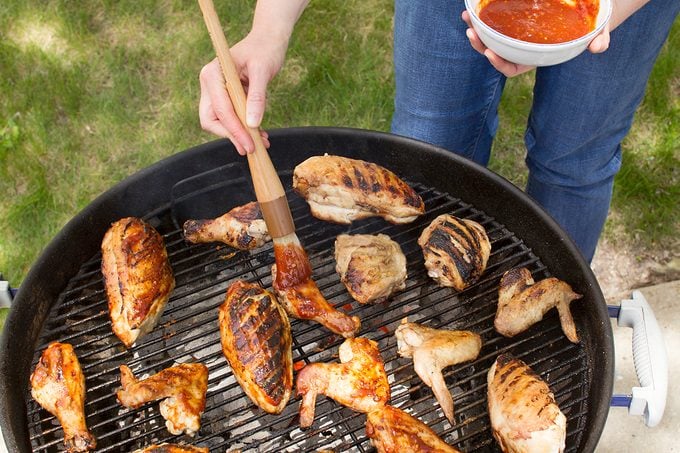 Taste of Home
Taste of Home
Prep Your Grill Grates
Before you grill, it’s a good idea to season your grill grates. That means cleaning the grates and then giving them a spritz with an oil with a high smoke point, like canola or vegetable oil.
This quick coating of oil will prevent food from cooking and will help season the grates the same way you’d season a cast-iron skillet.
Arranging Your Coals from Direct and Indirect Heat
While you might think that you want to cook everything from hot dogs to kabobs right over the coals, that’s not always the case.
Inside your grill, you’ll want to push your charcoal to one side. This area will be hotter and is where you’ll do all your direct heat grilling. Foods that should be grilled with direct heat are sausages, kabobs, shrimp and any food that you want to be seared like steaks.
The side without the coals will still be hot, just not scorching. This is the indirect heat area. Use indirect heat to grill foods that take 20 minutes or longer to cook like larger or tough cuts of meat. You can also use the indirect heat area of your grill to keep foods warm.
Charcoal Grilling Basics
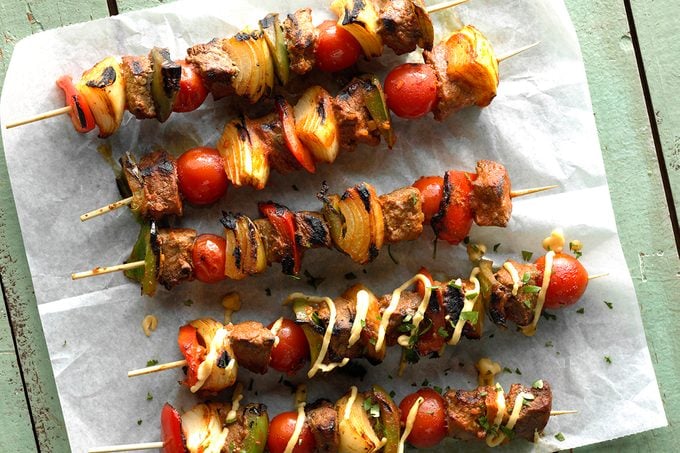 Taste of Home
Taste of Home
When it comes to learning how to use a charcoal grill, there are a few best practices to follow so your grilling recipes turn out mouthwateringly well:
- Turn food only once (if possible): Just like when searing a good steak in a cast-iron pan, it’s best not to fuss with what you’re grilling too much. Try to cook your food—whether it’s a brat or a veggie kabob—halfway through on one side and then flip. Ideally, you should flip your food just once for the best cook and the best grill marks.
- Don’t press on your proteins: As tempting as it is, do not press down on your burgers or steaks. Yes, the sizzling sound is so satisfying, but pressing on your meats squeezes out the juices which can lead to a dry burger.
- Check your vents: Charcoal grills are equipped with vents on the underside and lid. You can change the positions of these vents to help with the heat. Closed vents will decrease the heat as less oxygen will fuel the fire. Open vents will give more oxygen to the charcoal so it burns hotter.
- Control the heat: The best way to keep your grill hot is to keep the lid on. This traps the heat inside so your foods cook in a timely manner. Use vents and the lid to control the heat
- Think outside the box: While hot dogs and chicken are grilling staples, you can do a lot more on your grill. Try grilling fruits or making dessert on the grill.
Learn How to Grill Everything
How to Clean a Grill
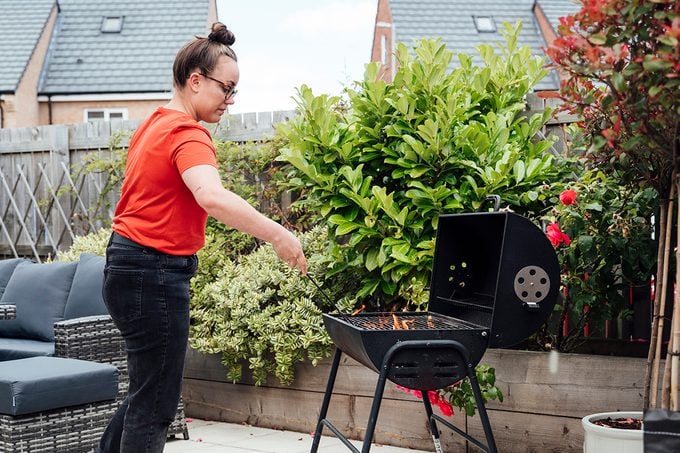 SolStock/Getty Images
SolStock/Getty Images
To keep your grill ready for cookout after cookout, you do have to give it a quick clean. Here’s how to clean a grill to keep it ready for a summer full of barbecues.
- Brush the grates: After you’re done cooking and while the grate is still hot, use a grill brush to clean the grate of any major debris. The heat will make some of the baked-on mess easier to remove.
- Clean the grates: If the grates are still a bit grimy after brushing, you can give them a serious clean by soaking them in hot water and dish soap. Use a good dish scrubber to get rid of any extra dirt.
- Remove the ash: When the grill is completely cool, remove the grates and empty out any ash or leftover coals into a metal container.
- Clean the interior: If you notice the bowl of your grill getting a little grubby, use a wire brush or steel wool to get rid of any stuck-on mess. For a deep clean, scrub the interior with warm water and dish soap, then rinse.
- Wipe the exterior: Keep the outside of your grill looking shiny by giving it a quick wipe with warm water and soap.
You don’t need to complete every step every time you grill, but it’s a good practice to at least make sure you’re starting with clean grates each time—this will prevent any flame flare-ups. And if you want your grill to keep looking its best, be sure to store it in a garage or shed when not in use. You can also invest in a grill cover.
Choosing a Charcoal Grill
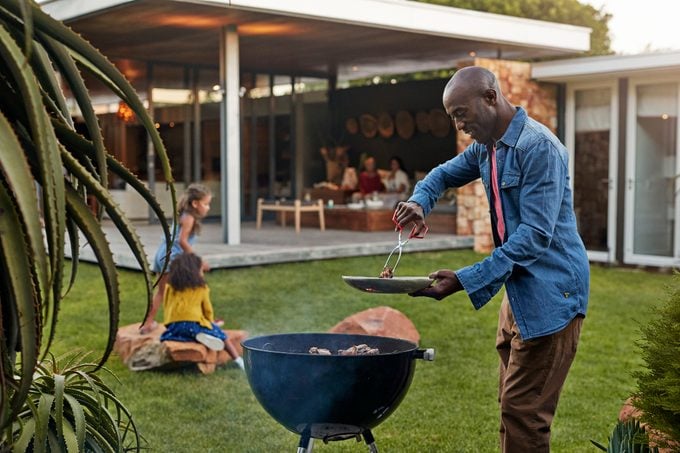 Klaus Vedfelt/Getty Images
Klaus Vedfelt/Getty Images
If you’re looking to buy a grill or just upgrade the one you have, there are a few criteria to keep in mind.
- Shape: You’ll find charcoal grills in many shapes and sizes. Round kettle shapes are very common, though you can also find barrel-style, rectangular and square grills. Any shape will work, but you may prefer one based on what suits your yard, storage space and cooking style.
- Surface area: Grills come in all sizes. Make sure you’re buying one with enough space for your needs.
- Ease of cleaning: Charcoal grilling is a messy business. Look for models that give easy options for cleanup including ash containers.
- Price: Charcoal grills vary greatly in price. The classic Weber kettle grill (one of our Test Kitchen’s favorites) starts at around $100 and is a great option for amateur and pro grillers alike. You’ll also find some pretty fancy charcoal grills out there nearing the $1,000 mark. It’s all up to you and your budget.
Grill Tools and Accessories
The great thing about charcoal grilling is that you can do a lot with just a few simple tools. You can also invest in a lot of fun gadgets once you get more serious.
Basic Grilling Tools
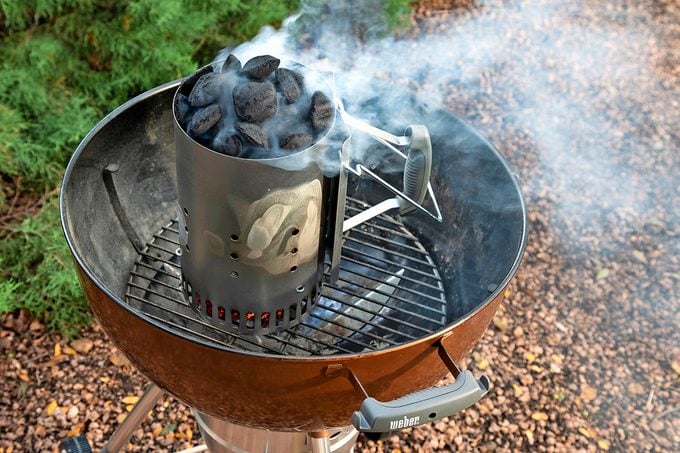 Taste of Home
Taste of Home
- Spatula and tongs: Make sure you have a spatula and tongs for flipping burgers, turning sausages and grilling corn. Extra-long handles keep your hands away from the heat.
- Grill brush: A good wire brush will take care of cleaning away a lot of burnt-on grime. Don’t start grilling until you’ve got one of these ready for cleanup duty.
- Meat thermometer: Getting the temperatures right on your proteins is crucial. To make sure that steak is medium-rare and your grilled pork tenderloin is done, you’ll want a good quick-read thermometer.
- Chimney starter: These chimney starters are great—even for beginner grillers. For about $20 you can start your charcoal grill without chemicals.
Next-Level Grilling Accessories
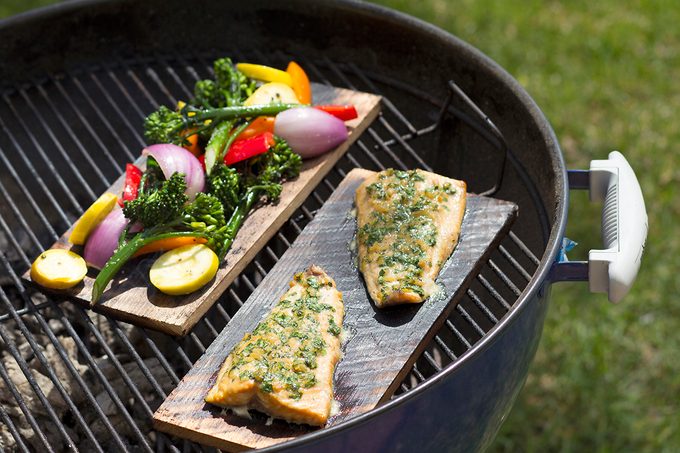 Taste of Home
Taste of Home
- Electric charcoal starter: Avid grillers will definitely appreciate this gadget. A Looft Lighter charcoal starter fires up the grill in seconds and is pretty darn fun to use.
- Grilling planks: You can give food more flavor with plank grilling. Wood planks are great for grilling fish and veggies. Using different planks, like cedar or maple, can really highlight your ingredients. They’re a fun grilling extra to experiment with.
- Grilling basket: A heavy-duty basket like this one from All-Clad is a great addition to your collection of grill gear. Easily contain ingredients that might normally fall through the grates inside the basket. This works especially well with grilled vegetables.
- Grill light: You might wonder why you never thought of this one before! A grill light helps you see what you’re doing once the sun sets—perfect for later in the grilling season.
- Hardwood charcoals: Some serious grillers think of charcoal as another ingredient for their favorite grilled recipes. You can impart different flavors with different types of wood. Cowboy Charcoal makes several options including mesquite, applewood and hickory.
- BBQ mop brush and basting pot: For many, grilling is synonymous with barbecue. If you like to cover your ribs with plenty of sauce, a good mop brush will do the job. Its bristles are designed to soak up lots of your favorite barbecue sauce to coat whatever it is you love to grill.
See More Grill Accessories
Put Your Skills to Use with 100 Grilled Recipes
Margarita Chicken
You're going to be drinking margaritas this summer anyway, so why not take it a step further? By marinating your chicken in margarita mix, you get a really nice lime flavor that's enhanced with garlic.
Go to Recipe
Kentucky Grilled ChickenKentucky Fried Chicken? What about Kentucky grilled chicken! The basting sauce is a simple combination of Worcestershire sauce and hot sauce that's the perfect complement to any outdoor meal.
Gourmet Burgers with Sun-Dried TomatoGuests will never see this coming! The goat cheese filling in these burgers is a pleasant and refreshing surprise. In comparison to American cheeseburgers, these really do feel gourmet!
Grilled Corn in HusksYou know it's summer when you can finally enjoy a nice corn on the cob. No need for anything crazy; some butter and parmesan are enough to make this side dish a masterpiece.
Feta Salmon SaladThis simple
grilled salmon salad is a whole meal. The light but effective spice blend brings out a garlic and ginger flavor. It all comes together beautifully on a bed of spring mix salad!
Steak Sandwiches with Crispy OnionsSteak with a chimichurri-inspired mayo sauce and a side of onion crisps sounds like a delightful meal. But all of that combined in a sandwich with a side of fries sounds even better! This mouth watering sandwich is a grill master's dream lunch.
Grilled Caesar Chicken BreastsMarinated overnight in creamy Caesar dressing, this chicken is tender and full of flavor. This easy grilled recipe is as good as it gets!
The Best Grilled Sirloin Tip RoastThis lean but flavorful meat is going to be the star of your next cookout! You won't regret trying it with the optional horseradish-thyme butter.
Salmon Grilled in FoilTin foil grilling isn't exactly a new technique, but this curry salmon will make you feel like you've been doing it wrong this whole time! The flaky fish is best served with potatoes or a nice salad.
Grilled Elote FlatbreadHere's a topping you haven't thought of! This fun twist on a classic Mexican dish will be your go-to snack of the summer.
Grilled Romaine SaladYou can grill a steak so why shouldn't you be able to grill a salad? The simple dressing really sends it over the top.
Grilled Onion & Skirt Steak TacosThinking about a steak taco is enough to make your mouth water. But thinking about these beer marinated tacos is enough to get you up and on your way to the store! Use leftover meat for quesadillas the next day.
Grilled Chicken SaladNever underestimate the power of a good salad. This perfect picnic meal will be your summer showstopper!
Halibut Soft TacosThese halibut tacos are almost too pretty to eat! The sweet and spicy mango salsa will have you looking up what else you can put it on. Spoiler alert: it doubles as a nice salad dressing.
Grilled Flank SteakThis sweet and tangy marinade is used for both the veggies and meat. You'll find yourself coming back to this recipe, especially when you have company coming over.
Brined Grilled Turkey BreastThis sweet and spicy turkey is super moist. The flavors are subtle, but present enough where you'll think of this recipe even around Thanksgiving.
Grilled Mahi MahiWant a change of pace at your next cookout? Grill up this mahi mahi with tropical fruit salsa and watch as everyone asks for the recipe. It's sweet, tangy and delicious!
Beef ‘n’ Pork BurgersAdding pork to your burgers is a grill master's best kept secret. The bacon really drives home the smokiness.
The Best Baby Back RibsThey're the best for a reason! The zesty ribs are always what you need them to be: tender, flavorful and great for a party.
Chicken Strawberry Spinach SaladThis sweet poppy seed dressing is everything you want in a salad and more. The grilled chicken, strawberries and almonds are the perfect combination of savory, sweet and crunchy!
Grilled AsparagusGrilled asparagus makes a perfect side dish for grilled meats. It's ready in just 20 minutes and has a nice barbecue sauce taste.
Grilled Chorizo and Shrimp PaellaThis easy shrimp and chorizo paella is a must have this summer. The mango and lime give it a tangy flavor that goes along perfectly with the grilled chicken sausage. You won't want to miss out on this colorful meal.
Artichoke Steak WrapsReady in just 30 minutes, these artichoke steak wraps are a must have! Artichokes are rarely the main event in a meal, but these wraps will have you second guessing that notion.
Lemon-Dijon Grilled Salmon Foil PacketThis tin foil salmon is a winner! With almost no clean up, you can just focus on stocking up your pantry for the next time you make this lemony dish.
Easy Grilled Corn with Chipotle-Lime ButterYou had us at easy! This Memorial Day corn has a wonderful flavor with only five ingredients! If you're not a fan of cilantro, parsley is the perfect replacement.
Grilled Steak TacosSummer goes hand in hand with steak tacos. But this recipe ranks amongst the best. With a spicy aioli and ribeye meat, you can't ask for better!
Grilled Fruit Phyllo TartFruit salad on a flaky crust? Don't mind if we do! The sweet cream cheese and lemon flavor on such a colorful spread makes it the perfect addition to any summer table.
California Burger WrapsBurgers can sometimes seem heavy, but these wraps are completely void of that feeling. With fresh ingredients and a lettuce wrapping, you won't miss the bread at all!
Bratwurst and Chicken KabobsYou can get the best of both worlds with these double meat kabobs! The chutney packs a bit of heat with the pepper jelly.
Aloha BurgersBurgers and fruit might just be your new go-to debate topic. As for us, we can't get enough of it! These Hawaiian-inspired burgers are smoky from the bacon but fresh from the pineapple. See for yourself!
Grilled BruschettaThis appetizer is perfect at any party. It's the right amount of sophistication while still remaining simple. It'll really dress up a table!
Martha’s Fish TacosAll hail Martha! These tacos are light but filling. The best part is you can serve them hot or cold.
Big John’s Chili-Rubbed RibsYou can't go a whole summer without ribs. It's impossible! So why not just have the best of the best? Now we don't know Big John personally, but we'd love to thank him for this Asian-inspired recipe.
Cajun Grilled ShrimpThis Cajun marinade is made spicy with cayenne pepper. That heat is cut through with the lemons for an explosion of flavor. You'll find yourself coming back to this recipe for sure.
Grilled Pork and Poblano PeppersThis spice-rubbed pork is not for the faint of heart. It's a party in your mouth and a party at your table! Guests will request you make it every cookout.
Grilled Lobster TailsLobster tails aren't reserved for restaurants. And they're easier to make than you think! If you find yourself ordering lobster out a lot, give this recipe a spin.
Grilled Stone Fruits with Balsamic SyrupA balsamic glaze can turn any dish from good to great. Well, maybe not any but a case can be written for salads and toast and fruit and huh, maybe that is everything. The grilled fruit practically melts in your mouth. So what are you waiting for!
Grilled PattypansIf you've never tried pattypan squash, now is the time! This side dish will change the way you think about fruits and veggies and how they can come together.
Grilled Pork Tenderloin with Cherry Salsa MoleChocolate, cherries and pork? Say no more! The hint of spice in this dish is drool inducing.
Grilled Veggie PizzaIf you have any leftover veggies on hand, toss them together on a veggie pizza. It's a fun lunch—or even dinner—for the whole family!
Lime and Dill Chimichurri ShrimpThis lime and dill chimichurri shrimp has a brighter flavor than other chimichurri dishes. This makes it all the more enticing for summer cookouts.
Grilled Italian Sausage SandwichesIf you're in the mood for Italian, you've come to the right sandwich. This meal might seem more laid back but that's exactly what makes it perfect for a hot summer day.
Spiced Grilled Chicken with Cilantro ButterOnce you've had cilantro lime butter, you'll immediately start wondering what other amazing butter flavors you might've missed out on. The spiced chicken is nothing short of a crowd pleaser.
Easy Grilled SquashThis recipe is as simple as it gets. With produce, it's best to just bask in the natural flavors and that's exactly what this side dish highlights.
Shrimp ‘n’ Scallops Tropical SaladThis zippy fruit salad is cut through with smoky shrimp and scallops. If you love seafood, you'll love this salad!
Steak Sandwich KabobsThere's nothing more fun than putting food on a stick. With bread, steak, peppers, onion and cheese, you can enjoy a whole meal on the go!
Cedar Plank Salmon with Blackberry SauceThis salmon is a nice balance of sweet, smoky and spicy. Maybe you've never thought about salmon and fruits before this moment, but now you'll only wish you'd thought of it sooner.
Grilled Basil Chicken and TomatoesThis quick basil chicken comes together with tomatoes to make a dish reminiscent of a deconstructed salad. The recipe is simple, easy and perfect for a busy weeknight.
Grilled Angel Food Cake with StrawberriesThis patriotic dessert introduces our favorite summer ingredient, balsamic vinegar, to the world of desserts. After trying this cake you'll really believe an angel made it.
Lemony Shrimp & TomatoesLemon and shrimp go together like peanut butter and jelly. This quick marinade makes for a great lunch on the go!
Grilled Huli Huli ChickenThis overnight marinated Hawaiian chicken is well worth the wait. With brown sugar, ginger and soy sauce, you can use this marinade for anything!
Tacos on a StickThese taco kabobs are as fun to assemble as they are to eat! A sour cream dipping sauce is must.
Mango & Grilled Chicken SaladWhen it's hot out, you want nothing more than to bite into a juicy piece of fruit. This mango chicken salad gives all of that and more with added crunch from the snap peas.
Beef SuyaSuya is a spiced skewer dish from West Africa, namely Nigeria. This more mild, but still spicy, version pays homage to the peanut and ginger present in a more traditional beef suya.
Grilled Vegetable PlatterYou really can't go wrong with grilled veggies. This simple honey and balsamic vinegar marinade proves once again that balsamic vinegar is the secret to a great cookout.
Cola BurgersPeople soak their meat in sodas all the time so why not just put it in a sauce? French salad dressing and cola meet to make a smash hit!
Grilled Honey-Balsamic Glazed FruitSweet and salty lovers unite! We might have just found your new favorite dessert. Peaches with honey and balsamic vinegar is the best way to end a barbecue.
Easy Marinated Grilled Flank SteakThis three-ingredient marinade will be your new go-to for steak. You probably already have the ingredients in your pantry!
Grilled Chicken and Mango SkewersThese skewers bring all the best flavors of summer together. This colorful plate is as Instagram-worthy as it is tasty.
Fresh Artichokes with Lemon-Yogurt DipArtichokes are made to be enjoyed simply and with this tangy lemon-yogurt dip you can do just that. The perfect appetizer for an epic cookout, you won't want to underestimate the veggie again.
Grilled Peach, Rice & Arugula SaladOne reviewer wrote that she'd give the recipe 10 stars if she could, and we couldn't agree more! This summer salad is not a want but a need. The grilled peaches are an impeccable touch.
Hawaiian Beef SlidersYou wear a jacket when it's cold just like you eat pineapple when it's hot. And what better way to enjoy it than in one of these dynamite burgers? They're sweet and savory with a nice kick from the jalapeños.
Ginger Salmon with Cucumber Lime SauceWe're always looking for more ways to dress up salmon. And you can't disappoint with lime and ginger! This winning combination is well seasoned and colorful.
Grilled Figgy PiesA figgy pie is exactly as it sounds: a combination of figs, maple, walnuts and creamy mascarpone. These hand held pies will go fast!
Key West Flank SteakAnyone from Florida knows you can't have a steak without onions and lime. Even better if it's served with a side of rice and fried plantains.
Bacon & Swiss Chicken SandwichesThis chicken sandwich is restaurant quality! And just when you thought it couldn't get any better, you can make extra honey mustard on the side for dipping.
Grilled Brussels SproutsI don't know about you, but I'm feeling like I could eat all four servings of these kabobs myself! The Brussels sprouts and peppers are light with a bit of a kick.
Cake & Berry Campfire CobblerYou know what cookouts need more of? Desserts! This cobbler is the best way to close out the night.
Chicken Skewers with Cool Avocado SauceThe slightly hot chipotle-lime chicken skewers cool down immediately with the avocado sauce. The sauce is creamy and addictive!
California Burger BowlsLike Chipotle, you can choose whether to have your burgers as is or in a bowl. The difference is that in a bowl you can really load them up! Veggies and even fruit can adorn your hamburger bowl.
Grilled Sausage-Basil PizzasThese little pizzas will change the way you plan a cookout. Made on flatbreads or naan, they're fun for the whole family. So go as crazy as you want with toppings!
Grilled Jerk Shrimp Orzo SaladStarting with the orzo and ending with the shrimp, this salad has everything we love! It's easy, delicious and made with any veggies and meats that you have on hand.
Tarragon AsparagusAsparagus is an underrated veggie that rarely sees new ways to eat it. Until now! This tarragon-honey marinade is exactly the change of pace we were looking for.
Honey Chipotle RibsThese honey chipotle ribs are lip-smacking good! The sauce can be made up to a week in advance for the perfect grilling experience.
Stuffed Grilled ZucchiniThese zucchini boats are stuffed with cheese, garlic, onion and breadcrumbs. They're the perfect accompaniment to your favorite grilled meat!
Tomato, Avocado and Grilled Corn SaladSomething about this salad feels like laying on the beach. It's refreshing, it's warm and it feels like summer!
Chicken Alfredo with Grilled ApplesYou wouldn't normally think that Alfredo and apples go together but once you try it you won't go back.
Sweet Sriracha WingsThese sweet and hot wings are going to make a splash at your next outdoor party. They're made sweet with orange juice and honey. It sounds unlikely but somehow makes perfect sense!
Cilantro Lime ShrimpThis garlic and lime marinade will wow at your next cookout. The flavor is spot on and the preparation is easy enough to add it into your meal rotation.
Chicken and Zucchini Foil PacksYou can make this foil wrapped dinner with any vegetables you have on hand. But over the summer, we can't resist a zucchini dinner! It's nice and simple with the tomato paste giving it a spaghetti sauce flavor.
Honey-Mustard BratsThis honey mustard is given an extra bite with mayo and steak sauce. The quickly assembled brats make for a simple but unforgettable meal.
Bruschetta from the GrillYou can't go wrong with this five-star recipe! Dijon mustard, mayonnaise and oregano make a magical spread.
Lemon Garlic MushroomsThese lemony grilled mushrooms might take some of the spotlight off the main course. They're just that good! Skewers ensure that they're grilled to perfection.
Jalapeno Popper Mexican Street CornCombine your two favorite summer snacks in one with this jalapeño popper corn! It's the BOGO you've been waiting for with all the crunch and spice you could ask for.
Crab & Shrimp Stuffed SoleTurn your cookout into a five-star restaurant with this seafood stuffed sole. Just add a salad and baguette, and you're all set.
Grilled Chicken Salad with Blueberry VinaigretteYou've seen peaches on burgers and mangoes in salsas, get ready for the best of the best. This contest-winning blueberry vinaigrette will change the way you view fruit in salads.
Grilled CabbageYou'll be surprised by how good this is. Gone are the days of begging your kids to eat their veggies. With this on the side, their plates will be cleared!
Grilled Southwestern Potato SaladThis potato salad is the best side dish for some classic steak tacos. With sour cream, corn and lime, it has a nice pop to go with your Tex-Mex dinner.
Spicy Grilled EggplantThis Cajun grilled eggplant is the most versatile dish of the season. It pairs well with any meat and takes up way more space than your average veggies.
Grilled Apple Tossed SaladApples and bleu cheese? Yes please! This salad is a beautiful storm of crunchy, sweet and savory toppings. The balsamic dressing is the glue that ties it all together.
Grilled Steak and Mushroom SaladSteak and mushrooms are an unbeatable combination. This light dinner is packed with protein while still tasting like a vinegar-Dijon dream. If you enjoyed this, then you must try our favorite
vegetarian grilling recipes.
Bratwurst SupperLooking for a cozy campfire dinner? Well look no further! This all-in-one meal is made special with a secret ingredient: love! Just kidding, it's an onion soup packet. But close enough, right?
Fruit ‘n’ Cake KabobsWe love grilling and we love cake. So grilled cake has to be a stroke of genius, right? These fruit and pound cake kabobs are everything you didn't know you were missing.
Burger AmericanaEver had peanut butter and bacon on a burger? What about coleslaw? Try out any toppings that strike your fancy with these versatile, everyday burgers.
Grilled Loaded Potato RoundsMeet your new go-to recipe for outdoor potlucks! These easy sides can be topped with anything you like on your baked potatoes.
